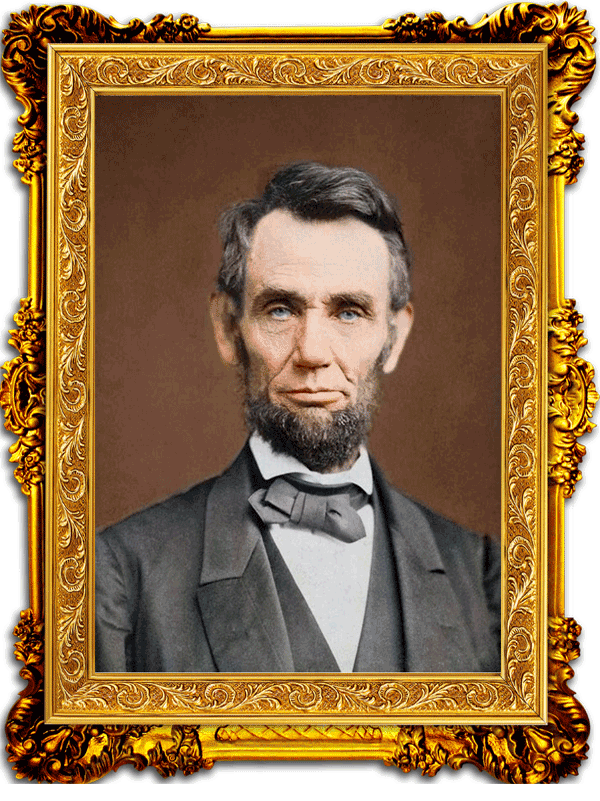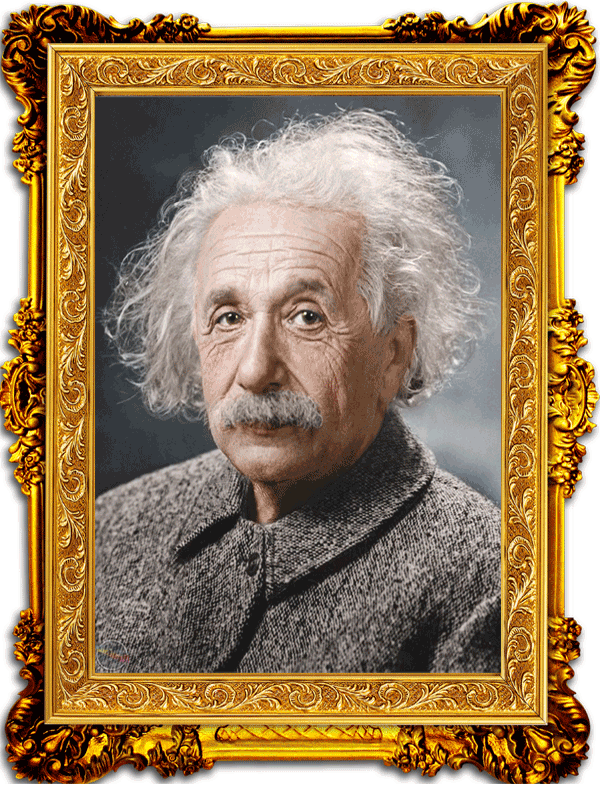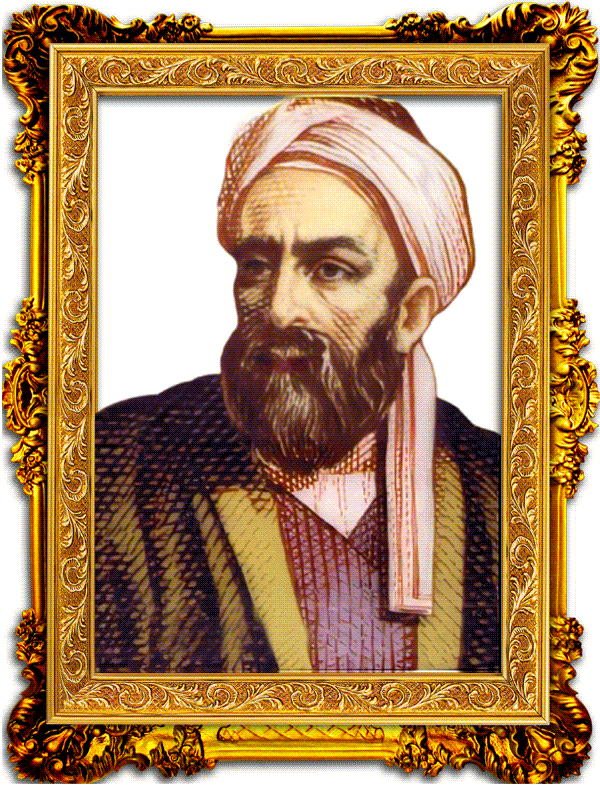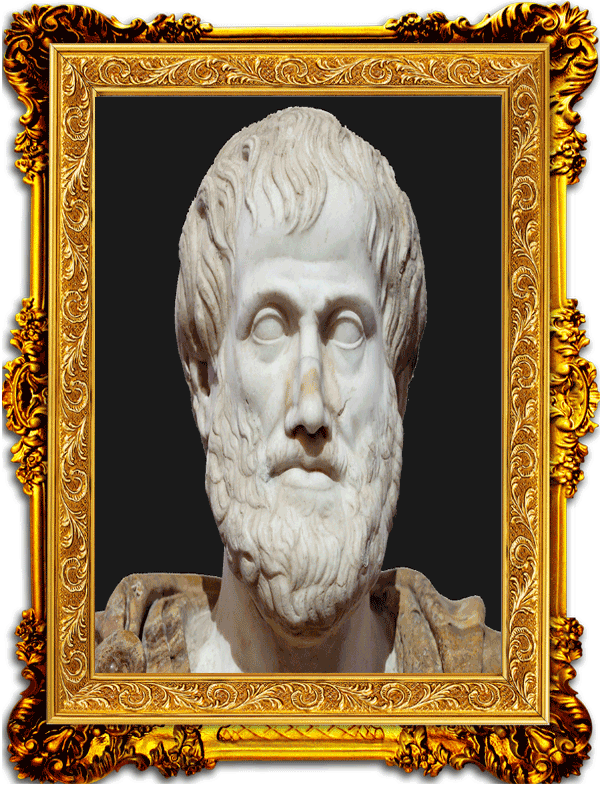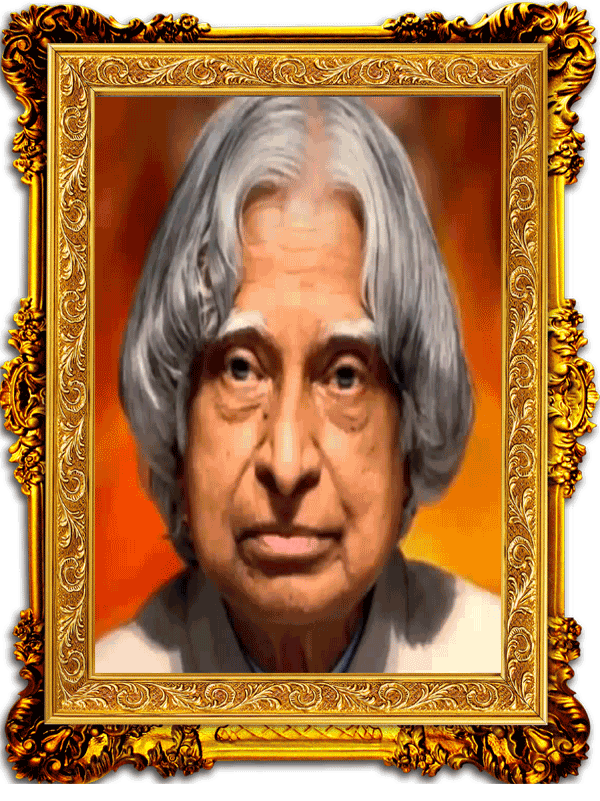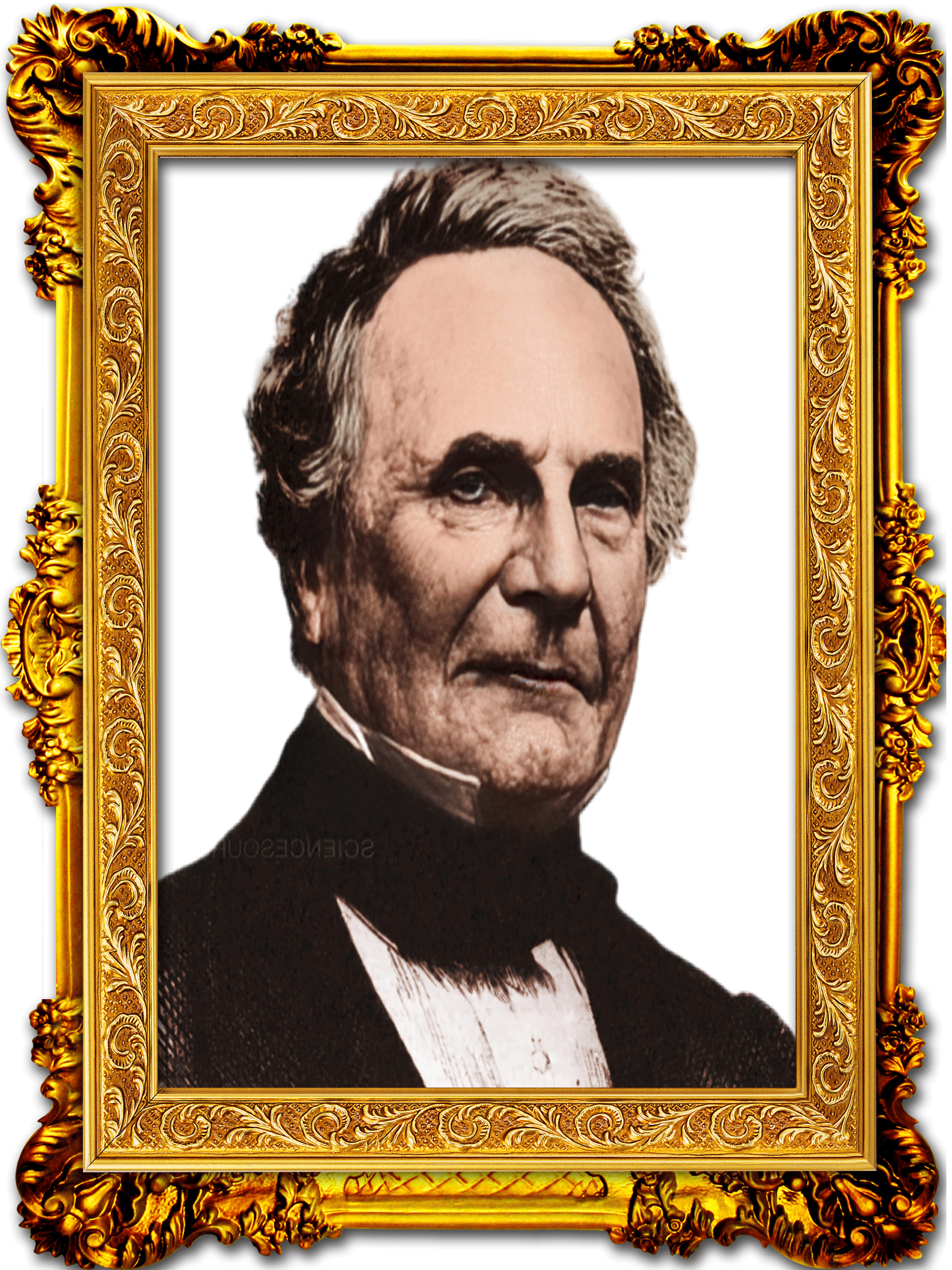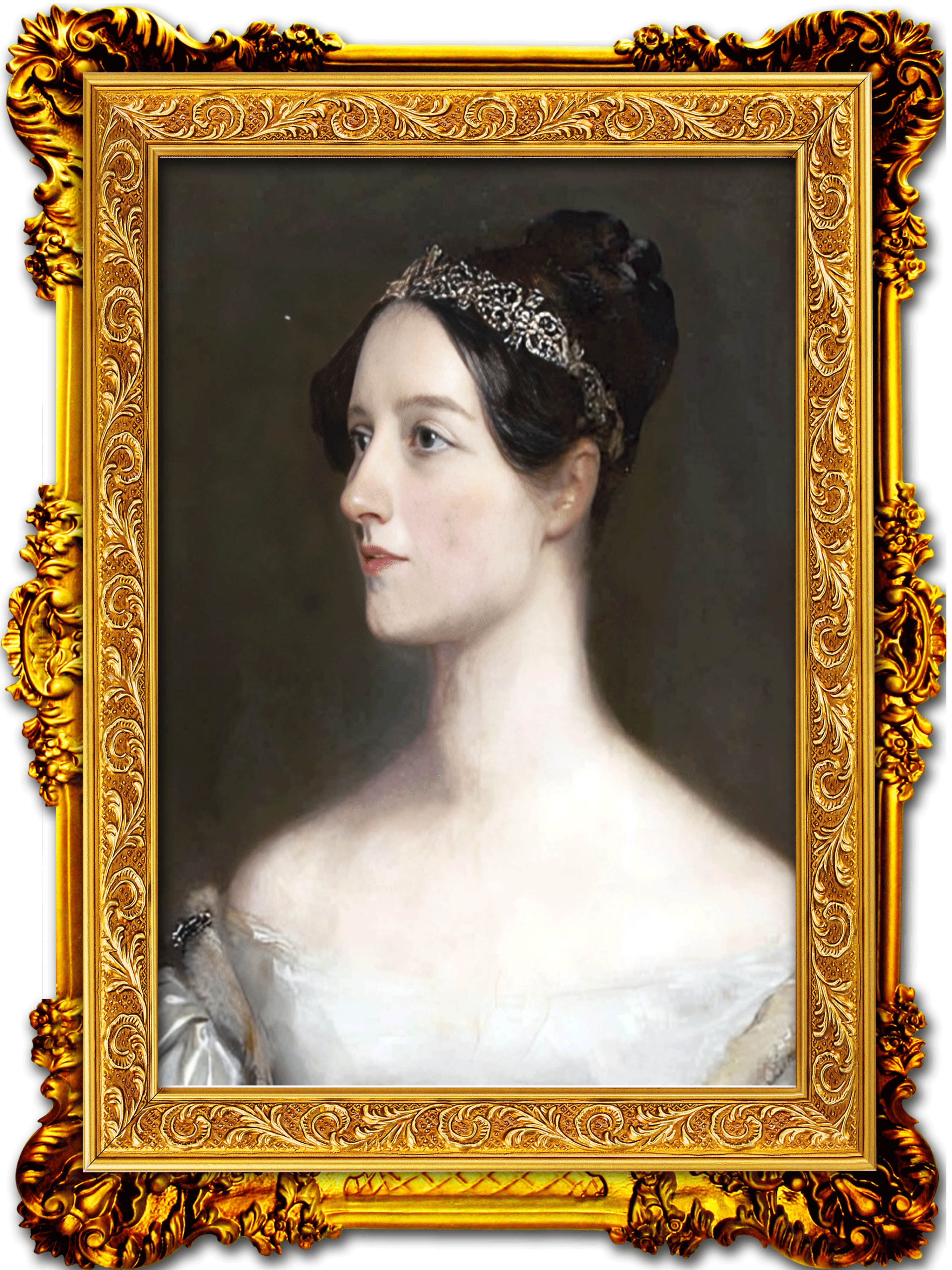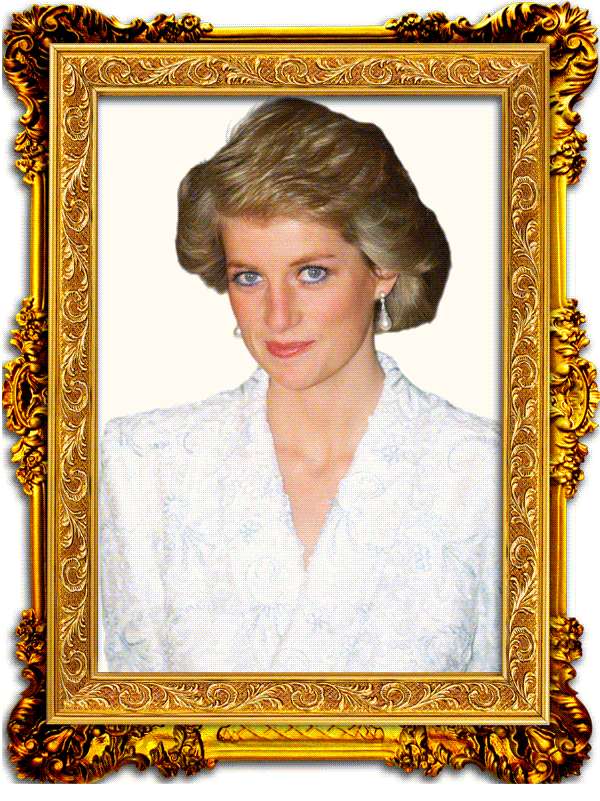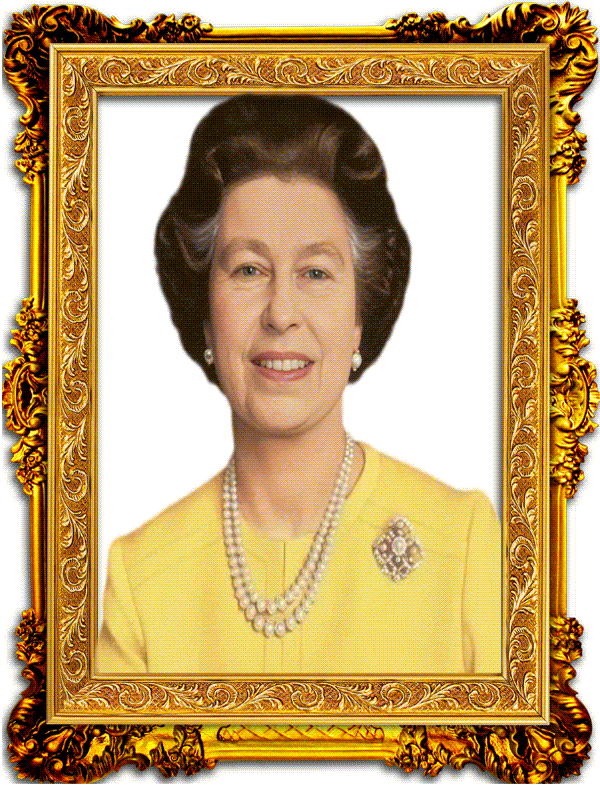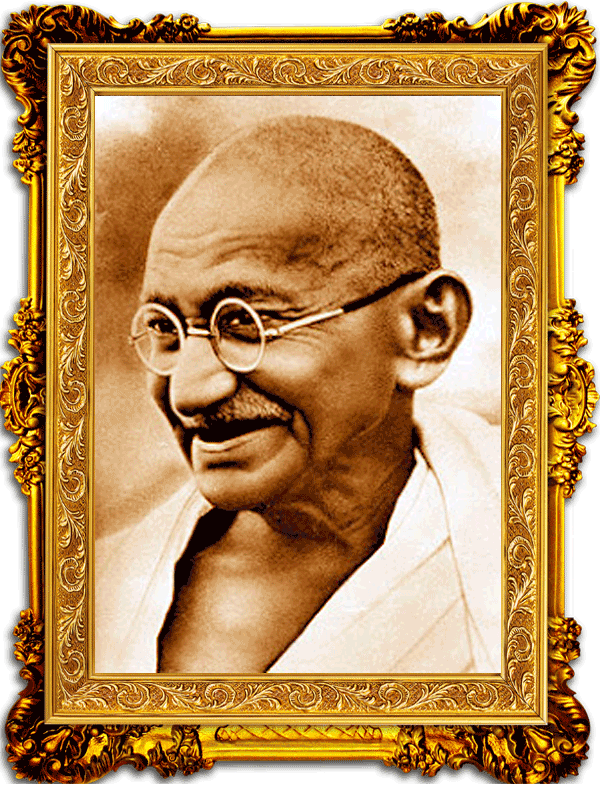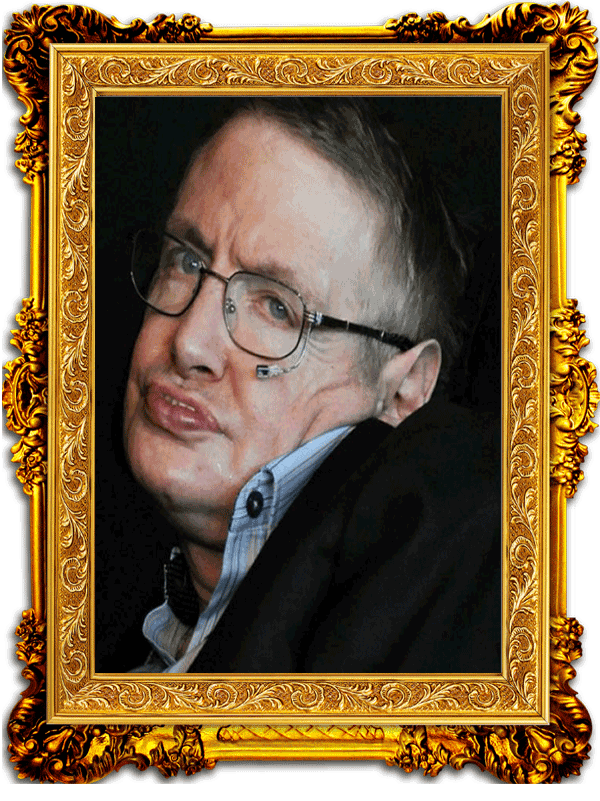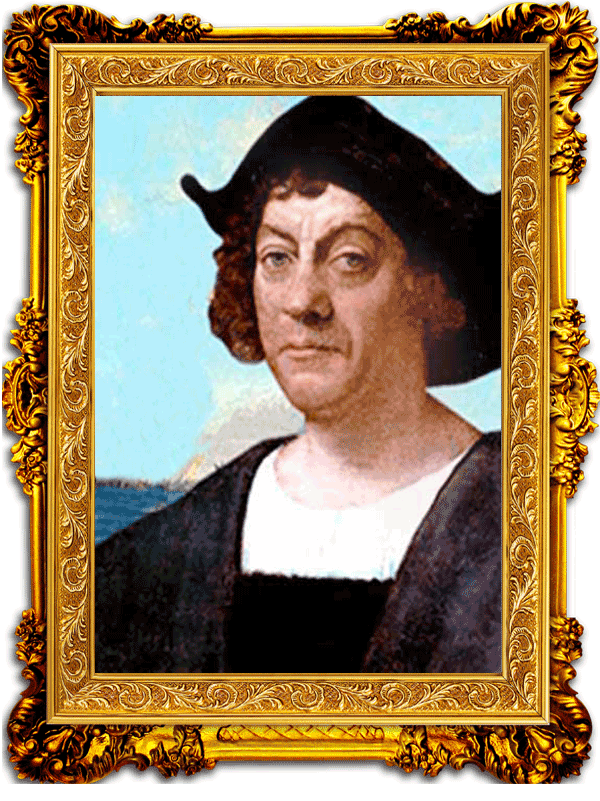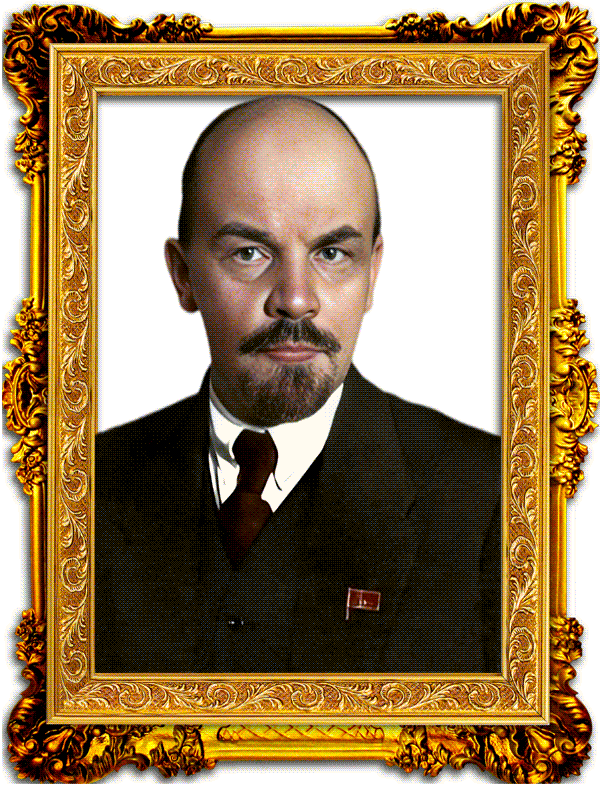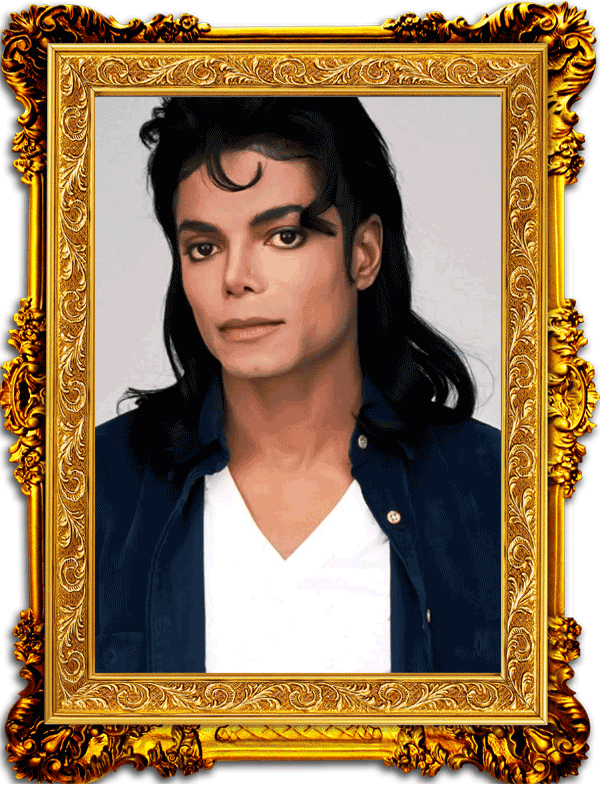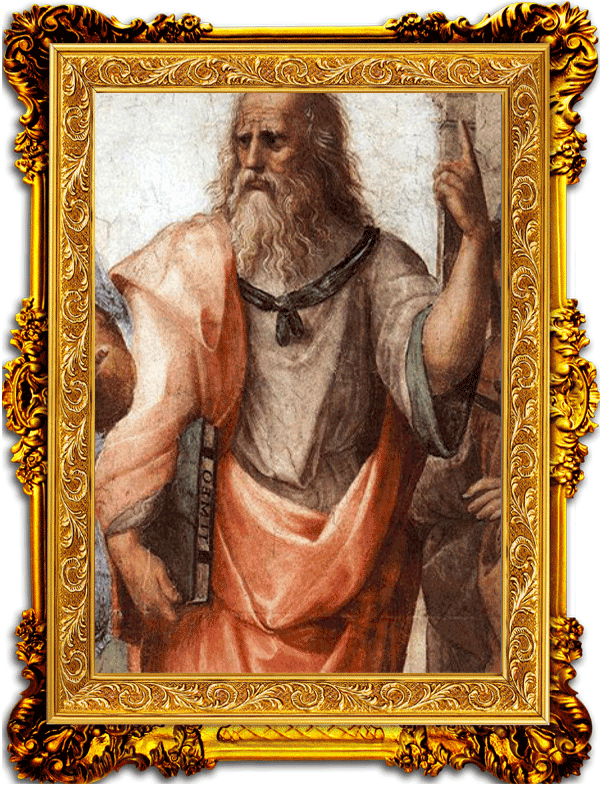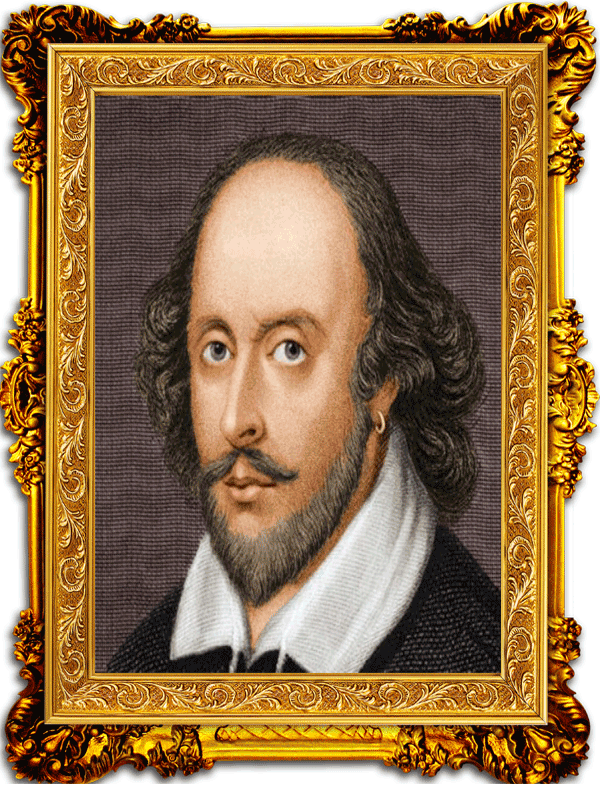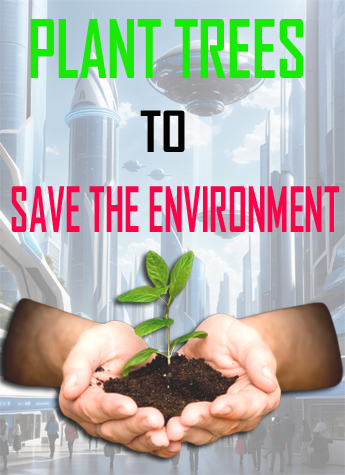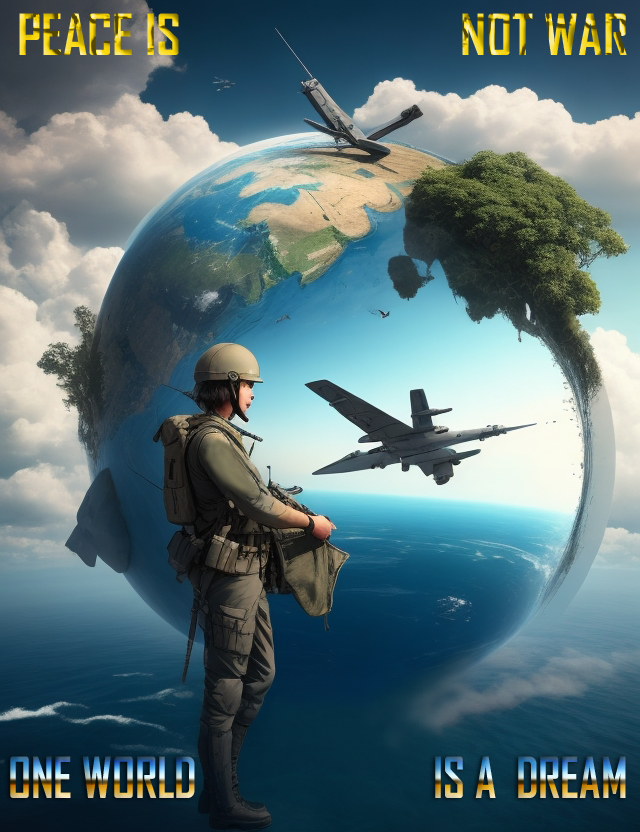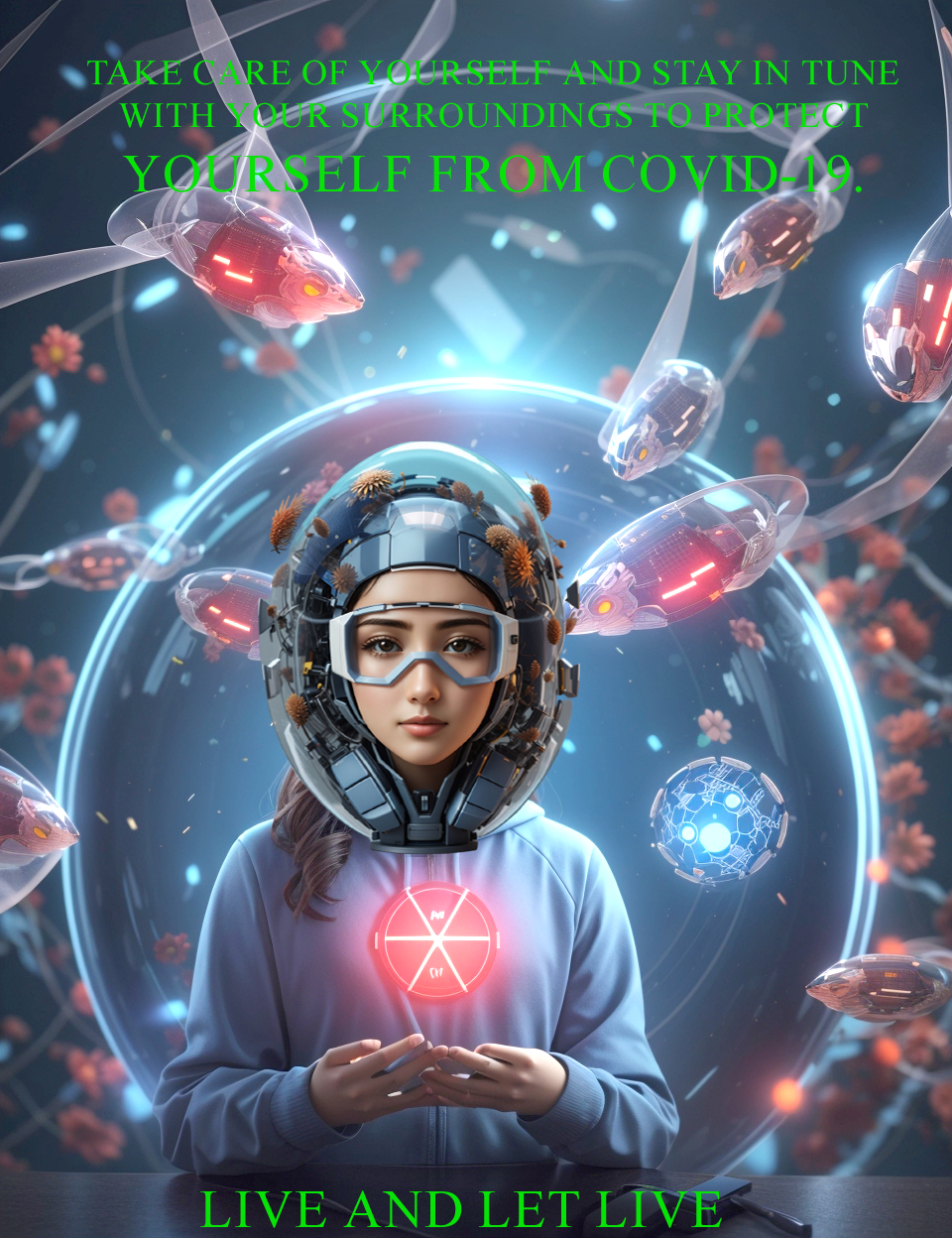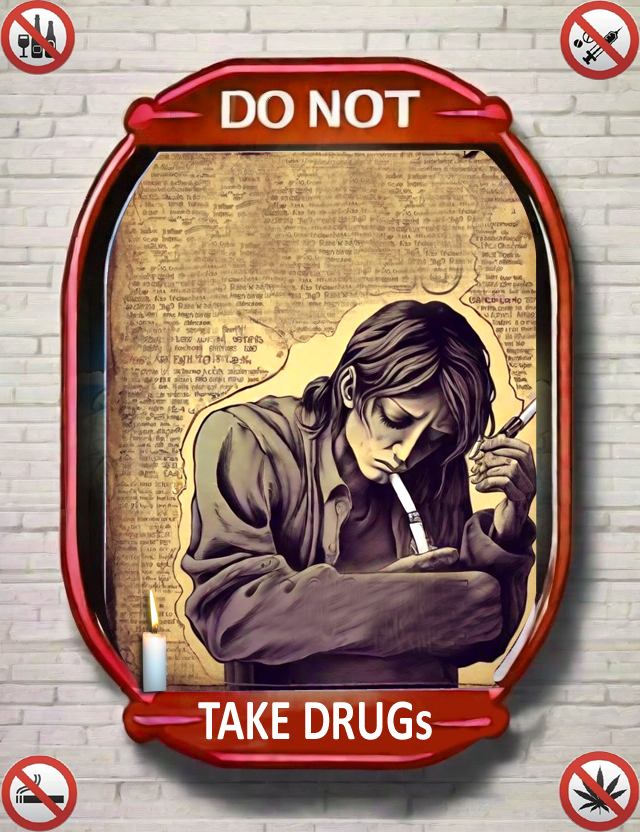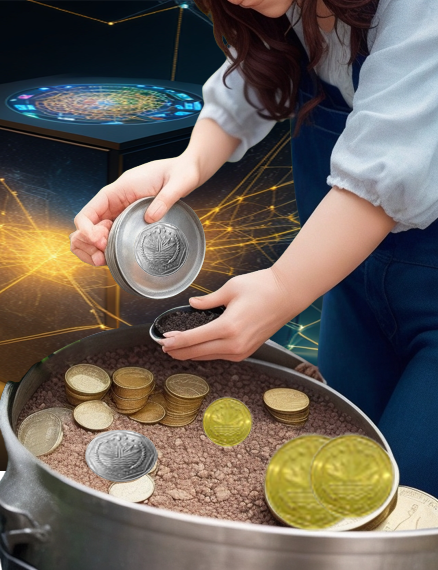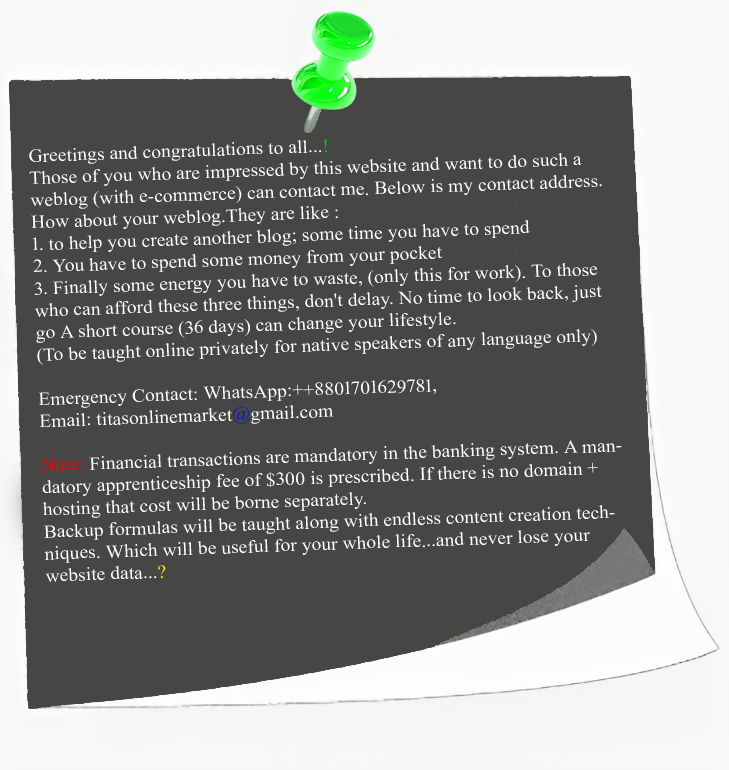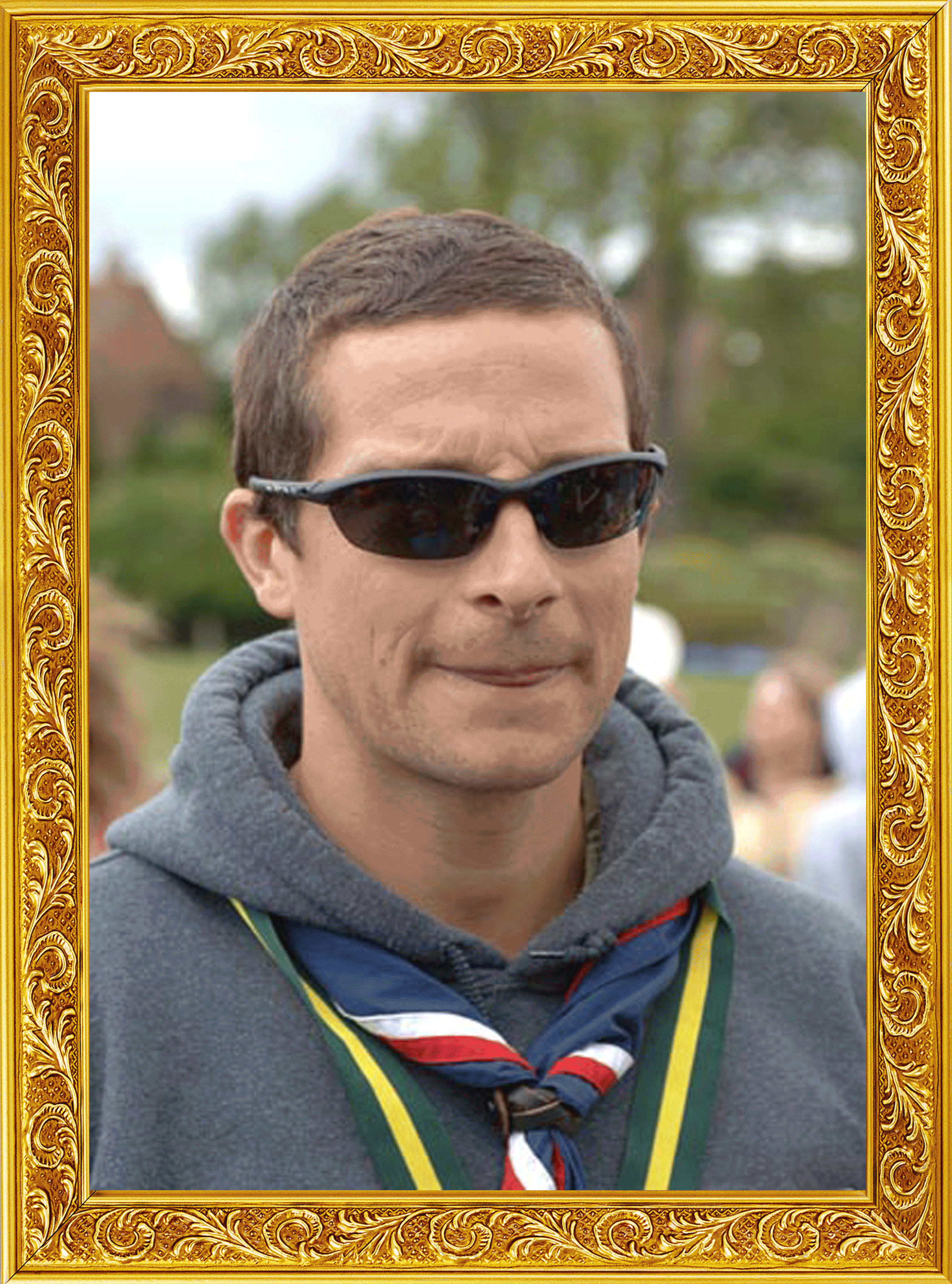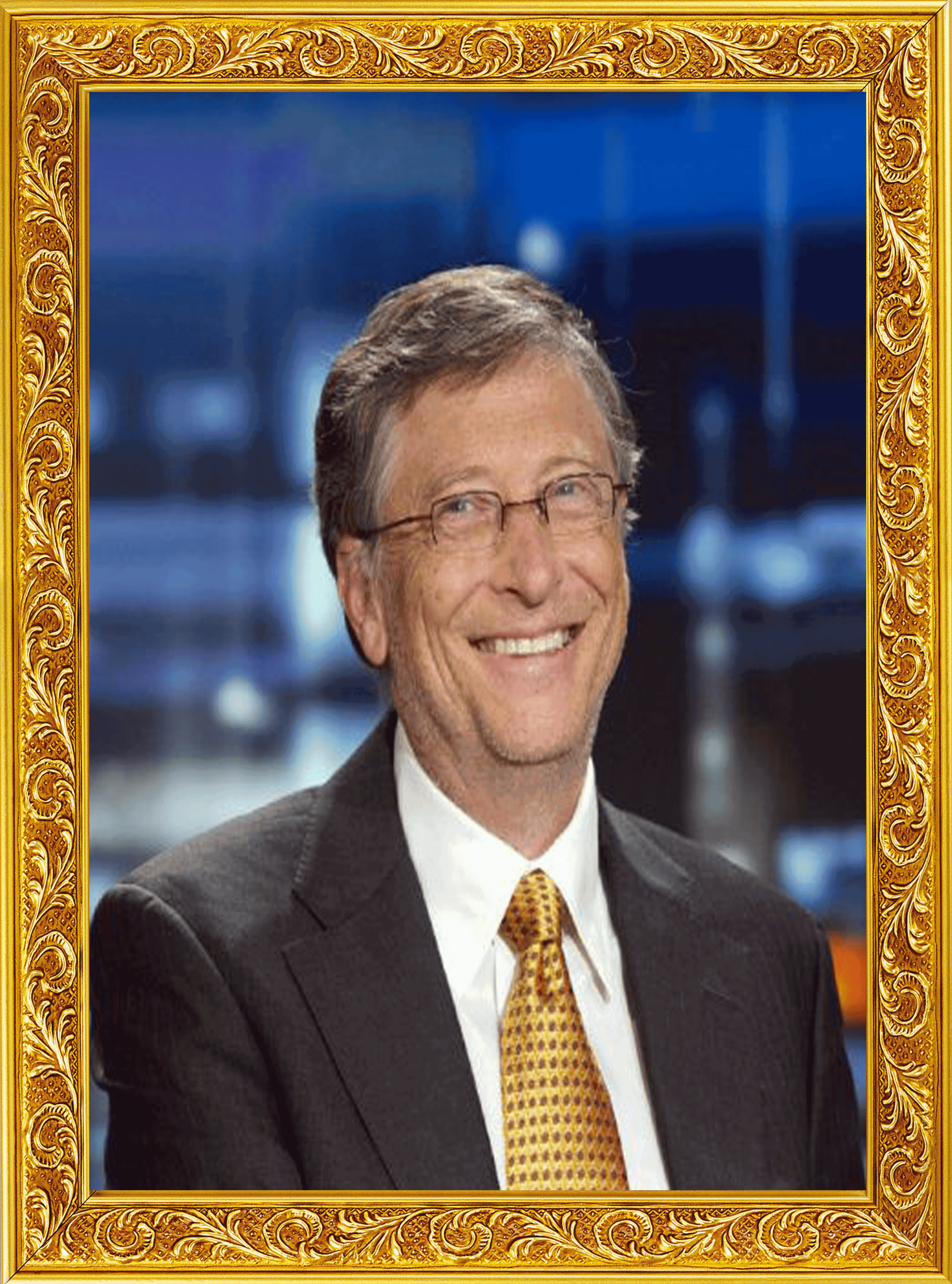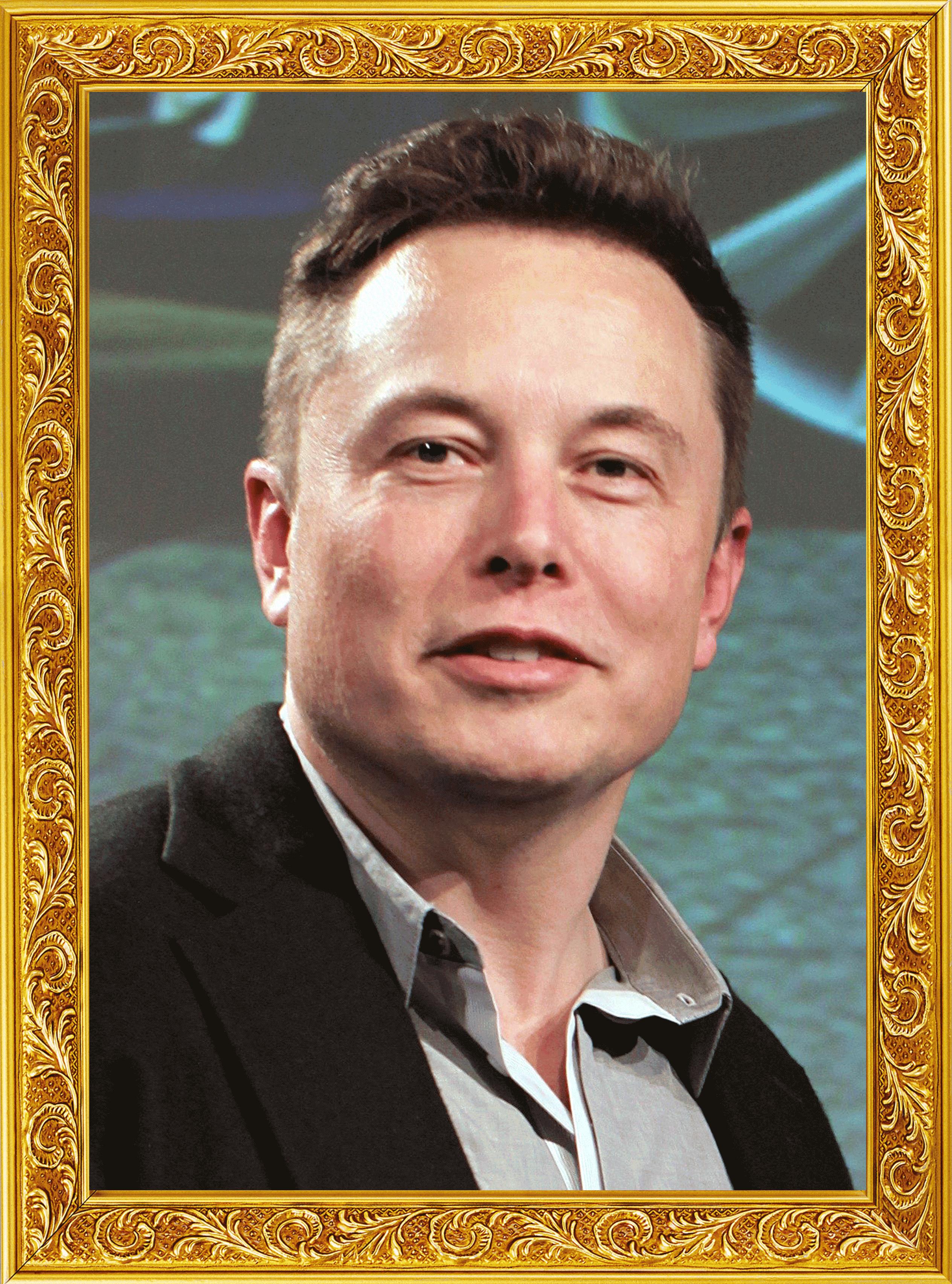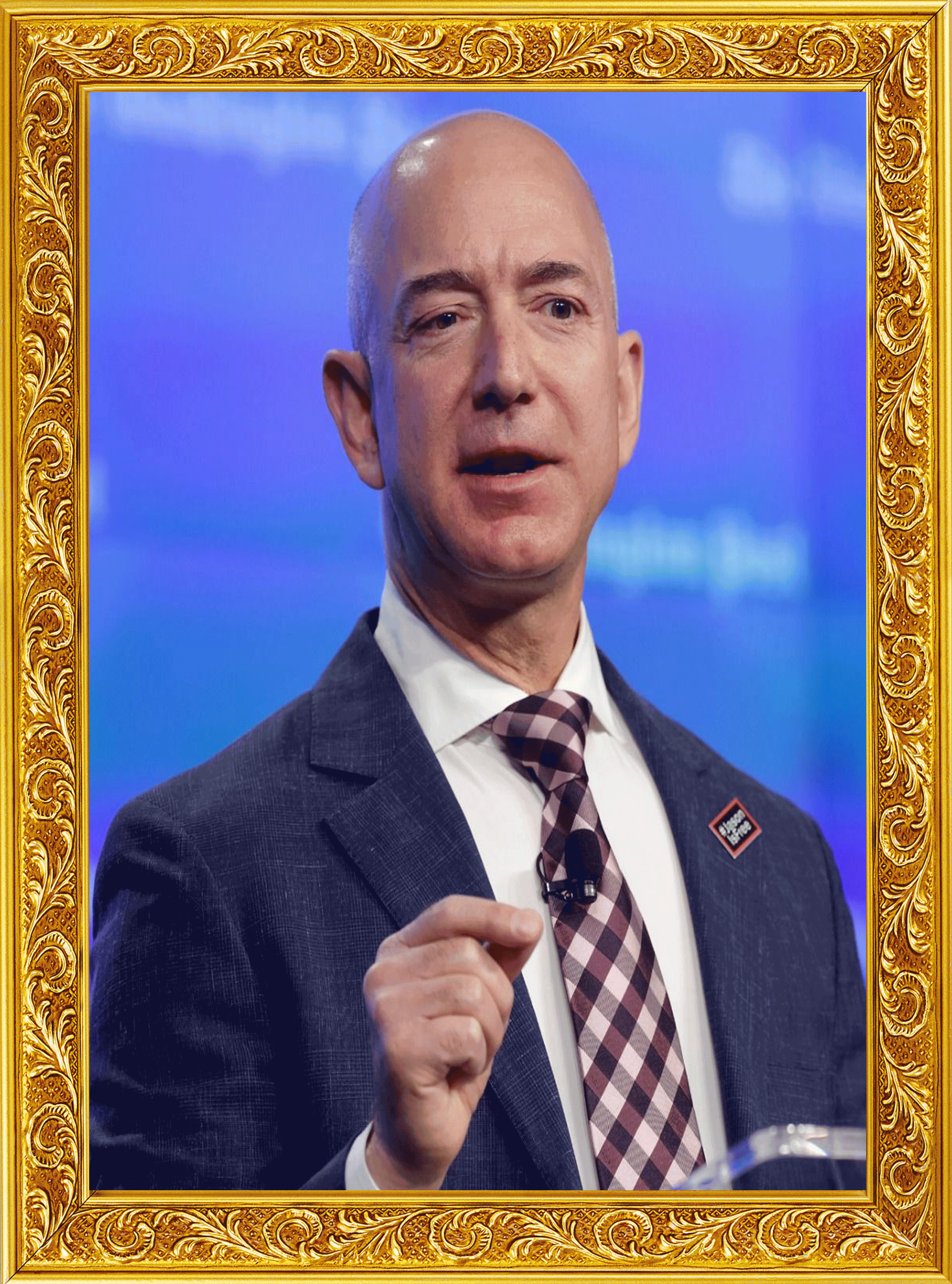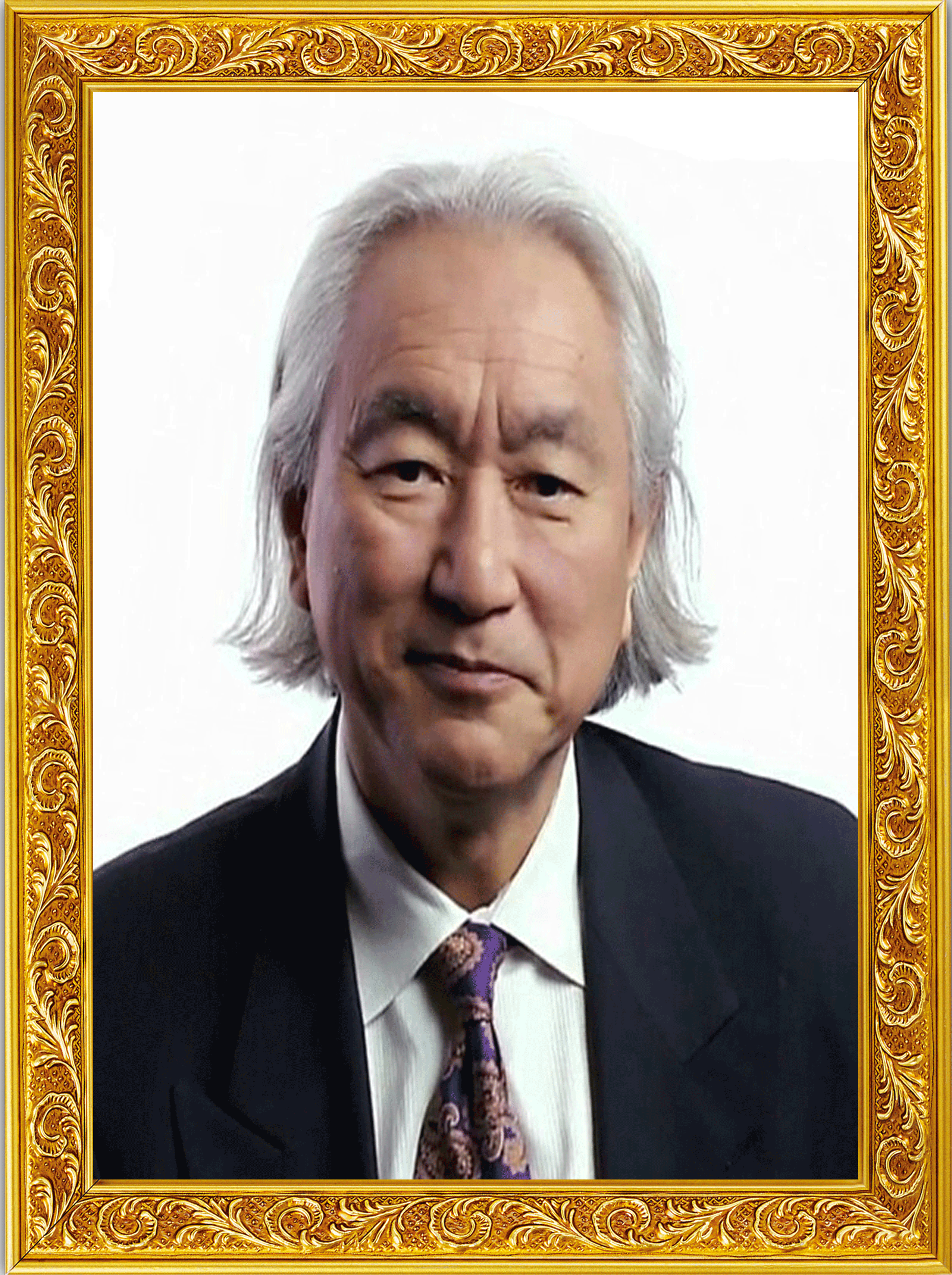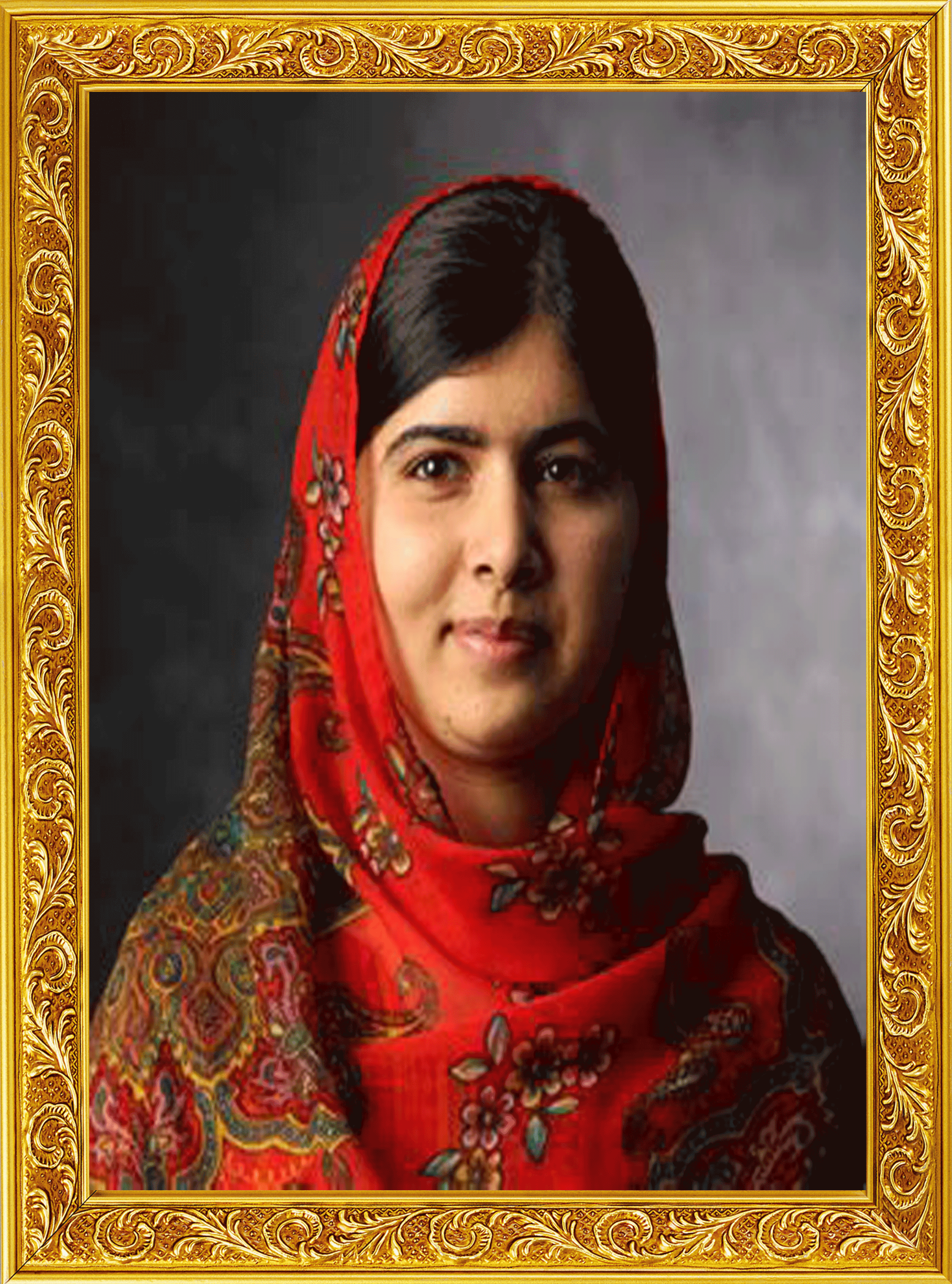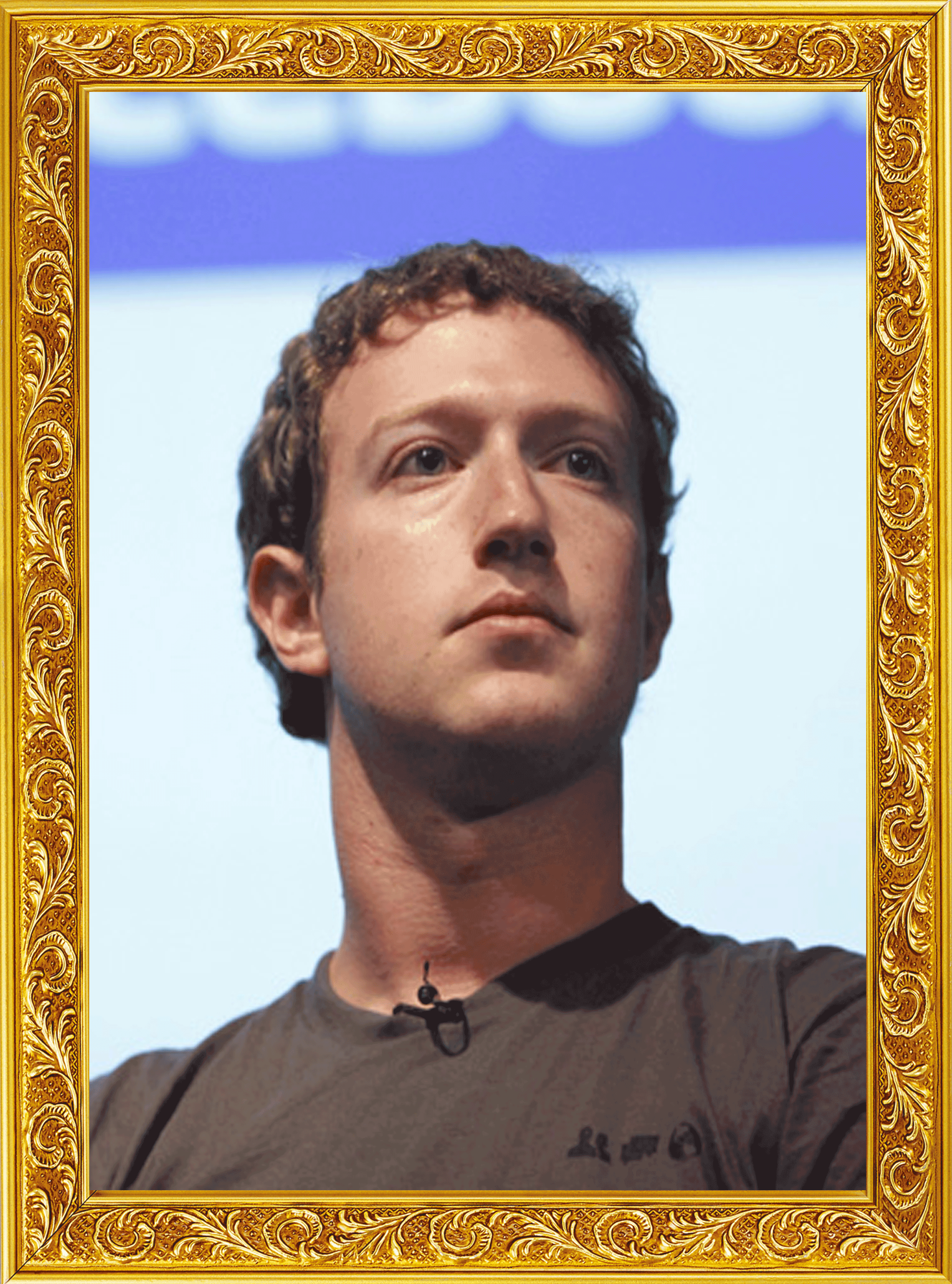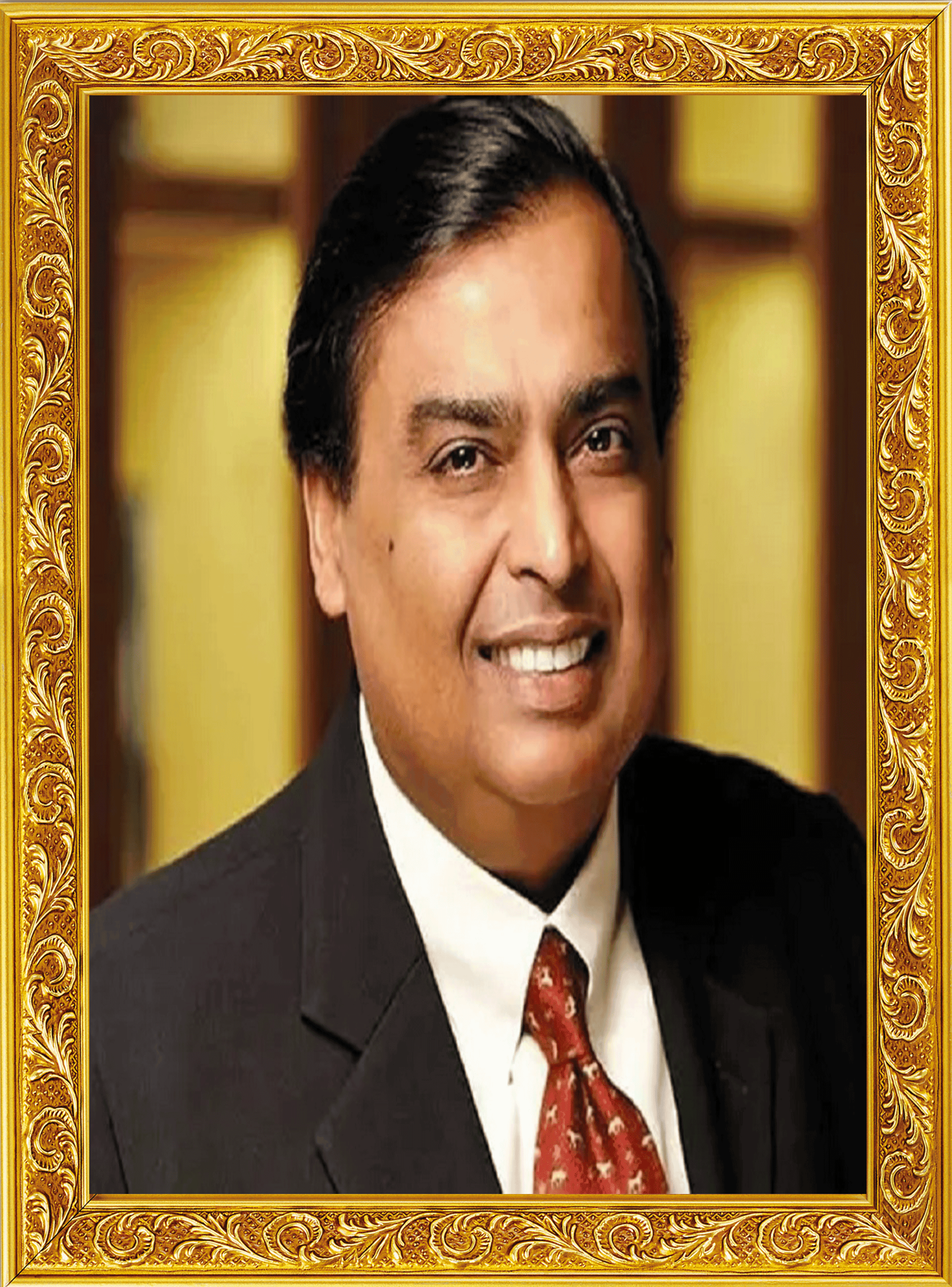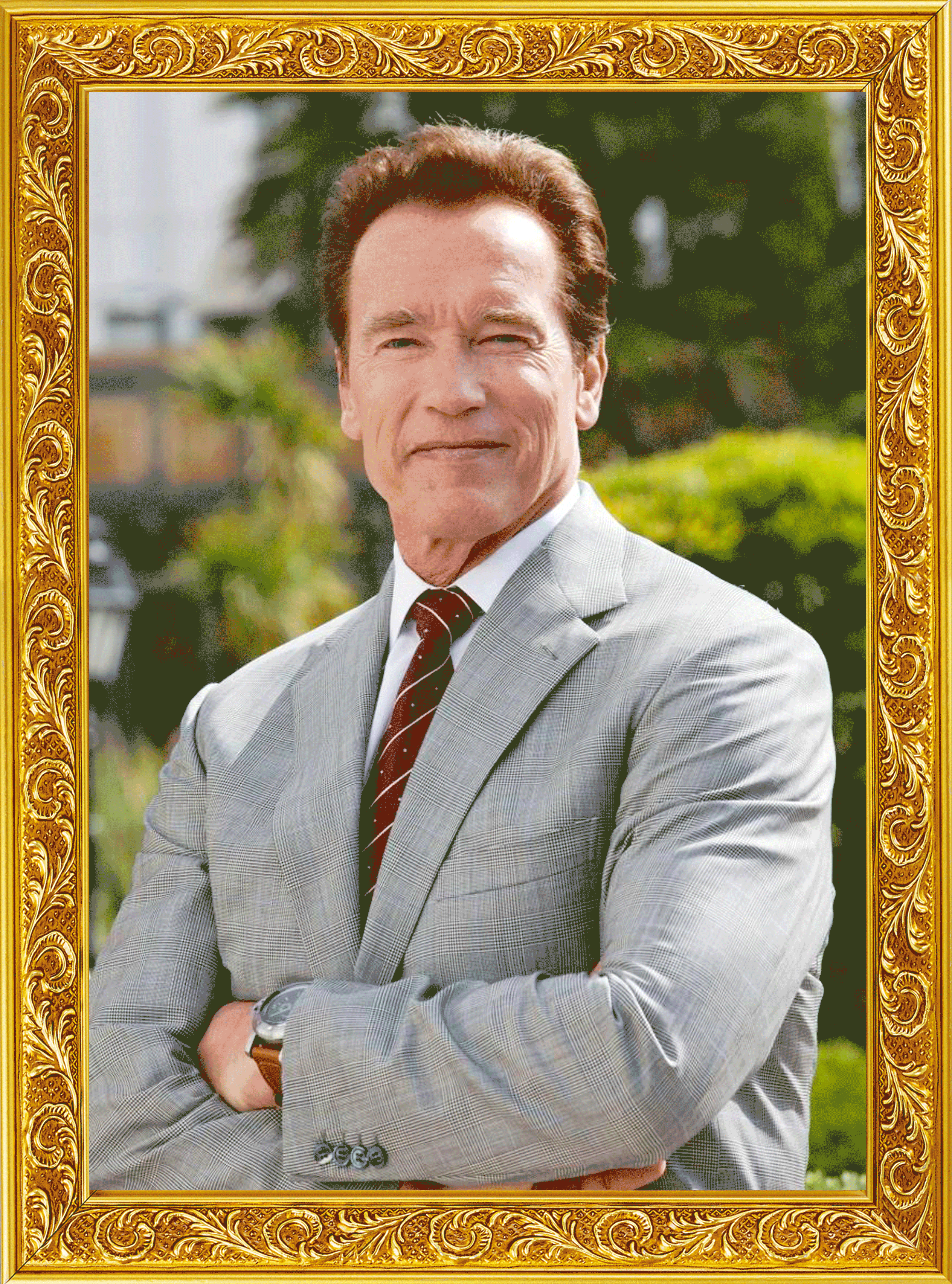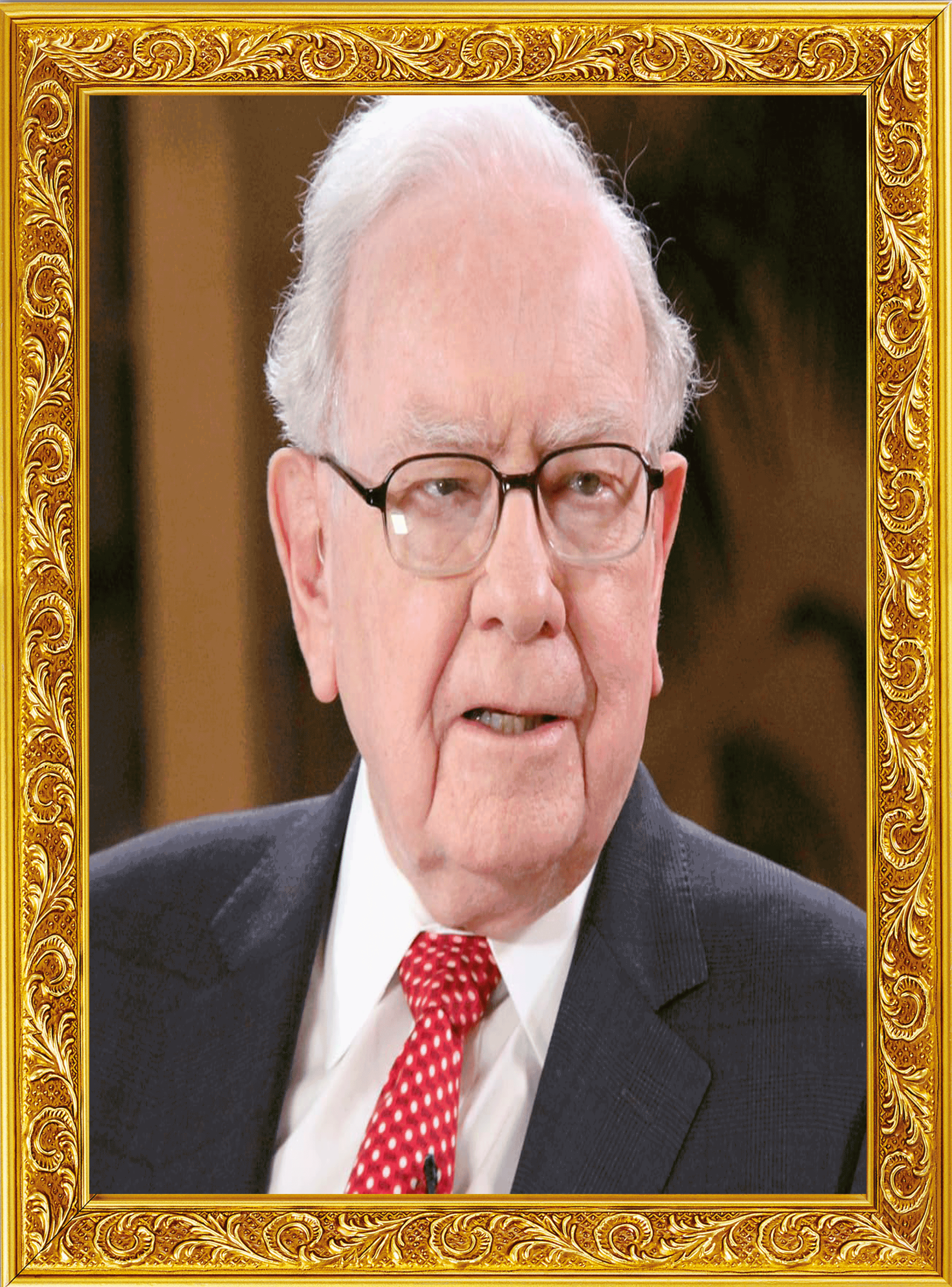
Our college and university students frequently list computer skills like MS Word, Excel, PowerPoint, Access, Email, and browsing on their resumes. But are these skills merely a part-time endeavor or a full-time commitment? Can one proficiently perform any task assigned based on these skills? Upon deeper consideration, the potential these skills hold becomes apparent.
Many individuals claim these skills are futile, arguing that they offer only what's necessary. While partially true, the stark reality remains that success in almost every business sphere today relies on computer proficiency. Attempting to bypass this necessity often leads to significant hurdles.
The paramount aspect is that the functionalities of these software tools are indispensable in the professional realm. Thus, regardless of one's location or occupation, understanding and mastering office software functions is crucial. Even in situations where opportunities are scarce, it's essential to persistently cultivate and refine these skills through any available means. Merely possessing certificates without practical application often renders individual's incapable in actual work scenarios due to lack of practice.
Particularly for girls facing societal constraints and challenging environments, opportunities might be limited. Nonetheless, with a well-crafted plan and efficient time management, even a minimal learning investment can yield remarkable outcomes, enabling the achievement of substantial tasks and accomplishments.
To effectively address the importance of attention to detail, consider the following practices:
Always have some notes, books, or magazines nearby your computer. Take short breaks of 20-30 minutes to blink consciously, which surprisingly eases comprehension of complex concepts.
Utilize a small notebook and pencil to jot down sudden ideas or valuable information that might otherwise slip your mind amidst work.
Regularly review and reassess. Consistently learning a little each day significantly enhances memory and expertise. While seeking shortcuts is common, remember that steady and strenuous learning methods yield more effective results.
For those without personal computers (PCs), relying on an Android mobile or handwritten notes becomes the sole option. However, given the reduced prices of PCs, it's astounding that a significant percentage about 90% worldwide lack computer proficiency despite access to PCs. The absence of a PC poses a hurdle in computer learning. In Bangladesh's current context, with some dedication and patience, acquiring a PC is feasible. Many individuals face challenges transitioning to jobs after completing studies due to inadequate prior guidance.
Recollection becomes crucial during interviews. Complaints about inadequate training from centers are common, but the pivotal focus remains on learning independently. Simply possessing CDs with programs, hand notes, or tutorials won't suffice you need to actively engage your brain.
In the technologically advanced landscape of the future, women stand as architects shaping the very foundation of innovation and progress. As the digital realm continues to burgeon, a transformative narrative unfolds a narrative-driven not only by cutting-edge technologies but also by the indelible contributions and leadership of women in this realm.
Gone are the days when technology was predominantly a male-dominated domain. The future witnesses an empowering shift, with women spearheading breakthroughs across diverse technological spheres. From artificial intelligence (AI) to space exploration, quantum computing to sustainable engineering, the female force is at the forefront, imprinting its brilliance on every facet of advancement.
In the not-so-distant future, a seamless fusion of gender equality and technological prowess has become the norm, birthing an ecosystem that thrives on diversity, inclusivity, and innovation. The landscape of tech firms, research institutions, and entrepreneurial ventures pulsates with the vibrancy of women-driven initiatives, disrupting traditional norms and setting new benchmarks for progress.
The metamorphosis of technology into a more holistic, empathetic force is steered by the distinct perspectives and multifaceted approaches that women bring to the table. Their influence extends beyond mere technological innovation; it encompasses ethical considerations, social impact, and human-centric design.
In this futuristic era, technological advancements are harmoniously intertwined with humanitarian pursuits, addressing global challenges such as climate change, healthcare accessibility, and socio-economic disparities. Women-led initiatives leverage technology not only for economic growth but also as a catalyst for societal well-being, prioritizing solutions that benefit communities and the planet at large.
Education and mentorship play pivotal roles in this futuristic narrative, as platforms are created to encourage young girls to pursue STEM (Science, Technology, Engineering, and Mathematics) fields from an early age. Mentorship programs abound, nurturing and empowering the next generation of female technologists, encouraging them to fearlessly embrace innovation and break barriers.
Moreover, the corporate landscape is undergoing a radical transformation, with boardrooms and leadership echelons boasting gender parity. In this future world, inclusivity and equal representation become non-negotiable, fostering a fertile ground for creativity, collaboration, and trailblazing endeavors.
The narrative of women and technology in the future is not merely about bridging a gender gap; it's about reshaping the very fabric of innovation, infusing it with empathy, diversity, and a relentless pursuit of a better world. It's a testament to the unwavering spirit and boundless potential of women, blazing trails, and inspiring generations to come.
As we navigate this future, it's clear that the convergence of women and technology isn't just a trend it's an unstoppable force propelling humanity toward a more equitable, compassionate, and technologically advanced future. It's a future where women don't just participate; they lead, innovate, and redefine what's possible.
https://www.youtube.com/watch?v=l_VAR49oLnI&t=307s

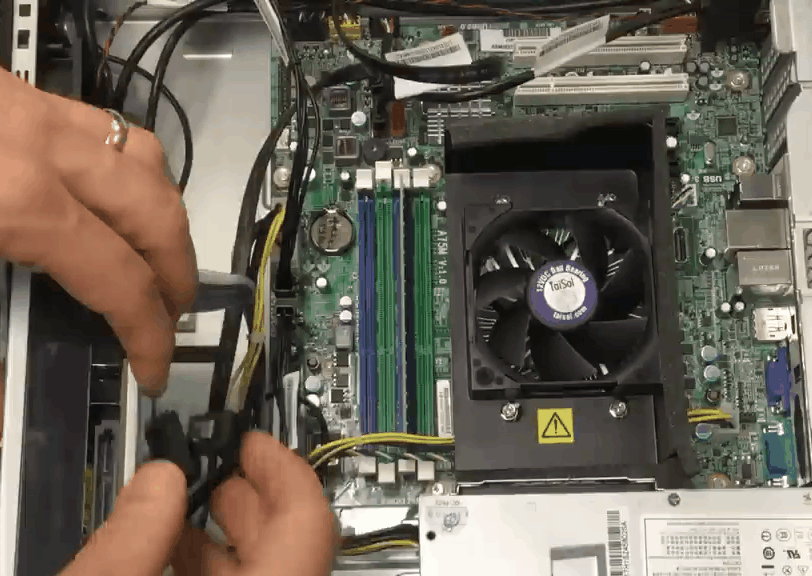
Computer hardware servicing is the method or technique used to manage all the body parts of a computer if it fails to function properly. Money had to be spent. But now computers are so cheap Everyone thinks about buying a new computer if it costs money. Also, since they have learned to setup Windows software and do basic hardware troubleshooting, there is no need for computer hardware servicing anymore. Yes, that's right you can now become known as a Lord of the Rings. Many people understand that computer hardware can work but his own computer has been useless for a long time. Because he doesn't have time to sit down with it, again, there are many who don't even want to clean their PC for fear of being ruined! They will be in the same situation as the VCR servicing makers, then someone else will go to the store and use the computer Do not want to get it sire ale maintain. Whoever has a problem, he will try to solve it himself or he will leave it in vain.
What are the problems that need PC or laptop servicing (troubleshooting)?
- Computer power comes but the picture does not come on the monitor.
- When the computer is fully turned on, do the screen show zigzag lines of different colors or tingle?
- Suddenly “blue screen” or black screen appears on the computer?
- After running for a while, the computer speed becomes very slow.
- Does the body of the computer become very hot?
- Does the PC hang when you enter the website on the internet?
- Is the computer making loud noises after starting?
- DVD tray not opening? Or opening automatically again and again and closing again?
- Your PC is not taking "operating system" such as Windows or Linux setup?
- Windows logo comes and restarts on your PC again and again?
- Another command coming when you press the mouse.
- Inverted letters coming to the computer keyboard?
- Mouse cursor visible but not moving?
- Which software is not being installed properly?
- Even if some software is uninstalled, it is not being removed or deleted?
Here is a list of the most common problems for computers. There are also thousands of problems.
What to do to learn computer hardware servicing?
Learning computer hardware servicing involves gaining knowledge and skills related to the maintenance, repair, and troubleshooting of computer hardware components. Here are the steps you can follow to learn computer hardware servicing:
Build a Foundation in Computer Basics: Before diving into hardware servicing, make sure you have a solid understanding of basic computer components, terminology, and how they work. This includes knowledge of the CPU, RAM, motherboard, storage devices, and more.
Enroll in a Hardware Servicing Course: Look for local schools, community colleges, or online courses that offer hardware servicing or computer repair programs. These courses often provide structured curriculum and hands-on training.
Read Books and Online Resources: There are many books and online resources available that cover computer hardware servicing. Books like "Upgrading and Repairing PCs" by Scott Mueller are highly regarded in the field.
Practice on Your Own: It's essential to get hands-on experience. You can start by disassembling and reassembling older computers. Take apart old PCs and put them back together to get a feel for the components.
Familiarize Yourself with Tools: Learn about the tools used in hardware servicing, such as screwdrivers, pliers, and diagnostic equipment. Understanding how to use these tools safely is crucial.
Learn about Component Identification: You should be able to identify and understand the function of various hardware components, such as CPUs, RAM, hard drives, power supplies, motherboards, and graphics cards.
Study Troubleshooting Techniques: Learn how to diagnose and troubleshoot hardware issues. This involves understanding common problems, using diagnostic software, and working through a systematic process to identify and fix issues.
Safety Precautions: Understand safety protocols when working with computer hardware, including precautions for electrostatic discharge (ESD) and proper handling of sensitive components.
Keep Up with Technological Advances: Computer hardware evolves rapidly, so stay updated on the latest technology trends and developments. This will help you address current hardware issues.
Certification: Consider pursuing industry-recognized certifications such as CompTIA A+ or vendor-specific certifications like those offered by companies like Microsoft, Cisco, or HP. These certifications can enhance your credibility as a hardware technician.
Networking: Connect with professionals in the field by attending hardware-related events, joining online forums, or seeking mentorship opportunities. Networking can provide valuable insights and opportunities for learning.
Hands-on Experience: If possible, seek internships or part-time positions at computer repair shops, IT departments, or electronics retailers to gain practical experience.
Start a Small Repair Business (Optional): Once you feel confident in your skills, you may consider starting a small computer repair business to gain real-world experience and build a customer base.
Remember that computer hardware servicing is a constantly evolving field, so continuous learning is essential. Regularly upgrading your skills and staying informed about the latest hardware and software developments will help you succeed in this field.
![]()
The language of calculation is mathematics or the language of creation
Written by Administrator 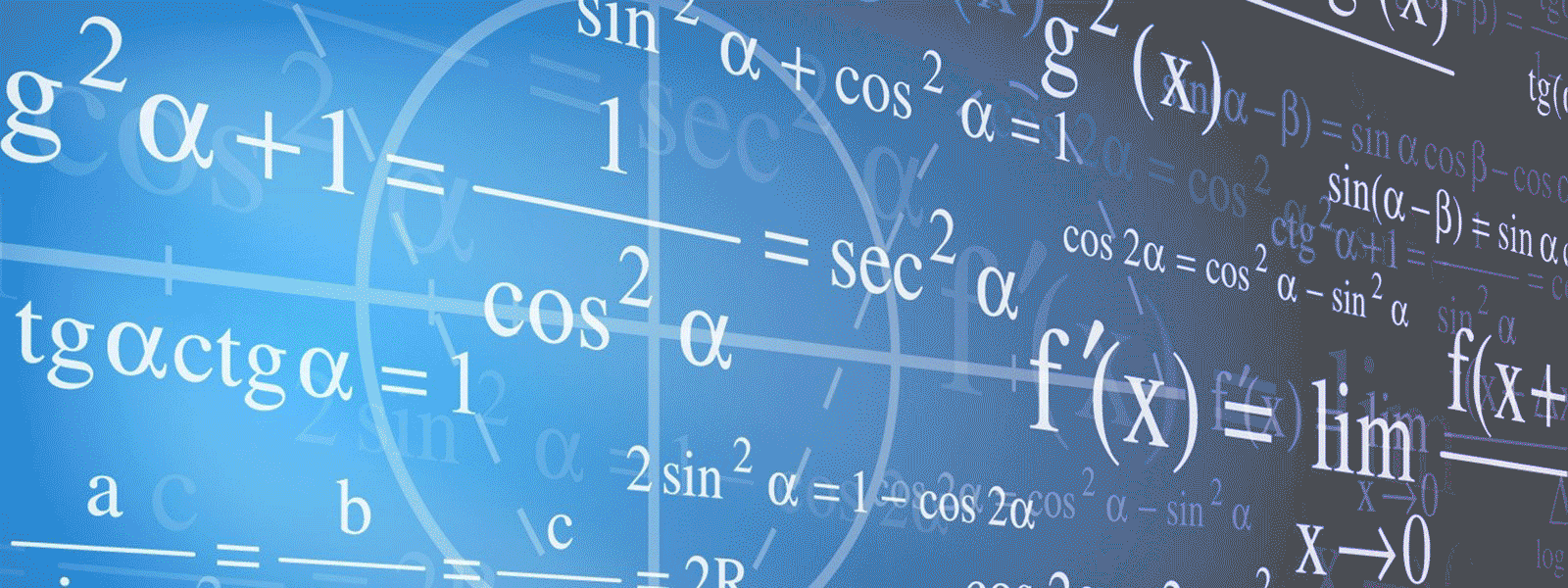
Accounting, a fundamental practice, often underestimated in its depth, holds paramount importance across various aspects of life, spanning from personal successes and failures to the vast expanse of Earth and space. The notion of calculation permeates everything be it the orbital movements of celestial bodies or the intricate workings of nature. At the core of such calculations lies arithmetic, lauded by scientists as the language of the creator, enabling the expression of forms and structures in a comprehensible manner. Questions about the speed of light or the age of the Earth exemplify the wide array of topics that fall within the purview of calculation and measurement.
Even our everyday calendar, a man-made construct, assumes immense importance in navigating the present and organizing our lives. Time, an intangible yet inescapable concept, continues its unceasing progression, indifferent to our passage through it. The celestial bodies of the moon, sun, planets, and stars orchestrate an intricate ballet, steering tides and dictating seasons, marvelously adhering to their own rhythms. Astonishingly, despite being creations beyond human intervention, they meticulously maintain accounts, guiding the very construction of clocks and calendars that measure our days.
Computers, the pinnacle of human ingenuity, operate on the binary system, simplifying complex tasks by executing computations based on zeros and ones. However, human life transcends mere binary states of existence our reality is intertwined with the intricate balance between existence and mortality.
Mathematics, often revered as the "language of science" or "language of nature," serves as a universal and precise medium for comprehending and expressing phenomena within the physical world. While not a language in the traditional sense, mathematics encapsulates a system of symbols and rules enabling the expression and communication of intricate ideas concerning quantities, patterns, and relationships. There are several reasons why mathematics is often likened to a language:
Mathematics, often deemed the language of the universe, transcends conventional linguistic structures. Its universal applicability fosters cross-cultural understanding, providing a unique avenue to express complex concepts and explore the intricacies of the physical world. With precision ingrained in its notation, mathematics becomes a vehicle for deciphering natural phenomena, allowing scientists and researchers to delve deeper into intricate patterns and relationships governing our existence. Through abstraction, mathematical principles simplify complex realities, allowing us to model and understand real-world systems in simplified yet accurate ways. Moreover, its consistency and logical foundations ensure coherent reasoning, forming the bedrock for scientific theories and discoveries.
Beyond theory, mathematics forms the backbone of technological advancements, birthing the marvel of computers and computational devices. Its binary system powers these machines, simplifying intricate tasks into fundamental zeroes and ones. Moreover, mathematics permeates every aspect of modern life from economic models and financial markets to medical technologies and space exploration. Economists and analysts rely on mathematical models for market forecasts and risk assessment, influencing global economies. Medical sciences leverage mathematical principles in imaging technologies, statistical analysis, and modeling physiological processes, thus revolutionizing healthcare delivery.
In the realm of space exploration, mathematics guides spacecraft trajectories and orbital mechanics, propelling our understanding of the cosmos. Its intrinsic role in various industries underscores its significance, influencing innovation, problem-solving methodologies, and critical decision-making processes across diverse fields. Mathematics stands as the silent yet omnipresent language shaping our understanding of the world, serving as a bridge between the tangible and the abstract and fueling humanity's quest for knowledge and progress.
Mathematics transcends linguistic and cultural barriers, offering a common framework for comprehending various fields such as science, engineering, and economics. Mathematical notation enables clear and unambiguous communication essential for scientific research and problem-solving. Abstraction: Through abstraction, mathematics simplifies complex phenomena, facilitating their understanding and modeling. Consistency: Mathematical principles maintain internal coherence through logical and consistent rules and axioms. Predictive Power: Mathematics aids in hypothesis testing and prediction, underpinning many scientific theories and allowing accurate forecasts of physical system behaviors. Problem Solving: Mathematics provides problem-solving frameworks applicable in various fields, aiding in deciphering complex issues logically and systematically. Technological Advancements: It serves as the backbone for technological innovations, enabling the creation of computers, algorithms, encryption methods, and data analysis tools. Mathematics plays a crucial role in economic modeling, finance, and statistical analysis, guiding decision-making processes in industries worldwide. Mathematical calculations facilitate space exploration, guiding spacecraft trajectories, orbital mechanics, and astronomical discoveries. It underpins medical imaging technologies, statistical analysis in research, and modeling physiological processes, enhancing healthcare outcomes.
In the vast expanse of human comprehension, the role of mathematics stands as an enigmatic force a language weaving intricate patterns across the fabric of existence. Often hailed as the language of calculation or even the language of creation itself, mathematics transcends mere numbers and equations, encapsulating the essence of the universe's workings. At the heart of this discourse lies the legacy of Nikola Tesla, an innovative genius whose pioneering contributions illuminate the intricate relationship between mathematics and the very essence of creation.
Tesla, a luminary in the realms of science and invention, viewed mathematics not merely as a tool for calculation but as a gateway to understanding the secrets of the cosmos. His visionary insights delved deep into the fabric of reality, where mathematical equations became a poetic expression, a symphony that harmonized the forces governing the universe. For Tesla, mathematics was not confined to a series of calculations but a language that unveiled the secrets of creation itself a language he fervently sought to decipher.
In Tesla's relentless pursuit of understanding the universe, mathematics was his compass. His visionary concepts, often ahead of their time, were shaped by mathematical formulas that echoed the rhythm of the universe. His experiments and innovations in electricity, magnetism, and wireless communication were imbued with the elegance of mathematical precision, transforming abstract theories into tangible inventions that revolutionized the world.
Tesla's pioneering work with alternating current (AC) electricity, electromagnetic fields, and wireless transmission was born from the symphony of mathematical equations dancing through his mind. His visionary ideas, grounded in mathematical truths, propelled humanity into an era of technological advancement, inspiring future generations to explore the language of creation through the lens of mathematics.
Mathematics, in Tesla's eyes, was not a mere language of numbers and symbols but a conduit for deciphering the symphony of creation an intricate code that revealed the harmonious interplay of forces shaping the universe. His legacy continues to echo through the corridors of scientific inquiry, where the language of mathematics remains an indelible tool for unlocking the mysteries of existence.
In conclusion, Nikola Tesla's profound reverence for mathematics as the language of creation transcended conventional understanding. His visionary insights and groundbreaking inventions served as testaments to the profound relationship between mathematics and the very essence of the universe an eternal symphony awaiting interpretation by those who dare to decipher its sublime complexities.
Seen as a language of creation, mathematics empowers humans to craft models, technologies, and systems that mold and broaden our understanding of the world. It serves as a potent tool, shaping and describing the natural world while holding a pivotal role in scientific and engineering endeavors.
![]()
A Few Profitable Examples of Small Sole Proprietorships
Written by Administrator
Plan 01: Commence with acquiring funds to purchase at least one item when starting from scratch. This initial procurement sets the stage, while the application of strategic business principles steers the course ahead. Key to this venture is assessing the market demand for the intended product, aiming for a demand twice that of any other product. Ensure the feasibility of self-purchasing the product. Diligently economize, particularly on expenses like car rentals during travel, as the capital is earmarked solely for the initial shipment or goods purchase. The ultimate objective is selling specifically targeting sales at double the price. Every step, given the minimal capital, necessitates a calculated risk. The business principle remains simple: "Higher risk, higher profit; lower risk, lower profit."
Purchase the product with an eye on potential profit, ensuring a profit margin at the time of purchase and resale. Allocate time for strategic planning on identifying potential buyers and doubling profits. The division of the purchased product into capital and profit segments is crucial. Preserve product quality throughout the selling process. Reinvest the money gained from sales into the same process without diversion. Success benchmarks must be met at each phase first sale, first day, first week, extending to the first three months.
This progression leads to an increase in both capital and goods. Establish requisite facilities while ensuring privacy and security. After 100 days, consider pivoting the business model if required.
Plan No. 02: Whenever a need or desire arises for a purchase, I'll proceed accordingly. If I procure products wholesale, allocating a portion of the profit for personal consumption and selling the surplus at the original price, not only do I obtain the desired product but also generate supplementary income. This method offers a simple pathway to earn a profit.
For instance, if I purchase 12 soaps and receive an extra one free, the total becomes 13. If one is sufficient for my use, the remaining 12 can be sold, allowing me to recoup the initial capital. Additionally, purchasing multiple products at a lower price than retail presents an opportunity for profit.
Strategic placement for selling goods is crucial. Take, for instance, a scenario where purchasing a train ticket involves considerable effort standing in long queues or through intermediaries. In a sudden change of plans leading to ticket cancellation, if the ticket is available for purchase at the counter just before the train's departure, there would be a market for it at an affordable price. This strategy capitalizes on seizing opportunities in the market.
Plan No. 03: Briefly introduce the concept of sole proprietorships as small business entities owned and operated by a single individual. Highlight the significance of small sole proprietorships in contributing to the economy.
Set the stage for discussing a range of profitable examples across various industries.
Section 1: Service-Based Sole Proprietorships
Discuss service-oriented businesses such as tutoring services, freelance writing, graphic design, consulting, personal training, etc.
Highlight the low initial investment and potential for high-profit margins in service-based businesses.
Provide success stories or case studies of individuals thriving in service-based sole proprietorships.
Section 2: Retail and E-commerce Sole Proprietorships
Explore examples of retail businesses, including online stores, boutique shops, specialty stores, or unique product sales.
Discuss the strategies used by individuals to succeed in competitive retail markets.
Illustrate the importance of customer engagement, branding, and niche market identification.
Section 3: Home-Based Sole Proprietorships
Highlight the advantages of home-based businesses such as daycare services, catering, handmade crafts, and pet care services.
Discuss how individuals can effectively set up and manage home-based sole proprietorships while balancing personal life and business operations.
Include anecdotes or success stories of entrepreneurs successfully managing home-based businesses.
Section 4: Innovative and Technology-Centric Sole Proprietorships
Explore innovative examples such as app development, software consultancy, digital marketing services, or tech repair services.
Discuss the role of innovation and technology in driving success for these sole proprietorships.
Provide insights into how individuals leverage technology to establish and grow their businesses.
Recap the diverse range of profitable small sole proprietorship examples across various sectors.
Emphasize the entrepreneurial spirit and determination needed to succeed in these ventures.
Encourage aspiring entrepreneurs to explore their passions and consider starting their own sole proprietorship based on their skills and interests.
This outline serves as a framework to elaborate on each section by providing in-depth examples, success stories, statistics, and practical tips for individuals aspiring to establish profitable small sole proprietorships.
![]()
How to Determine Visiting Card/Business Card Size in Photoshop?
Written by Administrator
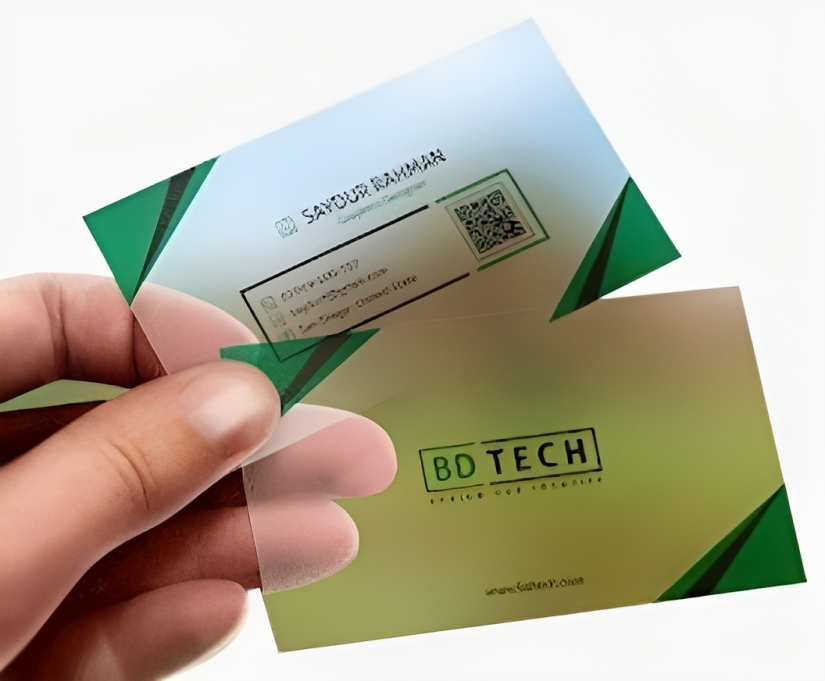
First open Photoshop. Get new document. Give the size of the new document in inches, length = 3.5, width = 2 and select the color mode CMYK mode and finally give the resolution 300 pixels. Give it to him.
Click view > Ruler (Control+R) from the top menu. The ruler scale will appear after the menu bar. Then drag the ruler around the white area and release.
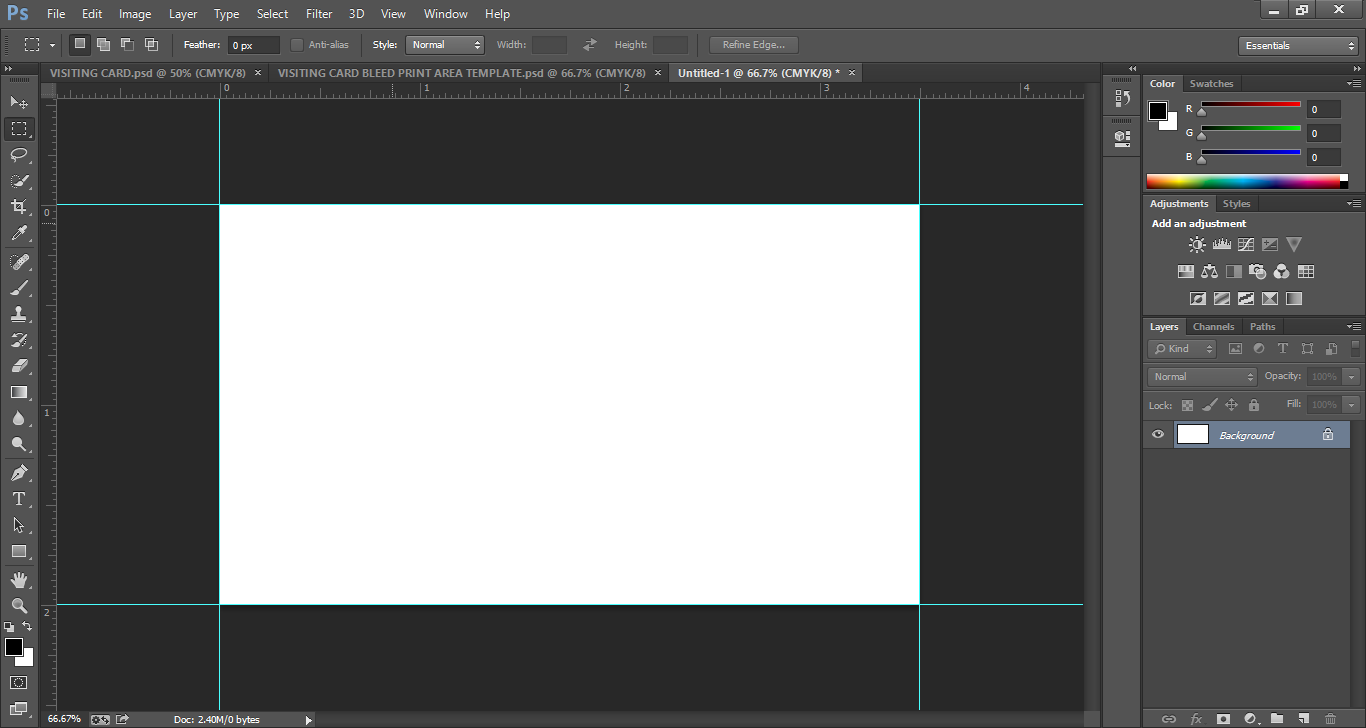
Now click on the Image menu from the top menu (Control+C). Click on the Canvas Size option.
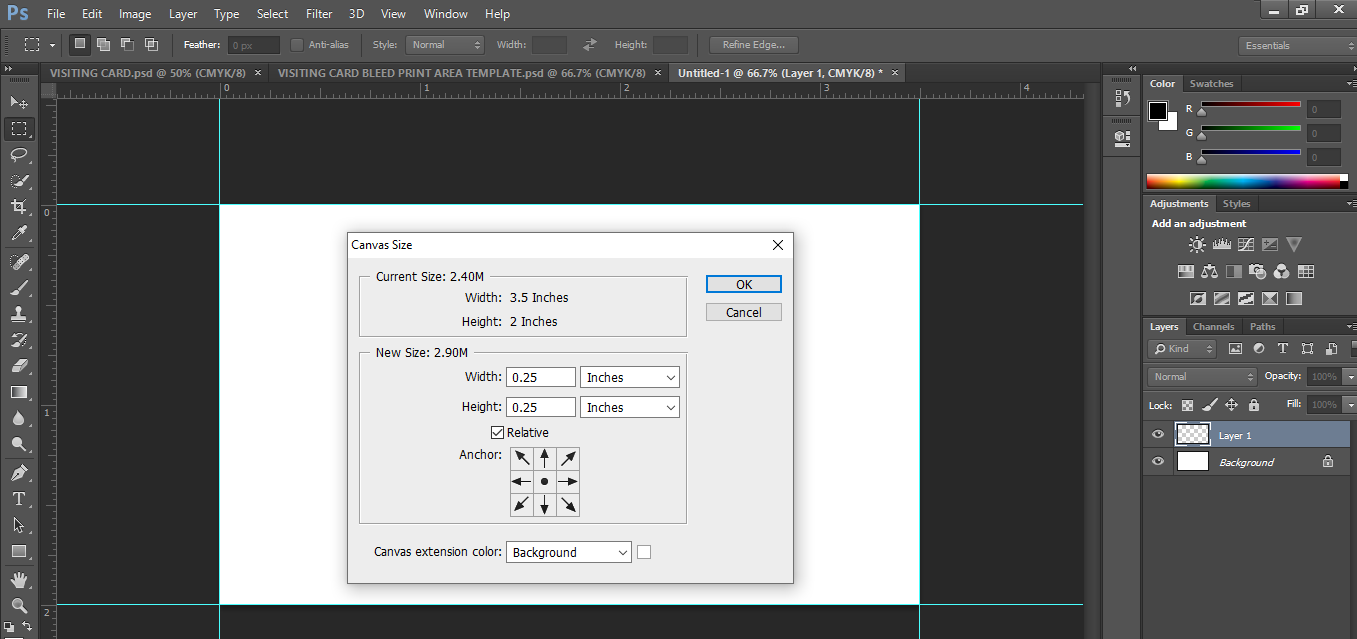
In the Canvas dialog box, first check the Relative checkbox if it is unchecked to get equal mean bleed area from fourpass. Since it is equal from all sides, it means that the bleed portion has to be determined, so the length and width will be the same, 0.25 and I will do it. Then the part of the extra 0.25 size that we can see, just like before, I will draw the ruler scale and set four around it.
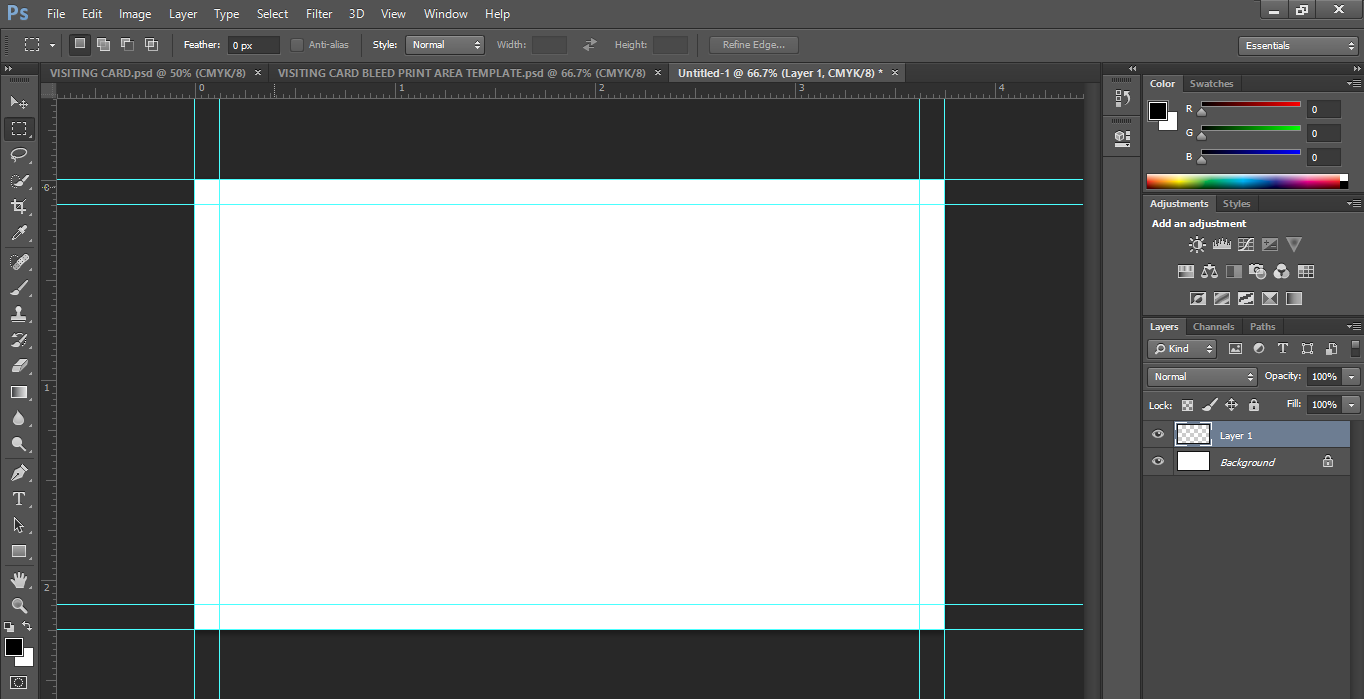
After determining the bleed area, now the task is to determine another area of 0.25 which is called the print area. The print area will also be the same size. For this, we will select the Rectangle Marquee Tool from the left pass toolbar Control + M. Then drag the Marquee Tool at the edge of the small rectangle created by the double ruler to create a selection rectangle area of the same size. Press Control + Plus to zoom in and enlarge if necessary. take a look

Now select the selection rectangle area with the move tool, drag it downwards and place the corner inwards and set it to the place of the print area. Now it's time to pull the ruler.
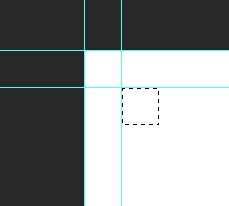
Just look and set the rulers as nicely as before. The bleed, print and design area of your visiting card is now ready. Now design as desired. In fact, your work will now be considered very professional.
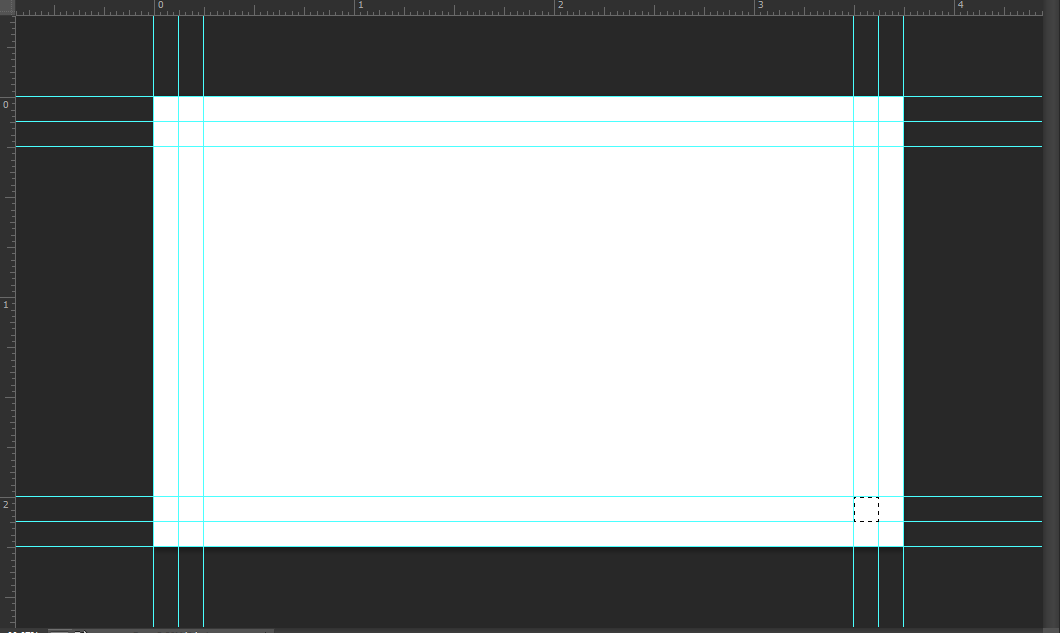
Now we will look at the size of the rounded visiting card. Select the Rectangle tool from the left-hand menu. Then drag and select our 3.50 whole rectangle. We will see that a new layer has been created in the layer option.
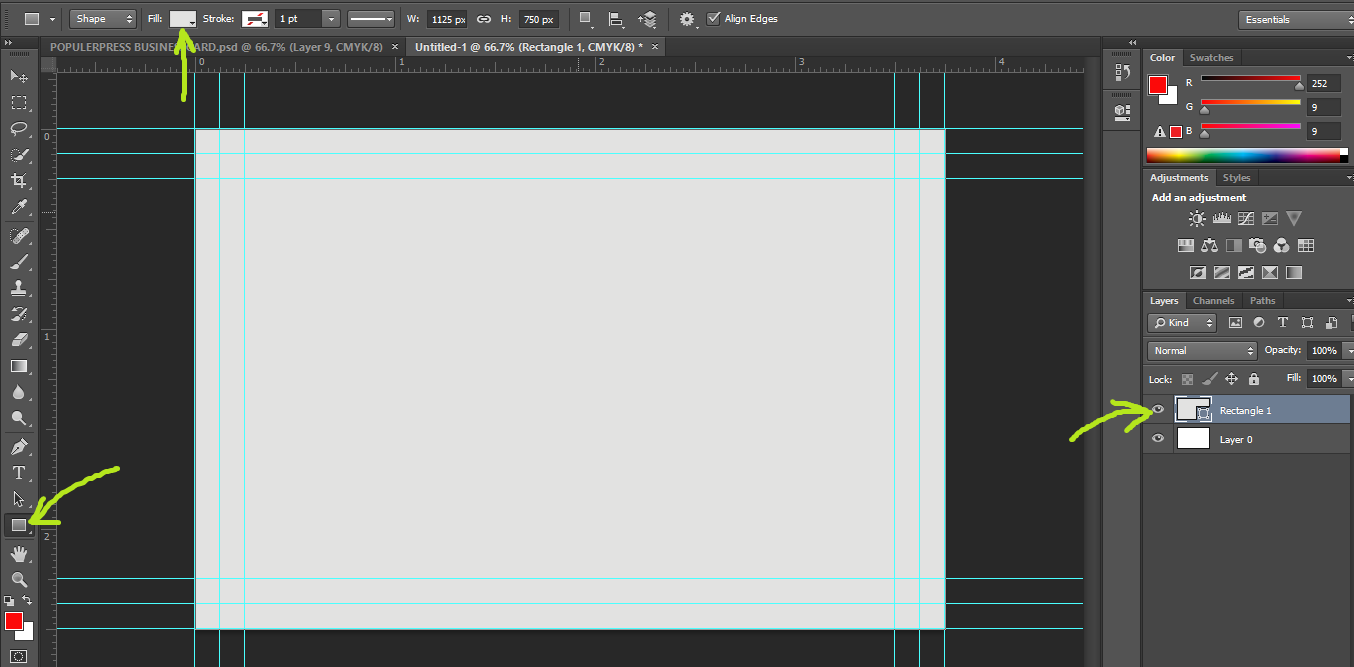
Then select the Rounded Rectangle tool again and customize from the top tool menu, such as Radium 30 pixels, select Excluded Overlapping from the Path Operation tool, turn off Stoke Color and fill it with any desired color.
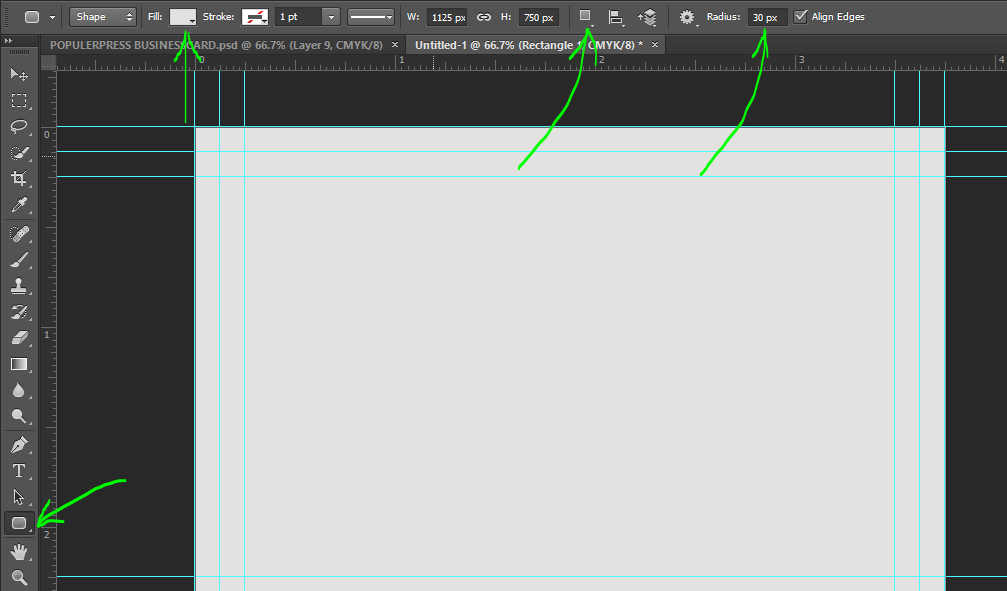
Now, except 0.25 part of the first ruler, I will make a rounded shape below that part.
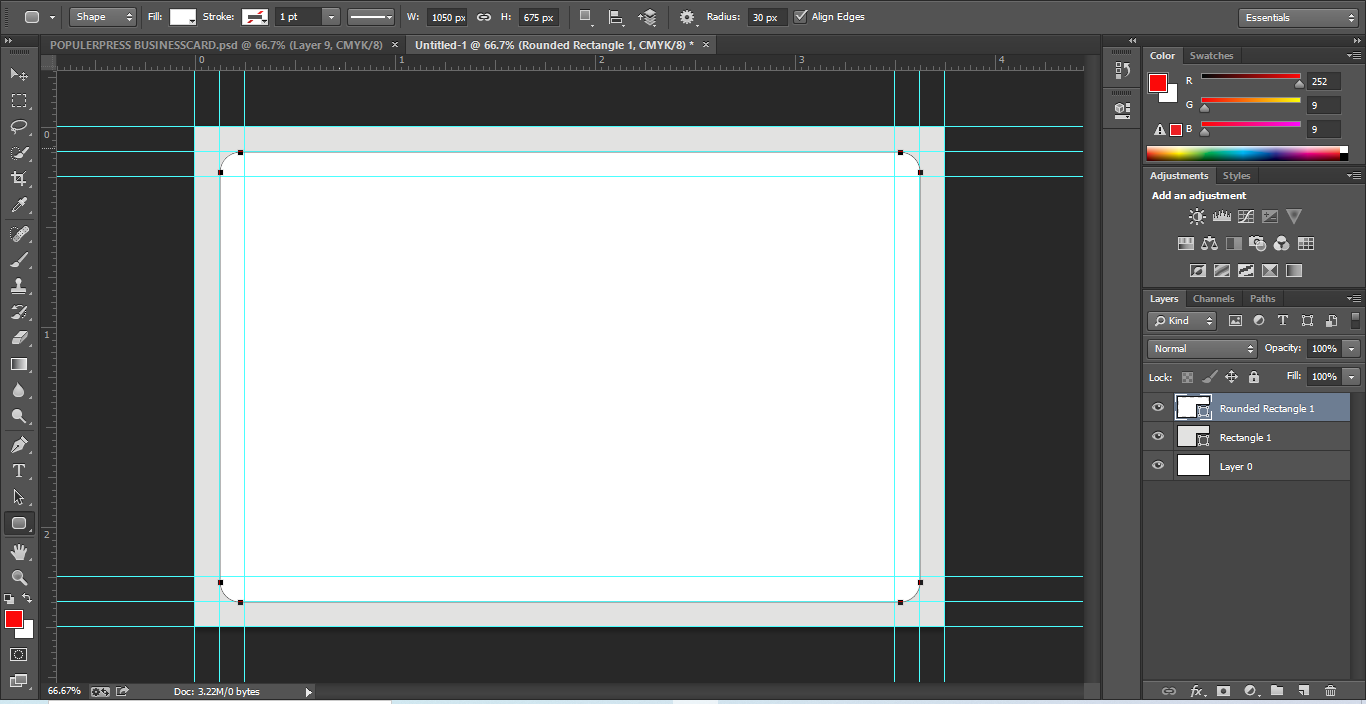
Finally, in the same way, just turn off the fill color and select the stoke color to draw another rounded rectangle shape. This is the die cut for our rounded business card.
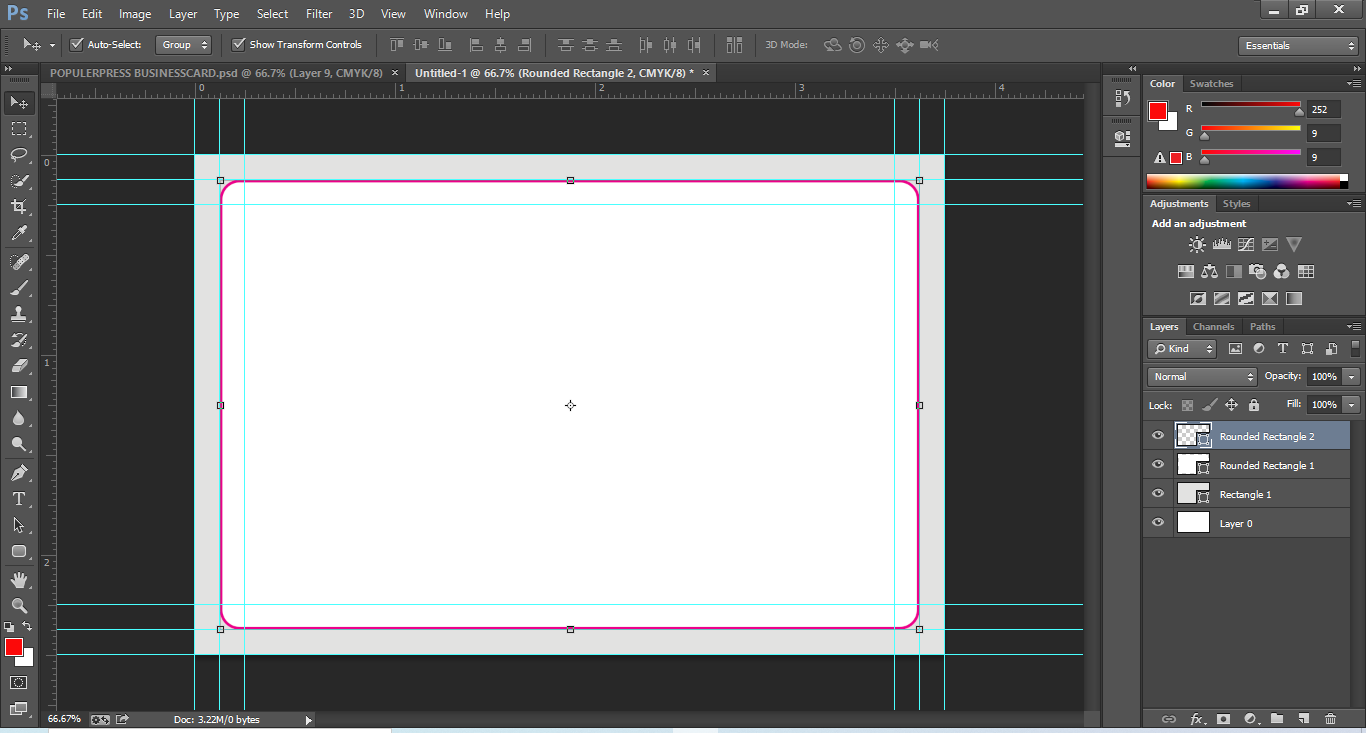


It's advantageous to manage your own tasks, yet there are instances where seeking assistance becomes necessary. Human beings are inherently social, acknowledging the need for collaboration. Today, let's delve into the process of applying for a job independently how to navigate a job application form and find the appropriate link for online application submission. Primarily, job advertisers utilize various mediums for postings, including newspapers, magazines, and online platforms. Once you've gathered initial information from these sources, consider the application procedure. Typically, instructions are provided within the advertisement. It's crucial to comprehend these instructions beforehand. Applications can be submitted online or offline, where offline submissions involve mailing candidate information forms via postal services or couriers. Online applications often include a web link, like:
If unsure about the job research link, a straightforward Google search using the relevant keywords can lead to the correct application page. Upon accessing the page through the link, carefully review the categories available for job application. Select the relevant category, if multiple, by clicking on the radio button. Here, input accurate details as required in the form. If uncertain or lacking information, it's wise to refrain from filling the form independently and seek guidance from an experienced individual or expert at a local establishment to ensure a precise and thorough completion.
Errors often occur in filling out birth years and voter ID numbers, demanding caution and awareness. To prevent inaccuracies, students are advised to adopt a strategy by directly copying and pasting their SSC or HSC roll and registration numbers from Google's web-based results, obtained from the official data repository's webpage displaying their mark sheet information. On the job application form, enter personal details such as name, parent's name, address, roll number, registration, birth year, etc. with precision. Ensure images meet specified dimensions like 300 pixels by 300 pixels (100 kilobytes) for photographs and around 300 pixels by 80 pixels (50 kilobytes) for scanned signatures, adhering to respective size requirements set by each organization. Certain fields marked with an asterisk (*) are mandatory; failing to complete this will result in an incomplete form. Once everything is accurate on the job advertisement, proceed by clicking the "Next" button to preview the complete form as a profile. If satisfactory, click "Submit". Around 10 to 15 seconds post-submission, a final page will appear, prompting the option to download the completed form in PDF format, which can be printed if necessary.
Now, let's delve into the aspect of payment. Despite the online application process, many encounter difficulties with payment. Numerous applicants often scramble to determine the available payment methods such as mobile sim (mobile banking) card use. Some organizations have initiated a practice where application forms are filled with an advance payment requirement, ensuring that incomplete applications are rejected within 72 hours after the final payment date.
Following a successful payment transaction, the candidate will receive one or two short messages on their personal mobile number. The message will contain an ID number that the candidate must reply to by sending a return message, precisely reproducing the code number specified in the advertisement (verbatim as instructed by the authority). If the information is accurate, a confirmation message will be received, indicating the ID password. Subsequently, candidates can download and print the entry form from the same website using the provided password, allowing access to details regarding the test center, scheduled time, and additional information at the designated time.
Below is a unique presentation of international job seeker posts:
LinkedIn's Global Opportunities Hub: Networking behemoth LinkedIn offers an expansive Global Opportunities Hub that transcends borders, connecting job seekers worldwide with a multitude of career openings spanning diverse industries and locations.
Indeed, Worldwide Quest: As a comprehensive global job search engine, Indeed's Worldwide Quest quest offers a labyrinth of career possibilities across the planet, showcasing openings from myriad countries and sectors.
Glassdoor's Global Vistas: Glassdoor's Global Vistas illuminates international job listings, offering a prism into various countries' work landscapes, enriched with company reviews and salary insights.
Monster's Universal Expedition: Embark on Monster's Universal Expedition, exploring a multitude of career terrains globally, unveiling job opportunities across an array of industries and continents.
CareerBuilder's World Odyssey: Navigating CareerBuilder's World Odyssey takes you on a journey across the globe, unveiling job postings from diverse corners of the world, along with invaluable career advice.
SimplyHired's Intercontinental Gateway: SimplyHired's Intercontinental Gateway is your passport to a global job search, featuring postings from various countries, making your job hunt seamless.
ZipRecruiter's Global Crossroads: ZipRecruiter's Global Crossroads converges international job listings into a single hub, simplifying the search process and streamlining applications.
JobsDB's Pan-Asian Quest: JobsDB's Pan-Asian Quest offers a treasure trove of job opportunities in the dynamic Asian region, presenting diverse roles across various sectors.
Naukri Gulf's Middle Eastern Passage: Naukri Gulf's Middle Eastern Passage opens doors to career prospects in the Gulf region, showcasing opportunities in this vibrant part of the world.
Eurojobs' European Odyssey: Eurojobs' European Odyssey leads you through job listings in the diverse and rich continent of Europe, spanning multiple countries and industries.
UN Careers' Global Peace Mandate: UN Careers' Global Peace Mandate presents career paths within the United Nations, offering opportunities to contribute on a global scale.
Devex's World Development Canvas: Devex's World Development Canvas spotlights international development job opportunities, emphasizing meaningful careers that impact communities worldwide.
Idealist's Humanitarian Horizon: Idealist's Humanitarian Horizon is a portal to nonprofit sector jobs globally, facilitating opportunities to contribute to societal causes worldwide.
Remote.co's Boundaryless Careers: Remote.co's Boundaryless Careers offers remote job opportunities transcending geographical barriers, supporting flexible and location-independent work globally.
FlexJobs' Worldwide Flexiverse: FlexJobs' Worldwide Flexiverse showcases opportunities for flexible, remote, part-time, and freelance roles across the globe, catering to diverse preferences and lifestyles.
These platforms serve as global gateways, inviting job seekers into a world of diverse opportunities, offering unique insights and openings across various sectors and continents.
"Beginning the quest for online job prospects as a freelancer requires a systematic approach aimed at ensuring successful applications. To begin, carefully cultivate your online presence by creating a comprehensive and professional portfolio or resume that showcases your skills, expertise, and past work samples. Next, explore reliable freelancing platforms or job boards that cater to your specific industry or niche, such as Upwork, Freelancer, or Fiverr.
Once you've chosen a platform, conduct thorough research to pinpoint suitable job listings aligned with your skills and interests. Scrutinize job descriptions diligently to grasp client expectations and needs. Customize your application or proposal for each job, highlighting your qualifications and demonstrating how your expertise meets the client's requirements.
Craft a compelling and personalized cover letter or proposal that captures the client's attention and emphasizes your unique value proposition. Ensure your application is concise, error-free, and reflects a high level of professionalism.
Include pertinent work samples, portfolio links, or any requested documents to bolster your application. Submit your proposal promptly while adhering to any specified deadlines outlined in the job listing.
Regularly monitor your chosen platform for responses to your applications. Respond promptly and professionally to potential clients expressing interest, offering further information they may require or addressing their queries effectively.
By meticulously following these steps, a freelancer can adeptly navigate the online job application process, significantly improving their prospects of securing valuable opportunities within the digital marketplace."
![]()

Car of Life. Life akin to a car, demands adept management for favorable outcomes. The manner in which we steer our lives and aspirations influences the results we experience poor management yields unfavorable consequences, while proficient management leads to positive outcomes.
In this analogy, let's envision our life as a car divided into two components external (Outside) and internal (Inside). Although the specifics are hypothetical, this analogy unveils insightful reflections. Each individual's life car mirrors diverse models a private car, auto-rickshaw, cargo lorry, or variations representing various occupations like clerks, officers, government employees, or the unemployed each unique in appearance and function.
We conceive that one's life car parts (Internal and External) arrangement influences the output or results. If skeptical, one may test this belief by adopting a disbelieving perspective.
Considering the exterior of the car, let's delve into the wheels:
- Confidence - The first wheel
- Responsibility - The second wheel
- Work Plan - The third wheel
- Working Technique - The fourth wheel
- Promise - The fifth wheel
Arrangement preferences may vary according to individual needs and necessities.
Now, shifting focus to the interior of the car:
- Wish-Key - The Wish-Key
- Engine-Health - The Engine
- Steering-Endurance - The Steering
- Headlight-Experience - The Headlight
- Break-Wit - The Break
These components, similarly, can be arranged based on individual preferences and requirements.
Envisioning the use of these metaphorical features, consider yourself a skilled car driver well-versed in road rules, diligently adhering to them. However, when an unforeseen event unfolds a drunk driver recklessly executes a U-turn, colliding with your private car. Despite your innocence and adherence to road rules, you suffer harm. Whose fault, is it? Whose loss, is it? Despite knowing you're blameless, the consequences and loss fall upon you, illustrating the unjustness of the situation.
From the mentioned incidents and situations, we learn that even though we try to be right all the time, sometimes some problems or troubles can affect us accidentally or unexpectedly and completely disrupt the normal course of our daily life. Isn't that so?
A car cannot move fast without wheels. All the wheels must be air-filled, meaning all the features of the LIFE CAR will keep your moving.
Let's focus on the first wheel:
If the name of the first wheel is belief, then its importance can be easily guessed. Self means self-belief means something to be trusted or relied upon. So, self-confidence means belief in oneself, right? Yes, if the belief can be verified while starting any work then the work becomes very easy for him. If self-confidence is lacking, many simple tasks become difficult and if self-confidence is right, many impossible tasks can become very easy!
To talk about the second wheel sense of responsibility, in simple words, responsibility is a subject that has many aspects and responsibility cannot be fulfilled by everyone. In most cases, the duality comes automatically, and, in many cases, you have to take responsibility yourself. But in this case, the responsible people are always a little different from everyone else and their work is more and more messy. If responsible people can do 80% of the work, it doesn't take long to reach the top of development without capital.
The third wheel is a plan of action: A messy life without a plan means an uncertain life. Today there is no tomorrow. This is good and steep. This happiness is this sadness. That is, there is no equality or harmony in words, deeds, or thoughts. It seems foolish to expect success in a messy unplanned restless life. Every modern man should have a daily plan, a weekly plan, a monthly plan, and a yearly plan. A life without a plan is worthless. Every creation has some purpose beyond our own understanding. Failure is rare if the plan is correct.
The fourth wheel: It is not enough to do the work, but to have a work strategy. There are many people who think that I am working hard all my life, but I am not progressing bro! The truth is that there is no use in sleeping with ghosts. Every job has some tricks. If you don't know the strategy, you should learn it, but it is not possible to achieve success in anything in life with a thick head like Gower. After prevention, the results of the whole work and the work of good sense are completely different.
Without a fifth wheel or spare wheel, the car can reach the destination, but if you are unaware or overconfident while driving (Journey) suddenly one of the wheels gets punctured, then both you and the car will suffer. Where to find a spare wheel, where to find a car repair technician, or where to find a garage to keep your car safe and secure. If you think about it a lot...
Many dangers happen because of a little mistake, those who make the mistake are the victims. That is why extra wheels promises are needed on the way, such as I will do the work, or I will go there...
Now we will focus on the interior of the car: first is the key to the car, willpower. My wish is that I will take my life car to go somewhere far away or for any urgent work. This is the first step in driving life. I mean I want to leave the house to go anywhere. After that, I took out the key with my hand in my pocket and started it. (Here lies deep thinking and understanding). If I don't want to, I won't cry. My car will start as I wish. By force of will I started my car. The cart is ready to go. If there is a will, there is a way...
After that let's talk about the engine; the engine is human health. The most important part. If you are not healthy, you cannot leave the house. So, the engine of the car must be kept healthy. There is no alternative. Whatever you do, whatever you think, and whatever you plan, nothing can be done by you without desire (Sat).
Next is steering or endurance. Just like driving a car, you have to control the car through the steering wheel, there is no substitute for patience when it comes to taking charge of your own life. God loves a patient person and does not forget to help him even if it is late according to the laws of nature.
Then there are headlights: you can't drive in the dark without headlights. Its name is knowledge. Wise people can see in the dark, that is, even if the five senses do not work, they can perceive many things through their sixth sense, understand, and even cause events that are difficult for ordinary people to understand or do! Knowledge is light.
Finally, there is the brake which is described as intelligence. Smart and clever are never the same. Smart people are never clever but smart people are smart and clever also. Here the point of brake or intelligence is that in any situation intelligent people are adept at making the right decision at the right time. Many people can get out of big trouble or danger and return to normal situations with the strength of present intelligence. That's why intelligence present along with many other characteristic qualities or characteristics makes man the best creature of creation.
![]()

If genuine brilliance exists within, it will undoubtedly flourish despite encountering numerous hurdles. Regardless of the challenges faced by individuals, inherent genius finds a way to manifest itself, whether sooner or later.
Talent embodies the ability to independently apply acquired skills and experiences. While heredity significantly influences human genius, its manifestation varies. Under different circumstances. Children inherit certain traits from their parents, but not necessarily all. Many born into lower castes, impoverished families, or uneducated parents possess immense genius surpassing those of higher social status or lineage. Recognizing one's talent is a daunting task. Self-awareness of inherent genius is not easily attained. Those who acknowledge their unique gifts are among the privileged few. A genius effortlessly tackles tasks that elude others despite years of practice.
Numerous individuals persist in jobs that fail to ignite their passion or contentment. They might endure working out of necessity, lacking alternatives, yet aware of their latent genius waiting to be developed if given the opportunity. This Struggle epitomizes the true essence of a gifted individual overcoming countless obstacles to illuminate their birth-given purpose and latent genius. True geniuses comprehend their actions, understand their goals, and adeptly apply their dreams, imagination, goodwill, experience, and skills to yield remarkable results. Every individual harbors something special, a purpose. bestowed upon them; success blossoms when this realization dawns.
Many misconstrue their professions as their destiny, yet remain unsuccessful. Engaging mechanically, devoid of their genius, they are akin to robots. Conversely, successful individuals, truly talented and experienced, bear an indomitable force granted by the creator a power beyond quantification. They cherish this power, never intending to misuse it, maintaining an unwavering clarity within, devoid of pride, sin, guilt, attachment, or hesitation. They simply know what they must do and what truly aligns with their purpose.
One must uncover their inherent genius in a manner that unveils their life's purpose. Understanding what they were born for and determining tasks that come effortlessly yet present profound challenges is pivotal. Self-discovery involves recognizing one's versatility in various skills while excelling exceptionally in a particular craft, a standout among many. However, such competence may hold little value in today's market, yet it remains historically significant. Engaging in introspection, questioning authenticity, and distinguishing between genuine and counterfeit aspects is crucial. One's conscience remains an unwavering gauge of truth unlike deceiving others, deceiving oneself is implausible. Every individual should endeavor to comprehend them by deeply scrutinizing their essence as if rubbing them against a stone, as if human birth is a stroke of fortune. Existence in this world, illuminated by the creator's love, should be cherished. For a gifted individual, opportunities mustn't be overlooked. They dream, not while asleep, but consciously, meticulously planning the realization of their aspirations day and night, hidden from the sight of others. Discovering and embracing one's true self isn't an effortless task, yet it is imperative. However, the repercussions of wasting time and failing to discover one's essence remain a pressing concern. In the boundless expanse of human experience lies a narrative of profound significance, a tale woven intricately with the threads of self-discovery. This is a saga that transcends mere existence; it's a journey that awakens the dormant brilliance within, a journey that speaks to the deepest chambers of the soul. Picture the vibrant spectrum of emotions, the tumultuous whirlwind of thoughts that encapsulate the revelation of one's genius. It's a symphony of emotions, hope, fear, exhilaration, and uncertainty that orchestrates this odyssey of introspection. Often, the genesis of this journey lies in a moment of realization, a moment when the innate genius within whispers its existence in the hushed tones of the heart. For some, this voyage begins early, a vivid canvas painted with strokes of inherent talents, shining brightly amidst the backdrop of youthful exuberance. But for others, it's a path laden with shadows, a labyrinth of self-discovery navigated through moments of self-doubt and tribulations, a journey that demands resilience and unwavering determination. This pursuit of unveiling one's brilliance resonates with the struggles of breaking free from self-imposed limitations and societal expectations. It's about transcending the barriers imposed by circumstance, about daring to dream beyond the confinements of conformity. The odyssey of self-discovery is a tapestry woven from the fibers of vulnerability and courage, where moments of introspection are intertwined with the quest for authenticity. It's a melody echoing in the soul a yearning for recognition and acceptance of one's uniqueness. The revelation of one's genius is not merely an epiphany but an ongoing narrative, a continual dialogue with oneself. It's about peeling away the layers of pretense to reveal the authentic self, about acknowledging the symphony of skills, passions, and aspirations that compose the very essence of one's being.
Discovering one's genius is an intimate dance between vulnerability and resilience, an acknowledgment of imperfections, and a celebration of individuality. It's about embracing authenticity in a world that often demands conformity, about finding strength in vulnerability, and about standing unwaveringly in one's truth. This journey towards self-discovery culminates not in the discovery of a predetermined destiny but in the realization that destiny is shaped by the choices made and the courage to carve one's path. It's about honoring the masterpiece within a masterpiece that is an intricate fusion of dreams, aspirations, and unique talents. To those embarking on this emotive odyssey, embrace the nuances of emotions, cherish the moments of revelation, and hold onto the belief that within you resides a brilliance waiting to be uncovered a brilliance that will illuminate the path to self-realization and fulfillment, sparking an emotional journey that transcends the ordinary and ventures into the realm of extraordinary self-awareness. Some individuals display their gifts from an early age, while others discover their talents later in life. Success varies in its timing; some achieve it sooner, while others realize it later. However, the undeniable truth remains: genius unfailingly emerges despite life's challenges. A truly gifted individual undeniably deserves heartfelt recognition!
![]()
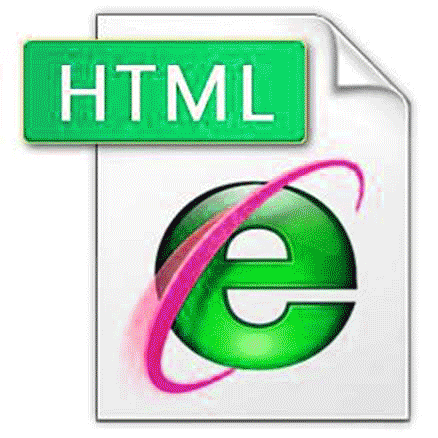
Hypertext Markup Language (HTML) serves as the fundamental cornerstone of the internet, powering every website and webpage visible on our screens. It's the language that structures the digital landscape we interact with daily, from social media giants like Facebook to online shopping platforms such as Google, Yahoo, and Amazon. HTML, when paired with CSS (Cascading Style Sheets), forms the core duo of web development, akin to two sides of a coin. Just as a coin loses its essence without both faces, HTML without CSS appears as a raw framework waiting for its aesthetic touch.
To delve into the underlying HTML code of any webpage, one can easily access it through web browsers like Mozilla Firefox, Google Chrome, Apple Safari, Opera Mini, Parle Moon, or Brave Browser by right-clicking and selecting 'View Page Source'. This reveals the foundational codes shaping the webpage's structure.
Types of H.T.M.L
HT M L
DHTM L
XHTM L
XM L
HTML5
What is HTML Editor?
These software tools, similar to MS Word, function as webpage editors under the WYSIWYG (What You See Is What You Get) principle. They streamline the coding process by automatically managing the initial and final sections of required code. Additionally, they offer drag-and-drop functionalities, allowing users to intuitively design elements by simply dragging and dropping with the mouse. However, the core intelligence behind their operation stems from the user's planning and conceptualization. With a well-devised plan in mind for code input, it's entirely feasible to craft a complete webpage even using basic notepad software.
Basic HTML Code: HTML Boilerplate
<DOCTYPE html>
<html lang="en">
<html> start
<head> head start
<meta charset="UTF-8">
<meta name="viewport" content="width=device-width, initial-scale=1.0">
<meta http-equiv="X-UA-Compatible" content="ie=edge">
<title>HTML 5 Boilerplate</title>
<link rel="stylesheet" type="text/css" href="/style.css">
<title>I am the webpage title</title>
</head> head end
<body> body start
<div id=header> start
<h1>I am the webpage header</h1>
</div> header end
<div id=content> start
<p>this is a paragraph</p>
</div> content end
</div> <!--this is an html comments-->
<script src="/index.js">
This is a javascript file linking code lines like Bootstrap
</script>
</body> body end
</html> html end
Upon completion, it's crucial to save this content, emphasizing the importance of naming the file 'home.html' or 'index.html'. The significance lies in recognizing where the file is stored, as it won't appear as a typical file but as an icon representing internet browser software like Google Chrome, Mozilla Firefox, or Internet Explorer. This initial file marks the inception of a webpage! Upon double-clicking, you'll encounter a simplistic display – just two lines: one stating 'I am the header of the web page' and the other 'This is a paragraph.' This embodies the fundamental essence of website creation. It's akin to the camera focusing from behind the movie screen, where inputting content in the backend manifests into a visual front-end, mirroring the cinematic experience on the screen.
HTML (HyperText Markup Language) is the backbone of web development, comprising various elements like tags, attributes, and properties that define the structure and content of a webpage.
Tags in HTML are fundamental markers used to enclose and define different types of content. They come in pairs, an opening tag, denoted by <tagname>, and a closing tag, denoted by </tagname>, encapsulating content between them. For instance, <p> represents the opening paragraph tag, while </p> signifies its closure.
Attributes provide additional information to HTML elements, enhancing their functionality or appearance. They're included within the opening tag and consist of a name and a value, separated by an equal sign. For instance, the <a> (anchor) tag utilizes attributes like href to define the hyperlink's destination or target to specify where the linked document should open.
Properties, on the other hand, are more commonly associated with JavaScript and CSS. In HTML, properties aren't explicitly defined within the markup language itself. Instead, they're used in conjunction with other web technologies like JavaScript to manipulate HTML elements dynamically. CSS employs properties to modify the appearance and layout of HTML elements, controlling aspects like color, size, positioning, and more.
HTML, with its assortment of tags, attributes, and their associated properties, allows developers to create structured and visually appealing web content. Understanding these components is crucial for building well-organized and functional web pages, ensuring proper layout, accessibility, and interactivity on the internet.
Advanced HTML represents a cornerstone in the realm of web design and development, fostering the creation of dynamic, interactive, and visually engaging web content. This language, constituting the structure of web pages, extends beyond the basics of HTML, delving into sophisticated techniques, elements, and integrations that enhance user experience and functionality.
At an advanced level, HTML encompasses a plethora of features such as the integration of multimedia elements using the <video> and <audio> tags, enabling seamless inclusion of videos, audio, and animations directly into web pages. Additionally, the <canvas> element empowers developers to render graphics, visualizations, and interactive animations through JavaScript.
Moreover, the advent of HTML5 introduced semantic elements like <article>, <section>, <header>, <footer>, and <nav>. These elements not only aid in structuring content but also facilitate accessibility and search engine optimization by providing clearer indications of a webpage's layout and hierarchy.
The prowess of advanced HTML extends to forms and input validation, leveraging attributes like required, pattern, and placeholder for enhanced user interaction and error prevention. Furthermore, the use of the <details> and <summary> tags allows developers to create collapsible sections, fostering a more compact and organized display of content.
Advanced HTML also intertwines with CSS and JavaScript to craft responsive, mobile-friendly designs through media queries, enabling web content to adapt seamlessly across various devices and screen sizes. This amalgamation paves the way for a more immersive and accessible browsing experience for users.
In the realm of server education, understanding advanced HTML goes hand in hand with comprehending server-side scripting languages like PHP, Python, or Node.js. Integration with server-side technologies allows for dynamic content generation, database interaction, and personalized user experiences.
Ultimately, mastering advanced HTML not only involves a deep understanding of its intricacies but also necessitates a holistic approach, incorporating CSS, JavaScript, and server-side scripting for comprehensive web development expertise, ensuring the creation of robust, scalable, and user-centric web solutions.
HTML, despite being a fundamental building block of the web, comes with its limitations and disadvantages, influencing the way content is structured, displayed, and accessed on the internet.
One of the primary limitations of HTML lies in its static nature. Traditional HTML lacks the ability to dynamically update content without manual intervention. This inherent limitation restricts real-time interactivity, compelling users to refresh the webpage to view updated information, resulting in a less seamless user experience.
Another drawback of HTML is its limited design capabilities. While HTML offers structural elements, it lacks the extensive styling features present in CSS (Cascading Style Sheets). Design aspects such as complex layouts, animations, and intricate visual effects are challenging to achieve with HTML alone, necessitating the use of additional technologies like CSS and JavaScript.
Accessibility poses another challenge within HTML. Despite progress in introducing semantic elements, ensuring comprehensive accessibility for users with disabilities remains a complex task. HTML might not inherently address all accessibility requirements, demanding developers to meticulously implement ARIA (Accessible Rich Internet Applications) attributes and follow best practices for inclusive design.
Furthermore, cross-browser compatibility issues persist with HTML. Different web browsers may interpret HTML code differently, leading to inconsistencies in rendering and functionality across various platforms and devices. This often requires developers to employ workarounds and additional code to ensure consistent display and functionality, increasing development time and complexity.
Security vulnerabilities also pose a concern in HTML-based applications. HTML, being a markup language, is susceptible to certain security threats like cross-site scripting (XSS) attacks and injection vulnerabilities. Developers need to implement strict security measures and adhere to best practices to mitigate these risks effectively.
Lastly, HTML alone cannot manage complex data and logic. While it can structure content, HTML lacks the capability for server-side processing or complex computations. To address this limitation, integration with server-side scripting languages like PHP, Python, or JavaScript frameworks like Node.js becomes essential, expanding HTML's functionality for handling dynamic data and logic.
CSS, the styling language, functions much like Photoshop in designing webpage aesthetics. While CSS codes usually remain separate from HTML, they come together to breathe life into the page, akin to adding muscles, facial features, and defining characteristics to an otherwise ghostly HTML structure.
Web design hinges on the synergy between HTML and CSS, and while Java and PHP power dynamic functionality, their codes often remain hidden on servers, with their results showcased through HTML + CSS amalgamation. In essence, nearly all other programming languages rely on HTML + CSS for web presentation.
For those eager to learn web design, a pivotal resource is www.w3cschool.com. This website offers comprehensive tutorials on HTML, CSS, and various programming languages crucial for web development, all available completely free of charge.
Cascading Style Sheets (CSS) stands as an integral companion to HTML in web development, profoundly shaping the visual presentation, layout, and overall aesthetic appeal of web content. The relationship between CSS and HTML is symbiotic, creating a harmonious partnership that empowers developers to craft stunning and dynamic web experiences.
HTML, as the backbone of web pages, primarily focuses on structuring content and defining its meaning through various elements and tags. However, HTML alone lacks the finesse to control design aspects such as colors, fonts, layout, spacing, and visual effects.
This is where CSS comes into play. CSS acts as a styling language that complements HTML by providing a separate set of rules and instructions. It allows developers to precisely dictate the appearance and behavior of HTML elements, enhancing the presentation and user experience. Through CSS, developers can alter the look and feel of multiple web pages by modifying a single style sheet.
The integration of CSS with HTML is achieved through selectors, properties, and values. Selectors target specific HTML elements, classes, or IDs, allowing developers to apply styling rules selectively. Properties define the visual attributes to be modified, such as color, font size, margin, padding, and more. Values assigned to properties determine the specific characteristics of the elements, like blue for color or 20px for size.
The use of CSS simplifies the maintenance of web projects by separating content (HTML) from presentation (CSS). This separation of concerns enhances code readability, scalability, and efficiency, enabling easier updates and modifications without altering the underlying HTML structure.
CSS also facilitates responsiveness and adaptability in web design through media queries. With media queries, developers can create responsive designs that adapt to various screen sizes and devices, ensuring optimal viewing experiences across desktops, tablets, and mobile phones.
Moreover, CSS frameworks and preprocessors further streamline the styling process, offering pre-written code snippets, classes, and tools to expedite development and maintain consistency across projects.
In essence, the relationship between CSS and HTML is indispensable in web development. CSS empowers developers to breathe life into HTML content, transforming it from a mere structural layout to a visually compelling and user-friendly experience, elevating the standards of modern web design.
Basic CSS Code:
*
{
padding:0px;
margin: 0px;
}
body{
background-color: orange;
background-image: URL("/img/matriximg.jpg");
background-attachment: fixed;
background-repeat: no-repeat;
background-position: center;
}
#wrapeer{
float: left;
margin: auto;
width:1349px;
height: auto;
background: transparent;
}
Save style.css by writing it like this: style.css
Basic Elements:
These are fundamental HTML elements styled using CSS, such as <div>, <span>, <p>, <h1> to <h6>, <a>, <img>, etc.
Selectors:
Class Selectors: Denoted by a dot (e.g., .classname), allowing developers to apply styles to specific classes.
ID Selectors: Denoted by a hash symbol (e.g., #idname), used to target unique elements.
Attribute Selectors: Target elements based on specific attributes (e.g., [attribute=value]).
Pseudo-classes and Pseudo-elements:
Pseudo-classes: Include : hover, : focus, : active, :nth-child(), :first-child, :last-child, etc., used to define styles based on element states or positions.
Pseudo-elements: Like ::before, ::after, ::first-line, and ::first-letter, used to style specific parts of elements.
Properties and Values:
Text Properties: color, font family, font size, text-align, text-decoration, etc., for styling text content.
Box Model Properties: margin, padding, border, width, height, box-shadow, border-radius, etc., to control layout and spacing.
Flexbox and Grid Properties: display: flex, flex-direction, justify-content, align-items, grid-template-columns, grid-gap, etc., for advanced layout control.
Transitions and Animations:
Transitions: transition-property, transition-duration, transition-timing-function, transition-delay, enabling smooth property changes.
Animations: @keyframes, animation-name, animation-duration, animation-timing-function, animation-delay, animation-iteration-count, animation-fill-mode, offering complex animations.
Responsive Design:
Media Queries: Using @media to apply styles based on device characteristics like screen size, orientation, resolution, etc.
Vendor Prefixes and Experimental Features:
Vendor Prefixes: Used for experimental or browser-specific properties (e.g., -WebKit-, -Moz-, -ms-, -o-) to ensure compatibility.
CSS, with its wide array of elements, extensions, and capabilities, forms the backbone of modern web styling. This overview showcases the diversity and richness of CSS, allowing developers to craft visually stunning and responsive web experiences.
To be continued...
![]()

An overwhelming 80% of individuals lack awareness of the core issue at hand. Similar to a kite's swift movement, which manages to avoid its own entanglement, rushing behind the apparent problem might not yield the right solution. The crucial step lies in recognizing the problem itself; this initial identification paves the way for resolution. In fact, half of the solution is achieved simply by pinpointing the problem accurately. Once identified, myriad solutions present themselves, simplifying the path to resolution significantly. Hence, the foremost step in problem-solving is correctly identifying the issue. Overanalyzing problems without this crucial step is unwise and ultimately counterproductive.
Strategies for Problem Identification:
o Trace the root of the problem: Understand its origin and what led to its emergence.
o Ponder deeply to comprehend the problem's evolution: Delve into the circumstances that triggered it without relying on mere assumptions.
o Avoid overlooking minor issues: Address small problems rather than dismissing them, as they can often contribute to larger complications.
o Break down substantial issues into smaller, manageable parts: This facilitates a more systematic approach to resolution.
o Maintain composure: Refrain from hastily attempting to solve the problem before fully understanding it.
o Avoid repetitive rumination: Instead of dwelling on the same issue repeatedly, focus on progress and potential solutions.
o Engage logical thinking over emotional reactions: Evaluate problems with a clear, rational mindset rather than being influenced by emotions.
o Document potential causes: Write down all conceivable reasons for the problem and meticulously analyze each one.
o Seek guidance: Consult with experienced individuals to gather diverse perspectives and relevant information necessary for addressing the issue effectively.
o Engage in conversations with trusted friends, family, or mentors who can provide an outside perspective on potential issues you might be facing.
o Clearly define and articulate the problem you are facing. This step involves breaking down the issue into smaller components for better understanding.
o Recognize your emotions and how they might be linked to the identified problem. Emotional self-awareness can often shed light on personal issues.
o Identify any recurring patterns or behaviors that might be contributing to or perpetuating the problem.
o Evaluate how the problem is impacting different aspects of your life, such as relationships, work, health, and overall well-being.
o Consider seeking guidance from a therapist, counselor, or psychologist who can offer professional insights and techniques for problem identification.
o Establish clear goals for resolving or managing the identified problem, considering both short-term and long-term objectives.
o Determine the urgency and importance of the problem in your life, prioritizing those that require immediate attention.
o Acknowledge that personal problems exist and take ownership of addressing them to initiate the problem-solving process.
Approaches to Problem Solving:
o Acquire comprehensive knowledge: Prior to problem-solving, gather essential information and insights about the issue at hand.
o Opt for the best decision-making route: Choose the most effective approach that ensures optimal results.
o Evaluate feasible solutions: When multiple solutions exist, assess their practicality and viability within the real context before implementation.
o Persevere through attempts: Consistently make efforts and persist in finding a resolution.
o Exert diligent effort: Hard work and dedication are crucial components in overcoming challenges.
o Harness the power of imagination: Utilize creative thinking and imagination alongside sheer determination.
o Manage complexity: If a problem appears overly intricate, consider revisiting it at a later time with a fresh perspective.
o Strive for maximum potential: Aim to reach your full capacity rather than settling for less.
o Success isn't always absolute: Recognize that achieving a 100% solution might not always be feasible, but aiming for a 95% solution is a notable success.
o Cultivate adaptability in problem-solving: Continuously refine your approach to dealing with challenges, emphasizing resilience and improvement.
o Disassemble the issue into smaller, more manageable components to gain a deeper understanding of its complexities and inner workings.
o Engage in mindfulness practices or introspection to cultivate mental clarity and explore potential resolutions from a centered perspective.
o Welcome unconventional viewpoints and remain open-minded to innovative or unexpected solutions, avoiding rigid thinking patterns.
o Employ creative brainstorming techniques to foster inventive problem-solving, encouraging unconventional thinking and fresh approaches.
o Seek advice, guidance, and diverse insights from trusted individuals such as friends, family, mentors, or support groups to gain varied perspectives.
o Conduct comprehensive research to gather pertinent information, enabling well-informed decisions and a deeper grasp of potential solutions.
o Embrace a trial-and-error approach, learning from mistakes and allowing space for adjustments and refinements in the quest for solutions.
o Set clear, attainable objectives aligned with problem resolution, crafting step-by-step plans or strategies to achieve these goals.
o Contemplate consulting therapists, counselors, life coaches, or experts in relevant fields for specialized insights and guidance.
o Initiate positive actions aimed at resolving the issue, recognizing that progress often stems from proactive efforts, even in the absence of immediate solutions.
o Remain flexible in problem-solving approaches, being willing to adapt and experiment with different methods until finding the most effective ones.
o Emphasize self-care practices encompassing exercise, healthy nutrition, sufficient rest, and stress management techniques. A nurtured mind and body are better equipped to address challenges effectively.
Combining and tailoring these strategies based on the specific nature of personal issues can significantly enhance problem-solving endeavors. Remember, navigating personal problems often demands patience, resilience, and a willingness to explore diverse avenues for resolution.

Of all the intricate wonders in the world, the human mind stands supreme, a realm that embraces both logical reasoning and irrational facets. Amidst these complexities lies the eternal quest of individuals attempting to decipher and harness the trajectory of their futures. Human knowledge, a vast expanse without boundaries, constantly entwines self-understanding and self-recognition, presenting a labyrinth that often confounds individuals in their pursuit of existence. The juxtaposition of supremacy and religion doesn't necessarily breed conflict, yet many struggle to acknowledge this, adhering staunchly to their own beliefs. The true adversary here is ignorance an underlying factor in numerous sinful or wrongful actions witnessed across the globe. What appears righteous to an individual today often reveals its folly over time, revealing the folly inherent in human choices. Humanity often treads unwittingly into a mental realm that diverges from reality a labyrinth of imagination from which we frequently return to the tangible world. Yet, this oscillation carries a certain finesse that imparts to humanity a sense of purpose. Fear, shame, spirituality, benevolence, and affection these are intangible elements constituting our innermost being. Hey, remain ethereal and intangible, yet susceptible to being caged by our own volition. With proper guidance, they comply, shaping our thoughts and actions. Is it conceivable for another individual to infiltrate the psyche of another and unravel the sought-after truth? In childhood, guardians influence life meticulously, but how do mature individuals undertake the task of mastering their own minds? Can one squeeze every drop of potential from life, akin to extracting juice from chickpeas? Those who adeptly navigate this endeavor often assume managerial roles in today's realm, wielding a power that eclipses mere material wealth and worldly dominance. There's an underlying logic and a profound understanding that propels these individuals to such positions, marking this influence as an invaluable force in the present world. The sharpness of your thinking, honed by the influences of materialism, allows you to grasp the essence of humanity even in someone half your age an understanding that is innate and as fundamental as nature itself. Those who have left a lasting impact on the world, often considered exceptional, are fundamentally ordinary individuals, much like you and me. There exists no external or miraculous quality; instead, all actions are rooted in mundane logic. Human beings, at their core, are ordinary creatures beginning as organisms and culminating in the same fate. Let us delve into understanding our thought processes and how we can navigate our existence to yield optimal results. You need not resort to meditation, autosuggestion, or telepathy for this journey; rather, ponder upon your own thoughts. There's no need to delve into complexities, for complexity brings peril. While some innate qualities may work naturally from birth, it doesn't elevate you above life's challenges. You, too, are an evolved form of nature. Those dismissing nature's significance shall eventually realize its omnipresence. What truly matters is one's courage and moral fortitude. Many assume they possess profound knowledge, yet this confidence often stems from ignorance. Wise individuals, who truly comprehend or possess abilities, shun such misconceptions, for they grasp the essence of true knowledge. Science often propels the belief that it unlocks the gateway to immortality, a notion that many question for its realism. Science, however, constitutes an inexhaustible exploration of doubt, fantasy, and the surreal. While history witnessed many engaged in meditation and wisdom, their absence today doesn't signify their immersion in the shadows of the world touched by the light of science. These individuals, akin to modern-day ascetics, don't adorn themselves in traditional attire, instead immersing themselves in the world around them. They remain surrounded by a multitude of like-minded souls, both living and departed, performing their duties fearlessly, yet often unnoticed in a world teeming with millions. Embrace the belief that the world is your canvas, harboring thoughts to embellish and improve it, to harness a profound force. Many may already resonate with this notion, and I am humbled and grateful to know them. Scientifically Rational Facts: The brain generates energy akin to electricity, manifesting as heat, pressure, or sensation. This energy undergoes a division into four distinguishable components. While this categorization serves the purpose of facilitating our understanding and analysis, consider the example of time: It lacks a specific aspect or dimension; however, for ease of comprehension, we have organized time into the present, past, and future on our calendars…
Mind-Brain, Thought-Consciousness Level:
- Beta-conscious
- Alpha-subconscious
- Theta-sub-subconscious
- Delta-unconscious
The brain functions optimally during idle periods because, similar to an electrical circuit, its immune system operates at its lowest when the brain utilizes its complete energy reserves. This explains why individuals often find ingenious solutions by maintaining a composed mindset during moments of imminent danger. In terms of the brain's pulse cycle, a rate of 14 vibrations per second denotes the beta level, correlating with tasks involving worldly engagements much like the state you're in while reading this. Vibrations ranging between 7 signify the alpha level, often experienced during drowsiness or daydreaming, just before falling asleep, or upon waking up. As the brain pulsates at 4, entering the theta level, a state of sleep ensues, disconnecting one from the material realm. Finally, as the brain wave's 'beat' declines from 4 to '0', the brain reaches the delta level, where unconsciousness or an almost inert state, akin to being alive but unresponsive, may prevail.
Specific questions:
- Does the body heed the mind's commands?
- Does the mind heed the body's signals?
- Where does the mind intersect with the body?
- What differentiates the brain from the mind?
- How do the five senses function, and is there a sixth sense? Can I harness all five senses effectively?
- Can I instigate change in the world around me?
- Can I exert influence upon objects in my environment?
- Can I perceive my desired objects by fully utilizing my senses?
- Do I truly understand myself?
- Can I freely express my thoughts? To what extent?
- What defines spirituality for me?
- How do I distinguish materialism from reality?
- Can imagination or thoughts sway my body and mind involuntarily?
- Do I possess greatness within me?
- What defines my existence?
- Is the pace of my thoughts faster or slower than the speed of light per second?
- Do I struggle to control my emotions?
- Am I capable of mastering my own mind?
- Do I perceive myself as inherently good or bad?
- Can I discern reality by applying logical divisions?
- Who truly am I ?
![]()
Transformation of Will Power and Imagination
Written by Administrator 
Where there's a will, there's a way a mantra ingrained in our approach to life. The dynamic interplay between willpower and imagination shapes our endeavors. Although distinct, these powers complement each other, prompting reflection on the relationship and disparity between them.
Desire, an intangible force, aligns with imagination, both eluding the grasp of the physical eye. To decipher the intricacies of will and imagination, a closer examination of their characteristics is imperative.
Consider the aspiring graphic designer who diligently completed courses, accumulating knowledge and experience. Yet, a perplexing obstacle arises when attempting to create something new. Despite mastering the rules of design through unwavering willpower, a sense of incompetence lingers. The dichotomy between the craftsman driven by will and the artist fueled by imaginative joy becomes apparent the artist prevails in the battle of will versus imagination.
In another scenario, a fervent desire for a computer materializes, only to result in unexpected failure. The quest continues, prompting contemplation on the correlation between desire and capability. What unfolds is a nuanced exploration of the delicate balance between aspiration and capacity.
Life unfolds as days and months pass, the coveted computer remaining elusive. Pondering the nature of existence, questions emerge. What does life truly entail, and how does one visualize it? The connection between demand and power takes center stage, urging consideration of the rationality behind imaginative constructs.
The inquiry extends further, questioning the feasibility of implementing irrational imagination. What defines the specific external attributes of an object? How does one structure the adventure of an idea, and what sensations should it evoke when touched? These contemplations delve into the intricate interplay between imaginative ideation and the practicality of realization.
In essence, the exploration of willpower and imagination unravels as a multifaceted journey—one that transcends the dichotomy of desire and capability, embracing the nuanced dance between aspiration and the tangible. Through this exploration, the seeker navigates the delicate balance between the ethereal realm of imagination and the concrete manifestations fueled by an unwavering will.
I envisioned the computer monitor, sleek and black, standing proudly next to the PC. The PC itself bore a contrasting color scheme part of it in elegant black, while other sections shimmered in silver. In my mind's eye, I carefully arranged them on the table, the monitor strategically positioned near my hand. This mental tableau played out vividly, each detail meticulously crafted.
As my imagination unfolded, I conjured the scenario of supplying AC 120-volt current to the monitor. The moment arrived when I flicked the power switch, and a surge of energy breathed life into the screen. With seamless precision, I powered up the PC, witnessing the familiar dance of the operating system coming to life. The computer, now fully operational, stood as a testament to the power of my imagination. Eagerly, I grasped the mouse, clicked, and began typing one of my favorite poems with a luminous pink font.
Yet, in the realm of the tangible, none of these elements existed. It struck me the profound influence of human imagination on reality. An inexplicable restlessness gripped me as I realized how my mind, body, and soul responded to the imagined scenario with a sense of truth. The colors, textures, and scents felt so palpable that I had to consciously challenge the logic of my subconscious mind, affirming the authenticity of the experience.
The unconscious rational mind, resistant to accepting what it perceives as fiction, surreptitiously aligns with the potent subconscious mind. Like a magical force, the subconscious continually manifests the envisioned object into the material world, defying the logical constraints. My imaginative journey concluded, leaving me in anticipation of a forthcoming holiday.
Having released my needs through vivid visualization, I now find myself in a state of patient anticipation, knowing that the envisioned event will materialize. This process, I recognize, is universal an experience shared by all, yet often misunderstood.
The awe-inspiring moments occur when the once-imagined, seemingly unreal object materializes before my eyes. Gratitude wells within me, directed toward the Universal Supreme Power, the Creator, abundant in nature. In our ignorance, we grapple with the complexity of asking for what we need, oblivious to the abundance surrounding us.
In the crucible of personal development, the dynamic interplay between willpower and imagination sparks the alchemical transformation that propels individuals toward new heights of achievement. These two potent forces, often regarded as distinct entities, are intrinsically linked in the journey of self-discovery and growth.
Willpower serves as the catalyst that propels individuals to action. It is the internal driving force that empowers us to set goals, overcome obstacles, and persevere in the face of challenges. Whether pursuing a fitness regimen, learning a new skill, or navigating the complexities of life, willpower fuels the determination to stay the course and achieve desired outcomes.
Imagination, on the other hand, acts as the visionary architect of our aspirations. It is the wellspring from which creative ideas and innovative solutions emerge. Imagination allows us to envision possibilities beyond the constraints of the present, providing a mental canvas on which we can paint the future we desire. It is the precursor to manifestation, shaping the reality we seek to create.
The Synergy of Willpower and Imagination
The true magic unfolds when willpower and imagination converge. Willpower provides the discipline and perseverance needed to translate imaginative visions into tangible actions. As goals are set, the imaginative mind weaves a narrative of success, imbuing the journey with purpose and meaning. The synergy of these forces transforms abstract dreams into concrete reality.
Overcoming Limiting Beliefs
However, this transformative journey is not without its challenges. Limiting beliefs, self-doubt, and fear often loom as obstacles along the path. Harnessing the combined strength of willpower and imagination becomes essential in dismantling these barriers. Through conscious effort, individuals can reframe their narratives, replacing doubt with determination and fear with a bold vision of what is possible.
Continuous Evolution: The Outcome
The alchemy of personal evolution occurs through the continuous interplay of willpower and imagination. As one grows in strength, so does the other. The individual evolves, not as a static entity, but as a dynamic force navigating the ever-changing landscape of personal and professional aspirations.
In conclusion, the transformation of willpower and imagination is an ongoing, cyclical process that defines the trajectory of personal growth. By understanding and leveraging the symbiotic relationship between these two forces, individuals can unlock the full spectrum of their potential, turning dreams into reality and embracing the boundless possibilities that lie ahead.
![]()
Child Education and Modern Technology Education
Written by Administrator
At one point during our adulthood, we encountered early childhood education, a method that may appear unconventional to many but indeed proved to be an astute decision. Presently, our country has seen a remarkable surge in the number of educated adults. However, the scenario in villages or municipal cities is quite different. As of the year 2020, what lies before us? Frequently, we hear people express their confusion about operating mobile functions!
This challenge isn't limited to less educated adults. Even graduates proficient in English encounter hurdles while navigating Android touch screen mobiles or laptops. Numerous seniors find themselves intimidated, often claiming, "I cannot operate mobile devices, and I have no inclination to learn." The crux of the issue is the novelty of these technologies, as they've not been familiar with them previously. Initially, learning to ride a bike or swim appeared daunting. Once mastered, it transforms into a pleasurable activity, akin to a game.
However, our focus today is on individuals aged between their 30s and 60s. After their regular work hours, from 8 AM to 4 PM, they will engage in childhood education technology classes using pen drives and laptops in Sylhet and Chowk. These sessions aim to familiarize participants with mobiles, computers, laptops, and more, fostering connectivity with organizational activities.
Having an interest in and the proficiency to engage with the latest advancements in electronics is crucial. We firmly believe that there's no specific age for acquiring knowledge, and the pursuit of learning has no boundaries or limitations.
Technology education for adults aged 40 holds immense potential, offering diverse aspects that cater to their professional growth, personal development, and adaptability in an evolving digital landscape. At this stage, adults can benefit significantly from up-skilling or re-skilling in technology. They can explore courses or programs focused on digital literacy, coding, data analysis, cyber security, or cloud computing to enhance their career prospects in various industries. Moreover, adults in their 40s can leverage technology education to navigate the digital world more effectively, improving their efficiency in everyday tasks, financial management, and communication through the use of digital tools, applications, and platforms. Additionally, technology education fosters critical thinking and problem-solving skills, empowering individuals to stay abreast of technological advancements, thereby enhancing their adaptability and confidence in utilizing emerging technologies for both personal and professional growth.
![]()
Inventor Nikola Tesla's Actions Will Never Die...!
Written by Administrator
A Scientific blessing Nikola Tesla, a name that resonates with awe and admiration in the realm of science, has left an indelible mark on the world. From his groundbreaking inventions to his eccentricities, Tesla's legacy is as fascinating as it is profound.
Powering the future Elon Musk, the visionary entrepreneur, brought Tesla's name back into the limelight by integrating his electric engine into the iconic Tesla Car. This move not only honored Tesla's contributions but also propelled his name across the globe.
Tesla's contributions to the power of alternating Current:
Tesla's groundbreaking introduction of Alternating Current (AC) sparked a transformative wave, energizing not just household gadgets but also fueling the expansive landscape of industrial civilization. Tesla's visionary quest Tesla dared to dream of wireless energy transmission, a concept that still captivates minds today In the face of financial challenges, his commitment to science stood resolute and unwavering. Tesla’s alien connections! Speculations about Tesla's contact with aliens add a layer of mystery to his story. Some even argue that his inventions align more with extraterrestrial technology than conventional science.
Tesla's Formidable Creations:
- Radio
- Tesla Coil
- Tesla Turbine
- Magnifying Transformer
- Electronic Induction
- Tesla Oscillator
- Lights
- Teleforce
- X-ray
- Wireless Transformation
- Smartphone
- Laser Beam (Death Ray)
- Remote Control
- Robotics advancements
Beyond science, the quirks of Nikola Tesla: The struggle with obsessive-compulsive disorder
Tesla's battle with OCD, manifested through germ aversion and a fixation on the number three, added complexity to his character.
Tesla's burden despite his brilliance, Tesla often found himself in debt due to ambitious claims and promises, straining his relationships with investors.
Lack of self-promotion Tesla's reluctance to self-promote led to missed opportunities for wealth and recognition, a stark contrast to his significant contributions.
Tesla's Isolation is known for his aloofness, Tesla's tendency to work in isolation hindered collaboration, occasionally limiting the exchange of ideas.
Tesla's unique perspectives Tesla's fascination with wireless energy transmission and claims of extraterrestrial communication raised eyebrows within the scientific community.
Remembering Nikola Tesla In the face of personal struggles, Tesla's contributions to science and technology far surpass any shortcomings. His remarkable intelligence became the bedrock for various current technologies, establishing his lasting legacy in the chronicles of history.A tribute to Tesla's immortality, In conclusion, Nikola Tesla's life, marked by genius and eccentricities, continues to inspire awe. The scientific community grieves his departure, recognizing that enduring intellects such as Tesla transcend mortality, persisting through the lasting influence of their groundbreaking contributions. Delving into the life of Nikola Tesla is like embarking on a journey through the corridors of brilliance and eccentricity. Born with a purpose, Tesla's influence on science is immeasurable, his legacy woven into the very fabric of our technological present.
The alternating current revolution Tesla's revolutionary alternating current (AC) transformed the world, providing the backbone for modern electricity distribution. From everyday appliances to industrial machinery, AC became the lifeblood of progress. Tesla's dream of wireless energy transmission, though fraught with financial challenges, remains a testament to his unwavering commitment to pushing the boundaries of scientific exploration. Controversy encircling Tesla's purported encounters with extraterrestrial entities introduces a captivating dimension to his life story. Some argue that his ideas were too avant-garde for his time, suggesting a connection to advanced alien technology.
Tesla's Inventive arsenal is more than electricity. The roster of Tesla's innovations unfolds like a melodic masterpiece of ingenuity. Beyond the ubiquitous AC, his creations spanned from the Tesla Coil to groundbreaking advancements in robotics, each a testament to his unparalleled ingenuity.
The Tesla turbine powering the future. Tesla's turbine design, though less acknowledged, laid the groundwork for efficient energy conversion, influencing modern power generation. Tesla Electric Induction a Quiet Revolution. His work on electronic induction formed the backbone of numerous technologies, underscoring Tesla's impact on the electronic landscape.
Nikola Tesla's secrets of 3, 6, and 9, fascination with numerology was a captivating aspect of his intricate mind. Delving into the significance of numbers, he firmly believed in the profound connection between the universe and fundamental principles of Numerology.The mystical triad 3, 6, 9, Tesla's devotion to numbers extended to a particular trio - 3, 6, and 9. He believed that these numbers held a secret identity in the universe, a concept intertwined with his spiritual and scientific beliefs.
The enigma of 3, 6, and 9, numerical legacy delving into Tesla's interpretations of these numbers reveals a mystical connection to the universe's fabric. Some even attribute Tesla's exceptional insights to a higher understanding of the secrets embedded in the numerical patterns of 3, 6, and 9. Tesla's Numerological Influence on Culture Phenomenon Internet Culture and Numerical Rhythms In the age of the internet, Tesla's name and the rhythmic allure of his favored numbers have become a prominent part of online culture. The mystique surrounding 3, 6, and 9 echoes through internet forums and discussions, creating a digital legacy.
Numerology and Modern Usage Impact in today's world, Tesla's name resonates not just in scientific circles but also in the numerical undercurrents of internet usage. The allure for these numerical sequences mirrors the lasting influence of an ingenious intellect on the digital terrain. Tesla's Numeric Legacy from inventions to Numerology. The numbers behind the inventions as we explore Tesla's extensive list of inventions, one cannot ignore the numerical precision embedded in each creation. From the Alternating Current to the Tesla Coil, the numerical order of Tesla's inventions adds a layer of significance. In Tesla's enduring legacy, the systematic progression of his inventions, spanning from 1 to 15, reveals an intentional arrangement of numerical patterns. This structured approach not only showcases Tesla's mathematical acumen but also hints at a deeper, perhaps Numerological inspired, design.
The Continuing Influence, Tesla's Numeric Resonance Tesla's name is a numeric symbol in the world of internet usage; Tesla's name has become synonymous with a rhythmic and numeric resonance. The cultural fascination with Tesla's favored numbers adds a unique dimension to his already iconic status.
Numerology in online imagery the current internet culture often incorporates Tesla's name and numerical patterns into memes, creating a visual representation of the ongoing fascination with the numerical legacy left by the great inventor. Tesla's numbers in the digital age In conclusion, Tesla's numerological musings continue to captivate minds in the digital age. From the mystique of 3, 6, and 9 to the online resonance of his name, Nikola Tesla's fascination with numbers has transcended time, leaving an enduring imprint on both science and internet culture.
The quirks and complexities of Tesla's persona OCD and the number Three have a unique mind. Tesla's battle with Obsessive-Compulsive Disorder (OCD), marked by germ aversion and a fixation on the number three, adds depth to his persona.
Tesla financial struggles, a Price for Ambition. Despite his exceptional brilliance, Tesla's inclination towards bold assertions frequently plunged him into financial upheaval, placing strain on relationships with potential supporters. Tesla's reluctance to self-promote, a stark contrast to the contemporary spirit of entrepreneurship has resulted in overlooked chances for financial prosperity and broad acknowledgment. The price of innovation, his propensity for isolation, and his unorthodox beliefs, including wireless energy transmission and claims of extraterrestrial communication, positioned him as an enigmatic figure.
Tesla's immortal Impact, beyond personal struggles. In conclusion, the complexities of Tesla's character do not overshadow his monumental contributions. His inventions, often underappreciated in his time, continue to shape the technological landscape, ensuring his immortality in the annals of science.
A final tribute to Nikola Tesla, a forward-thinking individual who dedicated his life to the exploration of science, leaving behind an enduring legacy. While misunderstood in his time, his genius prevails, and the world owes him a debt of gratitude for lighting the path to our technological future...
![]()

1st part
Shopping online is as fun as it is easy! While shopping is an enjoyable experience, it can become problematic when unable to purchase the desired product. Shopping online presents challenges as everyone must comply with regulations, and not everyone possesses the means or tools required to buy a product they suddenly fancy. In such cases, individuals might find themselves reliant on external assistance or organizations to facilitate their purchase. We need to find the answers to the first few questions:
How to pay money online?
- What is a debit card?
- What is a credit card?
- What is a Nexus card?
- What are Visa and MasterCard?
- What is Bitcoin and Encrypt Money (Cryptocurrency)?
- Bikash, UKash, Rocket, Sure Cash What kind of (M-commerce) transaction medium is these?
- What is a merchant account?
- How many types of merchants are there? Who are these for?
- What is the means of delivery of goods (Product)?
- How to get the purchased product on hand?
- What is meant by product quality?
- Do you have to pay more for the product when buying online?
- Is it mandatory to pay online after ordering the product?
FAQs:
- What is the Billing address?
- What is the Shipping Address?
- What is the Payment Method?
- What is Product Delivery?
- What is Courier Service? How does it work?
- What is a Credit Card? What is a Debit Card?
2nd part
Shopping online using cryptocurrency has become increasingly popular due to its convenience and security. Here’s a step-by-step guide on how to navigate e-commerce platforms and make purchases using digital currencies:
Select an E-commerce Platform: Look for online retailers that accept cryptocurrency as a payment method. Several major platforms like Overstock, Shopify stores, Newegg, and others support crypto transactions. Additionally, specialized marketplaces like Bitrefill for gift cards or OpenBazaar for decentralized shopping offer a wide range of products.
Create an Account: Sign up or log in to your account on the chosen e-commerce platform. Ensure your profile is verified and set up correctly.
Choose Products: Browse through the available products or services and add the desired items to your cart.
Proceed to Checkout: Once you've finished selecting items, proceed to the checkout page. Select cryptocurrency as your payment method. The platform will provide options for various cryptocurrencies like Bitcoin, Ethereum, Litecoin, etc.
Check Payment Details: Review the payment details, including the total amount in cryptocurrency, the conversion rate, and any additional fees.
Make Payment: Use your cryptocurrency wallet to complete the transaction. The platform will generate a QR code or provide a wallet address for you to send the exact amount of cryptocurrency required.
Confirm Transaction: After sending the payment, wait for the confirmation. Blockchain transactions may take some time to process, depending on network traffic and the specific cryptocurrency used.
Order Confirmation: Once the payment is confirmed, the e-commerce platform will provide an order confirmation, and your purchase will be processed for shipping or digital delivery.
Track Your Order: Utilize the order tracking system provided by the platform to monitor the status of your purchase until it reaches your doorstep or is digitally delivered.
Ensure Security: Ensure your cryptocurrency transactions are secure. Double-check wallet addresses before sending funds and use reputable wallets with strong security measures.
Stay Updated: Keep an eye on your cryptocurrency wallet for the transaction status and any potential refund processes if necessary.
Review and Feedback: After receiving your purchase, consider leaving a review or feedback about the product and your shopping experience on the platform.
The availability of cryptocurrency as a payment method might vary among different e-commerce platforms. Always verify the legitimacy and security of the platform before making any transactions.
Shopping online with cryptocurrency offers a secure and decentralized payment method, ensuring privacy and reducing the reliance on traditional banking systems. With proper precautions and a trusted platform, it can provide a seamless shopping experience for users invested in the world of digital currencies.
![]()
A Taste of New Programs in an Old Programming Language
Written by Administrator 
Computer programmers have many ideas about the program that they want to solve with the program. That is, all the problems that people have in their daily life can be easily solved by computer's mathematical logic, analysis and programming coding. According to the commands that the programmers type from the keyboard, the code line commands inside the motherboard are converted into the central processing unit and output as a result. In fact, the computer has its own language, which is created by humans. But computers do not understand the language that humans speak. Among the different computer languages are:
- FORTRAN
- COBOL
- C/C+/C#
- JAVA
- PHP
- RUBY
- PYTHON
- PASCLE
- ABC
The programming languages mentioned above work in two ways on the computer circuit motherboard, one is low level and the other is high level or high level.
Computer languages operate at these two levels and their practical application is proportional.
Among the computer programming languages mentioned above, C program is the most widely used and many other programs have been developed from this C program. A wonderful computer program! Can't stop talking about the praises and virtues of C. It has applications in almost every field of the modern world, from computer operating systems, software to rocket science.
Many times newbies come to learn programming/coding with great interest. After a while they fall off. Again after some time they start again but cannot sustain. There are some students who somehow pass the college/university textbooks but in reality they remain clumsy.
But any programmer whether he learns or learns on his own as a freelancer if he knows how to code and can solve any problem that comes in front of him with coding thinking (ability to write scripts - not copy and paste) then that is real programmer.
One thing that most people do wrong is to learn one program first, then after a while they don't like it anymore, then they give it up and start learning another computer language. In this way he knows little by little many programming languages but because he doesn't know any language at all, he basically can't do anything.
There is a surprising similarity between programming languages: in almost all languages, strings, variables, conditions, statements, loops, boolean etc. are almost the same, only the coding of statements or declarations is slightly different. If he can master any one programming language well then any other language like C program will be easy for him.
2024 sees widespread use of Python programming language in the dynamic era of Blockchain, Metaverse, Artificial Intelligence, Cryptocurrency, Bitcoin, Metaverse and NFT. Many things are possible to do very easily with Python language.
Here is a short list of what can be done with the Python language:
Python, renowned for its versatility, caters to a wide spectrum of tasks across multiple sectors. Below are some examples of what Python offers:
In web development, Python represents frameworks like Django and Flask, which are ideal for building dynamic websites, web applications and APIs.
For data analysis and visualization efforts, Python boasts libraries such as NumPy, Pandas, and Matplotlib, enabling powerful data manipulation, analysis, and visualization, thereby empowering data science and analysis efforts.
Python's expertise in machine learning and artificial intelligence is evident through its extensive libraries, including TensorFlow, Keras, PyTorch, and Skit-Learn, which facilitate the development of sophisticated machine learning models, neural networks, and AI applications.
Scripting tasks find a reliable ally in Python, often employed to automate repetitive tasks, streamline system administration, and manage batch processing operations.
Thanks to libraries like Tkinter, PyQt, and wxPython, Python also serves as the basis for developing desktop GUI applications.
In game development, Python shines as a scripting language through libraries like Pygame or in famous game engines like Unity or Unreal Engine.
Although not as popular as other languages, Python remains a viable option for developing mobile apps supported by frameworks like Kiwi or Bwire.
Python's simplicity and extensive library make it well-suited to network programming efforts, including tasks such as socket programming, web scraping, and API interaction.
In the scientific computing and engineering domains, Python widely adopts libraries such as SciPy, SymPy, and OpenCV to facilitate numerical computing, symbolic mathematics, and computer vision tasks.
Additionally, Python's readability and simplicity make it an exceptional choice for teaching programming to beginners and for creating educational materials and tutorials.
These examples only scratch the surface of Python's versatility, as it finds applications in various domains such as finance, cybersecurity, automation, and beyond.
Python has made many important contributions in various fields. Here are some of its greatest contributions:
Simplicity and Readability: Python's clean and easy-to-understand syntax lowers the barrier to entry for programming, making it accessible to beginners and experienced developers alike. Its readability promotes collaboration and code maintainability.
Versatility: Python's adaptability shines through its ability to cater to a diverse array of tasks, spanning from web development, data analysis, and machine learning to scientific computing, automation, and beyond. Its flexibility has led to its widespread adoption in various industries.
Community and Ecosystem: Python boasts a vibrant and supportive community of developers, contributors and enthusiasts. The extensive ecosystem of libraries, frameworks, and tools built around Python enhances its capabilities and accelerates development.
Teaching and learning: Python's simplicity and readability make it an excellent language for teaching programming concepts and encouraging computational thinking. It is widely used in educational settings, from elementary schools to universities, to introduce students to programming.
Data Science and Machine Learning: Python has emerged as a leading language for data science and machine learning due to its rich ecosystem of libraries such as NumPy, Pandas, Matplotlib, scikit-learn, TensorFlow and PyTorch. These tools enable researchers and practitioners to analyze data, build predictive models, and deploy machine learning solutions.
Web Development: Python offers powerful frameworks like Django and Flask for building web applications, APIs, and dynamic websites. Its simplicity, scalability, and robustness make it a popular choice for web development projects of all sizes.
Automation and Scripting: Python's ease of use and extensive standard library make it suitable for automating tasks, scripting, and system administration. It is commonly used to streamline workflows, manage infrastructure and automate repetitive tasks.
Scientific computing and research: Python is widely used in scientific computing, research and academia. Libraries such as SciPy, SymPy, and NumPy provide tools for numerical computing, symbolic mathematics, and scientific visualization, empowering researchers in a variety of disciplines.
Open Source and Collaboration: The open-source essence of Python fosters a culture of collaboration and sparks innovation within its community.It is developed and maintained by a global community of contributors who continuously improve the language, library and ecosystem.
Cross-platform compatibility: Python's platform independence ensures that Python code can seamlessly execute across various operating systems without the need for modifications.This cross-platform compatibility contributes to its versatility and widespread adoption.
Overall, Python's greatest contribution lies in its ability to empower developers, researchers, academics, and organizations to solve complex problems, innovate, and create effective solutions across domains.
Here are 10 popular websites and web applications built using Python:
YouTube: One of the world's most popular video sharing platforms, YouTube makes extensive use of Python in its backend infrastructure for tasks such as video transcoding, content delivery, and data processing.
Instagram: A widely used social media platform for sharing photos and videos, Instagram relies on Python for its backend services, including user authentication, content delivery, and data analysis.
Dropbox: A cloud storage service that allows users to store and share files, Dropbox was originally developed using Python. Although the company has migrated some of its backend infrastructure to other languages, Python continues to play an important role in its development.
Reddit: A social news aggregator and discussion website, Reddit uses Python for various backend tasks, including user authentication, content moderation, and data processing.
Quora: A question-and-answer website where users can ask questions, answer questions, and interact with other users, Quora is built using Python and relies on frameworks like Django for its web development.
Spotify: A popular music streaming service, Spotify uses Python for backend tasks such as user authentication, playlist management, and recommendation algorithms.
Pinterest: A visual discovery and bookmarking platform, Pinterest relies on Python for its backend infrastructure, including user authentication, content delivery, and data analytics.
SurveyMonkey: An online survey development cloud-based software, SurveyMonkey uses Python for its backend services and data processing tasks.
BitTorrent: A peer-to-peer file sharing protocol, BitTorrent was originally developed using Python. Although the protocol itself is language-agnostic, many client implementations and related tools are written in Python.
Eve Online: A massively multiplayer online game, Eve Online uses Python for various backend tasks, including server infrastructure, game logic, and user authentication.
These are just a few examples of websites and web applications that have been developed using Python. Python's simplicity, versatility, and robustness make it a popular choice for web development projects of all sizes.
Apart from this, currently the most talked about software is ChatGPT and electric car location tracker and driverless car management.
Creating a year-long routine for learning Python can help you progress steadily and cover different aspects of the language and its applications. Here's a suggested itinerary for your one-year journey:
Months 1-3: Getting started and the basics
Week 1-2: Introduction to Python
Learn about Python's syntax, basic data types and variables.
Understand how to write and run Python scripts.
Week 3-4: Control flow and functions
Explore control flow statements such as if, elif, else, loops (for, while), and understand indentation.
Learn about functions, parameters, return statements and scopes.
Weeks 5-6: Data Structures Part 1
Study basic data structures like lists, tuples, and dictionaries.
Understand their methods, operations, and practical use cases.
Weeks 7-8: File Handling and Modules
Acquire the skill of both reading from and writing to files.
Understand the concept of modules and how to import them into your scripts.
Weeks 9-10: Object-Oriented Programming (OOP)
Learn the principles of OOP such as classes, objects, inheritance and polymorphism.
Implement OOP concepts in Python.
Weeks 11-12: Error handling and debugging
Try to understand how to handle errors and exceptions in Python, except finally blocks.
Learn debugging techniques and tools such as print statements, debugging with IDEs, and using the traceback module.
Months 4-6: Intermediate concepts and applications
Week 13-14: Advanced Data Structures
Explore advanced data structures such as sets, rows, stacks and collection module data structures.
Understand their applications and usage patterns.
Weeks 15-16: Functional Programming
Learn functional programming concepts like lambda functions, maps, filters, and reduce.
Understand how to use functional programming paradigms in Python.
Weeks 17-18: Working with libraries and APIs
Explore Python libraries and frameworks relevant to your interests (eg, NumPy, Pandas, Matplotlib, Requests).
Learn how to interact with Web APIs using libraries like Request.
Weeks 19-20: Database Interaction
Learn how to interact with databases using Python's built-in libraries or an ORM like SQLAlchemy.
Understand CRUD operations and database management concepts.
Weeks 21-22: Web Development Basics
Start web development using frameworks like Flask or Django.
Learn about routes, templates, and basic web application architecture.
Week 23-24: Introduction to Data Science and Machine Learning
Understand the fundamentals of data science, including data manipulation, visualization, and analysis using libraries like Pandas, Matplotlib, and Seaborn.
Explore basic machine learning concepts and algorithms using libraries like Skit-Learn.
Months 7-9: Projects and deepening knowledge
Weeks 25-30: Mini projects and exercises
Work on small projects to reinforce your learning and practice your Python skills.
Focus on projects that interest you and align with your learning goals.
Weeks 31-36: Specialize and deepen knowledge
Pick a specific area of interest within Python (eg, web development, data science, machine learning) and dive deep into related topics.
Explore advanced concepts, techniques and best practices in your chosen area.
Weeks 37-42: Collaborative projects and contributions
Collaborate with other developers on open source projects or contribute to existing projects on platforms like GitHub
Gain real-world experience, improve your coding skills, and learn from others.
Months 10-12: Refinement and Mastery
Weeks 43-48: Advanced topics and optimization
Explore advanced Python topics such as concurrency, multiprocessing, asynchronous programming, and optimization techniques.
Learn how to write efficient, scalable and maintainable Python code.
Weeks 49-52: Final project and portfolio building
Work on a large-scale project that demonstrates your skills and knowledge in Python.
Create a portfolio showcasing your projects, contributions and achievements in Python.
Throughout your year-long journey, be sure to practice regularly, seek help from online resources, participate in coding communities, and stay updated with the latest developments in Python. Good luck with your learning journey!
![]()

- Am I acquainted with my PC's given name?
- Have I memorized the unique identifier of my hard disk?
- Can my computer access and interpret HTML pages from various servers across the present Internet?
- Do I employ an antivirus program, and if so, am I aware of its specific name?
- Is the security of my operating system assured?
- What portion of my OS remains resilient against potential virus incursions?
- Have I fortified my PC with a secure password? In the event of a forgotten password, do I possess the means to retrieve it?
- Have I meticulously safeguarded all my crucial passwords in a secure repository?
- Should an accident occur, do I possess a strategy to recover diverse data formats stored on my PC?
- Can I personalize the login credentials on my device?
- Am I knowledgeable about the susceptibilities inherent in my operating system?
- Can I efficiently eliminate routine PC clutter and unnecessary programs at the conclusion of my daily activities?
- Am I proficient in configuring vital Internet settings using my operating system?
- Do I rely on an up-to-date antivirus solution or is my antivirus software outdated?
- Am I well-versed in the functionality of antivirus software?
- Have I stored sensitive information on my PC without antivirus protection?
- Should I opt for commercial or open-source operating system software?
- Do I possess full control capabilities over my operating system?
- Can I discern if someone attempts unauthorized access to my PC while I'm online?
- Can I establish a network connection with another PC for collaborative data-sharing purposes?
- How can I detect unauthorized physical access to my PC?
- Is it possible to access my PC from a mobile device?
- Can I effortlessly transfer and synchronize data between my office and home PCs without complications?
- Can I thwart unjust cyber-attacks on my PC?
- Can I effectively safeguard all data, including passwords and user permissions?
- Is it judicious and secure to conduct financial transactions on my PC?
- Do I possess the requisite knowledge to execute commands ensuring the health, safety, and optimal performance of my PC?
- Can I ensure my security and comfort by customizing my chosen operating system?
- Am I capable of customizing and effectively utilizing my antivirus software?
![]()

Discussing dreams is a universally captivating topic. Dreams hold more significance than mere illusions; today, many problems find resolutions through these visions. Their profound influence in shaping lives is undeniable.
Dreams encompass various types and interpretations that not everyone comprehends. Despite extensive modern research on dreams, their widespread popularity remains limited.
Interpretations of dreams differ between visionaries and materialists. Some advocate that dreaming shouldn't be confined to sleep but should include thoughts and plans, merging aspirations with reality.
Just as the soul is intricately connected with the body, sleep, and dreams intricately complement each other. Dreaming occurs during sleep, yet a dream remains separate from reality.
Dreams, whether nocturnal visions or aspirations upon awakening have the potential to manifest into reality. Human destinies are often steered by dreams, hopes, and imagination.
Individuals devoid of hope, dreams, or aspirations lead a starkly different life. Dreams often reveal inexplicable wonders that elude even scientists, sages, and medical professionals. Some interpret dreams through religious texts or scientific literature, albeit such interpretations pale in significance compared to modern insights.
Occasionally, a dream's vividness aligns with reality, exhibiting resemblances in smells, colors, or situations. Distinguishing reality from a dream can be perplexing, akin to experiencing a momentary daze or hypnosis.
Morning dreams often leave a tangible impact on one's waking life. Profound dreamers possess a lucidity that enables them to wield their senses while asleep.
They live akin to vigilant individuals, navigating the thin line between sleep and wakefulness. Their daily routines, meditation practices, and unconventional inner worlds remain inscrutable to the ordinary world, although their bodies submit to mental and spiritual energies.
Thriving in secrecy, they possess an association with the world's formidable forces. Amidst the ordinary populace, these extraordinary individuals harbor the unique ability to swiftly resolve potential predicaments within the realm of dreams.
Dreams, a recurring phenomenon, are controllable through autosuggestion, enabling adept problem-solving capacities for one and others.
Various Types of Dreams Include:
1. Primary Dream
2. Common Dream
3. General Dream-Sensation
4. Bad Dream
5. Pathological Dreams
6. Lucid Dream
Nightmares, experienced by a few, provoke fear-induced leaps, perspiration, cold extremities, or a weightless sensation during sleep.
Everyone experiences dreams, ranging from logical sequences to perplexing scenarios that are best left unexplored. Some dreams resonate with reality, while others plunge into nightmarish realms.
An intriguing occurrence involves a young man experiencing intimate encounters in his sleep, resulting in real physical reactions an occurrence akin to the perplexities of nightmares.
Mastering lucid dreaming holds significance; clear dreams manifest during undisturbed sleep. Observing healthy pre- and post-sleep rituals benefits the body, soul, and mind. Rules governing sleep and dreams encompass:
1. Disruption of natural sleep rhythms through prolonged slumber leads to unrest.
2. Sleeping on an empty stomach may induce restlessness and sleep disruptions.
3. Anxiety prior to sleep may transform benign thoughts into fragmented nightmares.
4. Late-night gadget use impedes healthy sleep patterns.
5. Eating a balanced dinner, hydrating, and disconnecting from electronics before bed promotes sound sleep.
6. The period from midnight to sunrise holds particular importance for adults.
7. Insomnia plagues some; adopting tailored practices suggested by doctors, scientists, and soldiers can alleviate these sleep disturbances, offering potential benefits.
Strategies for Navigating the Dream Realm:
• Record your daily dreams by maintaining a journal or notebook near your pillow for easy access. • Endeavor to resume incomplete dreams, picking up right where they paused. • Upon awakening, make a concerted effort to recollect as much of the dream as possible. • Exercise control within dreams through autosuggestion when faced with unwelcome or inverted elements. • While foreseeing the future remains elusive, attempt to integrate spiritual energies from nature into daily life. • Strengthen mental resolve to harness desired dreams, utilizing them as psychological cues to confront immediate issues. • Mastery over unwelcome dreams can yield miraculous outcomes in life explore this phenomenon. • Draft a life plan and compile a list of potential problems, visualizing plausible solutions. • Dedicate 5-6 sessions daily, each lasting 10 minutes, to ESP, meditation, prayer, or Salat (Namaz). • Maintain a positive perspective, fostering clear and constructive thinking while shunning negativity. • Channel dreams toward desired, hopeful, or essential aspects of real-life desires. • Even in dream control, refrain from causing harm to others, remembering this ethical principle. • Grasp the distinction and correlation between waking dreams and reality-based dreams independently. • Cultivate happiness and aim for a virtuous, sinless state of being to enrich your dream experiences.
The future of lucid dreaming holds a myriad of promising opportunities, delving into uncharted territories of consciousness and mental exploration. As scientific research advances, the understanding of the mind's capabilities during sleep deepens, opening doors to harnessing the power of lucid dreams for various beneficial applications.
One notable avenue lies in the realm of mental health and therapy. Lucid dreaming has shown potential as a therapeutic tool, aiding in the treatment of nightmares, trauma, and anxiety disorders. By guiding individuals to confront and alter elements of their dreams, therapists can facilitate healing and promote emotional resilience. Moreover, the practice of lucid dreaming could potentially aid in enhancing overall mental well-being, offering a unique avenue for self-reflection and personal growth.
The educational sphere stands to benefit significantly from the exploration of lucid dreaming. Imagine a future where students can actively engage in problem-solving scenarios or complex learning experiences within their dreams. Lucid dreaming could potentially serve as a platform for immersive learning, allowing individuals to explore subjects creatively, enhance memory retention, and stimulate innovative thinking processes.
Innovation in the field of creativity and arts could be revolutionized through lucid dreaming. Artists, writers, and creators may tap into their dream experiences to generate unique ideas and visions, fostering creativity and originality. The dream realm could serve as an endless reservoir of inspiration for creative endeavors, unlocking new dimensions in artistic expression.
Advancements in technology might also play a pivotal role in the future of lucid dreaming. As neuroscientific understanding progresses, coupled with developments in wearable devices or brain-computer interfaces, there may arise tools that facilitate the induction and manipulation of lucid dreams. Such innovations could democratize the accessibility of lucid dreaming experiences for broader populations.
Ethical considerations surrounding the ethical boundaries of manipulating dream experiences and their potential impact on waking life also merit exploration. Understanding the moral implications and responsible utilization of lucid dreaming techniques will be crucial in harnessing this phenomenon for constructive purposes while respecting individual autonomy and mental well-being.
The future of lucid dreaming holds boundless potential, poised to impact diverse facets of human life, from mental health and education to creativity and technological innovation. As research and understanding evolve, unlocking the full scope of possibilities within this enigmatic realm remains an exciting journey into the unexplored facets of the human mind.


Observing the sky, we perceive the once lofty blue now seemingly touching the ground. But what is the reality behind this illusion? Did the sky truly descend, or is this a mere trick of our eyes, a misconceived notion? In the scorching desert, the rippling hot sands may deceive us as water's waves, a mirage of reality. Countless such occurrences warp our perceptions astonishingly. Astonishing though it may be, it holds truth!
No matter how far we sprint, the sky remains aloft, and water eludes the desert. This is the tangible, the actual reality!
Yet, our vision deceives us. This serves as a different facet of truth. Vision is confined. Even when assuming comprehension without sight, it becomes falsehood.
Is there a link or disparity between these two truths, or is deceit also a form of truth? All in the world is genuine. As I exist, the world is factual. Absent my presence, the world becomes false. And if it is true that I was not, it is equally true that I shall cease. This eternal truth scribed and read!
People, the Earth, the Moon, the Sun, planets, stars, light, air, earth, trees, water these are indisputable truths. Then exists the unreal yet somehow truthful! How does the unreal transcend into truth?
Can we disavow our bodies? Is it not factual that something intangible the mind-brain governs the body? Do we witness the mind-brain? Life signifies the correlation between body and mind, an alliance.
The intricate relationship between the mind and body is one of interdependence. Each relies entirely on the other; devoid of this union, they become ineffectual. Although science asserts uniform body structures among humans, vast differences delineate each individual one is entirely distinct from another. Even if appearances, behavior, or nature seem to align closely, no two people can truly mirror one another. This, too, stands as an eternal verity.
Contemporary science and religion affirm the uniqueness of each person's biometric fingerprint.
Does the human mind harbor the potential to elevate the body up Mount Everest, or plummet from 3000 feet to the earth's surface, unhindered by physical constraints? Can the human mind inscribe code into computer hardware circuits, execute dance, song, music, or convey information at the speed of light, spanning the globe without movement?
Fire, Water, Air, Light, and Earth encompass the forces of our world. Without any one of them, Earth remains inert. Similarly, the Nose, Mouth, Eyes, Skin, and Tongue constitute fundamental resources of the human body; their absence renders the body immobile. Beyond the visible prowess inherent in these material aspects, reside miraculous powers that elude comprehension love, emotions, thoughts, feelings, anger, lust, revenge, patience, restraint, forgiveness, ideals, integrity, honesty, spirituality, and more within the mind-brain.
Who birthed humanity? A profound inquiry reveals that man does not birth man; the creator of one is the creator of all an invisible, immortal force (Allah, God, Lord, Creator, understood by many names). The energy encapsulated within a person's brief existence, spanning birth to death, is immense. Even with boundless technology, humanity fails to create a single grain of sustenance (paddy-rice-wheat). Science posits the absence of destruction, only transformation in the world. Countless worlds, planets, and stars akin to Earth harmoniously revolve in a cosmic choreography existing in a mysterious process orchestrated by a unique superpower. This invisible, intangible source of immense power remains unfathomable to humanity and can only be embraced through faith and conjecture.
The connection between the mind and body, though often perceived as separate entities, functions in an intricately woven symbiosis. The mind, an unseen realm of emotions, thoughts, and intangible consciousness, is the architect behind every physical movement, sensation, and response exhibited by the body. In turn, the body, an intricate vessel composed of organs, tissues, and nerves, serves as the tangible manifestation of the mind's commands and expressions.
While science endeavors to unravel the complexities of human physiology and psychology, it merely scratches the surface of the enigmatic powers residing within the human framework. The mind, an ethereal landscape housing immeasurable emotions, desires, and faculties, governs actions that transcend the confines of physical limitations. It navigates the depths of imagination, creativity, and innovation, defying the boundaries of what is perceived as feasible by the corporeal body.
Moreover, the intricacies of human existence extend far beyond the tangible realm, delving into the realms of spirituality, morality, and existential contemplation. The essence of humanity transcends the mere physicality of life, encompassing intangible virtues like compassion, empathy, and love qualities that elude quantification yet define the very core of our being.
Furthermore, the mysterious origins of life and the universe, the awe-inspiring intricacies of nature's workings, and the unfathomable vastness of the cosmos provoke profound questions about the existence of an unseen, omnipotent force. This force, whether perceived through diverse cultural lenses as a divine being, an eternal energy, or an incomprehensible universal power, underscores the ineffable mysteries that humanity grapples with, offering both solace and intrigue in our pursuit of understanding the inexplicable.
![]()

Exploring various practices such as Meditation, Yoga, Auto-suggestion, ESP, Quantum Method, and Salat (Namaz) reveals their striking similarities. For those intrigued by the art of meditation, begin by selecting a tranquil setting devoid of disturbances, dedicating at least half an hour to an hour of uninterrupted silence. Find a comfortable seated position, ensuring the body remains more relaxed than usual, avoiding stiffness in limbs. Maintain a straight alignment from head to waist, fostering deep meditation by keeping the spine erect. Opt for a comfortable sitting posture, steering clear of crossed legs or leaning to one side. With a deliberate focus, gently close your eyes, invoking the Creator's name. Inhale deeply through the nose, allowing the chest to expand, then exhale slowly through the mouth. Countdown mentally from 10 to 1, synchronizing breaths and exhales to reach zero, ushering in a state of normalized breathing. Transition to the initial stage of meditation, allowing thoughts to dissipate while feeling the natural sensations of your body. Embrace the awareness of being alive and healthy, recognizing the Creator's cosmic influence pulling you towards Him. Acknowledge the Creator's omnipotence, orchestrating the world, and contemplate your role as a humble part of this grand creation. Dedicate your mind, body, and soul to the Creator's worship, realizing your existence as a small yet integral component of the magnificent universe. Marvel at the wonders of creation, realizing that though the Creator may be unseen, your essence permeates everything. Take a momentary pause, reflecting on the Creator in your mind. Envision, if only for a brief second, a shift into Earl's karmic-driven world, steadily progressing towards Mars and well-being. Delving deeper into meditation, establish a spiritual path through conscious connection with the great Creator, creating a beacon of light in the darkness. Progress along this path gradually, fueled by heartfelt desires. In the realm of meditation, ensure wakefulness and refrain from succumbing to sleep; you are in the midst of this profound practice that demands completion. Focus now on the essence of your meditation and express your desires in your mind. What is your purpose? Visualize your aspirations, embracing both fiction and the truth. Imagination, akin to the allure of a tamarind's taste, possesses potency beyond mere willpower. The profound law of nature dictates that while people often miss their desires, they often attain what they vividly imagine, even against their conscious will. Challenge disbelief through practice.
During meditation, we harbor no ill intentions. Those who consciously meditate on the Creator's power seek not to harm but to usher in empowerment. In the depths of meditation, confront the conscious mind's reluctance to believe in the seemingly impossible. Recognize that the subconscious mind harbors greater potential and power. Wage a silent war against the rational conscious mind, transcending its limitations. Overcome the initial obstacle of disbelief, for the subconscious mind holds the key to realizing the seemingly unattainable. Let the silent struggle persist; strive to transcend yourself repeatedly. Experience the profound conviction that the sought-after object is within reach, either in that very moment or in the immediate future, a magical manifestation. Numerous individuals, from the impoverished to scientists and saints, have harnessed this knowledge to transform their lives. This knowledge transcends religious boundaries, as people of diverse faiths have invoked the Creator to awaken, understand the purpose of creation, and achieve their desired goals through proximity to the divine. This reality, far-reaching and true, echoes the illusion of a sky seemingly touching the ground, an optical limitation dispelled upon closer inspection. Similarly, conscious communication with the Creator's great power unravels the understanding and control of worldly matters through the potent sixth sense.
Centuries ago, the ancient wisdom surrounding meditation echoed through the corridors of time, offering seekers a pathway to inner tranquility. In the quietude of that era, meditation was not merely a practice but a profound exploration of the self and the cosmos.
In those bygone days, meditation was viewed as a sacred journey, a communion with the divine forces that governed the universe. Seekers sought solace in secluded environments, where the bustling noise of the world faded into the background, allowing them to delve into the recesses of their minds.
The ancient sages believed that through meditation, one could unlock the hidden chambers of consciousness, tapping into a wellspring of profound insights. It was a journey of self-discovery, where the meditator aimed to unravel the mysteries of existence and their place within the cosmic tapestry.
Meditation, in this ancient context, was not just a physical act but a mental and spiritual odyssey. The practitioners would sit in contemplative silence, transcending the limitations of the material world. The goal was not only to attain a state of mental clarity but also to forge a connection with the divine energies that permeated the universe.
In those times, meditation was considered a timeless art, passed down through generations as a sacred legacy. It was an age-old belief that by aligning the mind, body, and spirit through meditation, individuals could attain a higher state of consciousness and unlock the dormant potentials within.
The ancient idea of meditation was steeped in the understanding that it was a universal practice, transcending cultural and geographical boundaries. It was a thread that wove through different civilizations, each interpreting and incorporating it into their unique spiritual tapestry.
In essence, the ancient concept of meditation was a profound and revered tradition, a timeless key to unlocking the gates of inner peace, self-realization, and a deeper connection with the cosmic forces that shaped the universe.
Deep meditation, a practice revered for its potential impact on mental well-being, is increasingly garnering attention in scientific circles. As researchers delve into the neuroscientific aspects of meditation, several principles emerge, shedding light on the transformative effects of sustained and focused meditation.
- Neuroplasticity and Structural Changes: Scientific studies suggest that deep meditation can induce neuroplastic changes in the brain. The brain's structure may undergo alterations in response to consistent meditation practices, particularly in areas associated with attention, self-awareness, and emotional regulation. This phenomenon, known as neuroplasticity, underscores the brain's remarkable ability to adapt and reorganize based on experiences, including the practice of meditation.
- Enhanced Connectivity: Deep meditation has been linked to changes in brain connectivity. Research indicates that meditation can strengthen connections between different regions of the brain, fostering improved communication. Enhanced connectivity is often observed in areas related to introspection, attention, and the regulation of emotions, providing a scientific basis for the reported cognitive and emotional benefits of meditation.
- Altered Brainwave Patterns: Electroencephalogram (EEG) studies reveal that deep meditation is associated with distinct changes in brainwave patterns. States of deep relaxation and heightened awareness, characteristic of meditation, coincide with shifts in dominant brainwave frequencies. For instance, an increase in theta and alpha waves is commonly observed, suggesting a calmer and more focused mental state.
- Neurochemical Changes: Scientific investigations into meditation also explore neurochemical changes in the brain. Studies indicate that meditation practices may influence the release of neurotransmitters and hormones associated with stress, mood, and overall well-being. For example, increased levels of serotonin and dopamine, neurotransmitters linked to happiness and relaxation, have been reported in individuals engaged in regular meditation.
- Improved Stress Response: One of the well-documented benefits of deep meditation is its impact on the body's stress response. Scientifically, meditation is associated with a reduction in the production of stress hormones such as cortisol. The practice seems to promote a more balanced autonomic nervous system, shifting from a predominantly sympathetic ("fight or flight") response to a parasympathetic ("rest and digest") dominance.
- Mindfulness and Attention Regulation: Deep meditation often involves mindfulness, a heightened state of present-moment awareness. Scientific studies support the idea that mindfulness meditation can lead to improvements in attention regulation and cognitive control. The sustained focus on the breath or a chosen point of attention may enhance cognitive functions related to concentration and decision-making.
- Quantifiable Psychological Benefits: Beyond neurological changes, scientific research highlights quantifiable psychological benefits associated with deep meditation. Studies suggest that regular meditation may contribute to reduced symptoms of anxiety, depression, and improvements in overall mood. The cultivation of mindfulness and increased self-awareness through meditation aligns with positive psychological outcomes.
In conclusion, the scientific exploration of deep meditation reveals a fascinating intersection of neuroscience, psychology, and contemplative practices. The evidence suggests that engaging in regular and focused meditation can induce structural, functional, and neurochemical changes in the brain, contributing to enhanced well-being and mental resilience. As research in this field continues, a deeper understanding of the mechanisms underlying the transformative effects of meditation is likely to unfold.
![]()
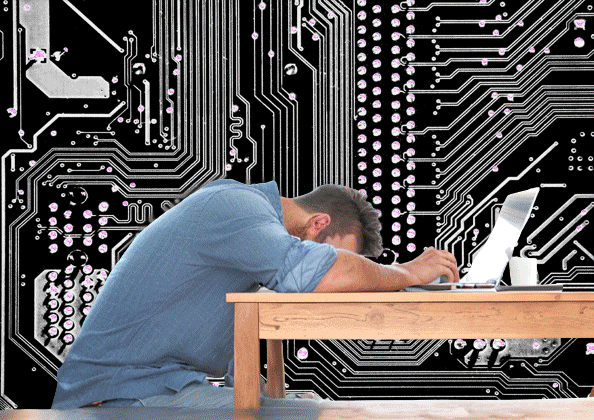
Today, even the youngest generation, clad in shorts and equipped with mobile phones, grasp the essence of freelancing. Freelancing represents an independent approach to work without formal contractual ties, forming a vital aspect of outsourcing. Comprehending one concept invariably leads to an understanding of the other.
Misconceptions prevail, suggesting that freelancing is solely reserved for the exceptionally talented or intelligent. However, the truth diverges: anyone excelling academically or otherwise, like those consistently ranked in the top ten of their class, can venture into freelancing. Others, unfortunately, might find it challenging to adopt this profession and may opt for alternative careers like being compelled into traditional professions such as garment workers or grocers. Embracing freelancing, outsourcing, or technology-related roles demands a savvy and modern approach.
Recently, many bankers displayed unfamiliarity with the term "freelancer," expressing surprise, "Is this considered a profession?"
Presently, anecdotes circulate about humanities graduates pursuing online computer programming and earning a substantial income, shattering the misconception that this field isn't lucrative. Moreover, stories abound of girls earning decent sums from the comfort of their homes through freelancing and outsourcing.
Yet, confusion shrouds this free profession illusion, creating a hazy, enigmatic atmosphere. The pursuit of proper training to excel in freelancing leaves newcomers with countless unanswered questions, leading to frustration, hopelessness, and a sense of failure. Consequently, some yearn to abandon this profession altogether.
At times, life's circumstances compel individuals to pursue professions against their preferences. In less developed nations, freelancing equates to earning dollars online without the obligation to master programming. Conversely, in technologically advanced countries, those capable of delivering quality work on time are deemed outsourcers, irrespective of inherent talent or formal qualifications. This practice spans across diverse individuals some artisans, some artists where the artist's essence surpasses that of a mere craftsman.
- Freelancing imparts essential principles for success:
- Embracing a mindset that thrives on starting anew, fostering humanity.
- Leveraging essential tools for effective communication.
- Cultivating a continuous hunger for learning.
- Amplifying social interaction.
- Resolving challenges with enduring patience and determination.
- Prioritizing data backup.
- Consistent practice and upkeep.
- Crafting a solid business plan rather than indefinitely freelancing.
- Understanding the value of financial reserves in preventing major missteps.
- Striving for a 99% proficiency in computer and mobile technology.
- Maintaining a clear understanding of financial transactions.
- Employing cutting-edge technology for project protection.
- Embracing self-teaching without reliance on external sources.
- Proficient time management.
- Committing to finish-initiated tasks.
- Honesty and accountability.
- Learning from failure and avoiding repetition of errors.
- Shunning imitation or duplication.
- Sustaining a dedicated work ethic for retaining humanity.
- Harnessing the potency of imagination over sheer willpower.
- Finding joy and value in even the smallest tasks.
- Enhancing work productivity for accelerated growth.
- Envisioning potential outcomes before commencing tasks.
- Acknowledging and addressing identified work limitations promptly.
- Strategically setting short-term, long-term, and lifelong goals.
- Balancing the pursuit of learning and earning.
- Advising against switching topics until complete mastery is achieved.
Some Reasons for Freelancing Career Failure
- Succumb to frustration and abandon efforts.
- Insufficient or lacking technical communication equipment.
- Limited linguistic aptitude or competence.
- Inadequate knowledge of financial transactions, including currencies, cryptocurrencies, banking systems, mobile and e-commerce, and SSL gateways.
- Deficiency in effective planning or the inability to plan adequately.
- Engaging with singular interests, ultimately failing to achieve mastery in any subject.
- Unawareness of the International Global Timetable.
- Inability to produce high-quality work output.
- Enduring sleepless nights or physical and mental health deterioration due to overwork.
- Getting lost in the vastness of the internet and losing direction.
- Engaging in purposeless tasks without prioritizing essential ones.
- Failing to act appropriately at the opportune moment.
- Lack of honesty and accountability regarding responsibilities.
- Fearfulness or reluctance to engage in work.
- Embracing failure without attempting multiple times, assuming personal incapability.
- Struggling to address ethical and technical issues for extended periods.
- Inability to identify high-demand subjects for work or learning.
- Absence of a guiding framework or mentorship.
- Lacking teamwork skills, preferring solitary work over collaborative efforts.
- Dismissing the misconception that full-time learning precedes freelancing.
- Assuming limited prospects in computer programming due to a non-science background.
- Hesitation or fear in maintaining communication with buyers or clients.
What Lifestyle & Qualities do Freelancers Need?
Freelancers epitomize independence, driven by personal and job autonomy, seizing opportunities to showcase their expertise, skills, and creative output. Their choice of a freelance career often merges with technology, distinct from regular employment or business due to fewer obligatory constraints.
Typically, freelancers engage in technical tasks, predominantly centered around computer and mobile-related domains:
- Coding
- Programming
- Designing
- Data Collection (Data Entry)
- Web Page or Website Design
- Article Writing (Content Creation)
- Graphic Design
- Printing Graphics
- SEO (Search Engine Optimization)
Characteristically, being a freelancer requires more than just skill it necessitates integrity and humility. While hackers might possess coding skills, they don't embody the essence of freelancing. Hacking, inherently destructive, contrasts with programming, which aims to benefit people. The core principle for freelancers remains to prioritize goodness.
Amidst long hours spent immersed in computers, mobile devices, and the internet, freelancers often overlook their health, risking illness due to irregular eating habits and nocturnal schedules. Balancing a consistent routine, including regular meals and hydration, is key to sustaining a healthy freelancing lifestyle.
The realm of freelancing demands wholehearted dedication. While many aspire to become freelancers, success hinges on the ability to initiate and complete tasks both in work and in learning. Achieving even the smallest task with utmost proficiency secures one's standing in the freelancing sphere, paving the way for uninterrupted earnings.


Utilizing cryptographic methods, cryptocurrency stands as a form of digital or virtual currency ensuring security in its transactions. Unlike traditional currencies issued and regulated by governments (such as the US dollar or the euro), crypto currencies operate on decentralized networks based on block chain technology. Outlined are several fundamental attributes and principles associated with cryptocurrencies:
Decentralization: Crypto currencies are typically not controlled by a central authority, such as a government or a central bank. Instead, they rely on a distributed ledger called a block chain, which is maintained by a network of nodes (computers) around the world. This decentralization can provide transparency and reduce the risk of single points of failure.
Block chain Technology: A block chain is a public ledger that records all transactions made with a particular crypto currency.It forms a sequence of blocks, with each block comprising a roster of transactions. Once a block is added to the chain, it cannot be altered, ensuring the security and immutability of the transaction history.
Cryptography: Cryptocurrencies employ cryptographic methodologies to safeguard transactions and regulate the generation of new units. Public and private keys are used to authenticate and secure transactions, and complex mathematical algorithms are employed to ensure the integrity of the block chain.
Digital Ownership: Crypto currencies provide a way for individuals to have full control over their digital assets. When you own crypto currency, you have a private key that allows you to access and transfer your funds. This eliminates the need for intermediaries, like banks, to facilitate transactions.
Anonymity and Pseudonymity: While crypto currency transactions are recorded on the block chain, they are often pseudonymous, meaning that users are identified by their wallet addresses rather than personal information. Some crypto currencies offer more anonymity features than others, such as Monero and Zcash.
Volatility: Crypto currency prices can be highly volatile, with the potential for significant price fluctuations in a short period. This volatility can present both opportunities and risks for investors and users.
Use Cases: Crypto currencies can be used for various purposes, including as a medium of exchange for goods and services, a store of value, and a means of transferring funds internationally. Some Crypto currencies are also designed for specific use cases beyond digital money, such as enabling smart contracts or providing privacy features.
Popular Crypto currencies: Bitcoin (BTC) is the first and most well-known crypto currency, often referred to as "digital gold." Other notable Crypto currencies include Ethereum (ETH), Ripple (XRP), Lit coin (LTC), and many more. Each has its own unique features and use cases.
Regulatory Environment: The regulatory status of Crypto currencies varies by country. Some governments have embraced Crypto currencies, while others have imposed restrictions or outright bans. Regulatory developments are an important factor in the crypto currency market.
It's important to note that the crypto currency space is continually evolving, and new Crypto currencies are regularly being created. While Crypto currencies offer exciting opportunities, they also come with risks, including regulatory, security, and market-related risks. Therefore, it's essential to conduct thorough research and exercise caution when dealing with Crypto currencies.
History and Origins of Crypto currencies:The history and origins of Crypto currencies can be traced back to the early days of computer science and cryptography. Here's a brief overview of how Crypto currencies evolved over time:
Early Cryptography and Digital Cash Concepts (1970s and 1980s):The idea of digital cash and cryptographic currency was explored by computer scientists and cryptographers. For example, David Chaum introduced concepts of cryptographic electronic money in the 1980s.
DigiCash (1989):In 1989, David Chaum founded DigiCash, one of the earliest attempts at creating a digital currency. DigiCash used cryptographic techniques to provide privacy in electronic transactions.
Cypherpunks (1990s):During the 1990s, the Cypherpunk movement emerged. Cypherpunks were a group of computer enthusiasts who advocated for strong cryptography and online privacy. They discussed various ideas for digital currencies and laid the ideological groundwork for future Crypto currencies.
Bitcoin Whitepaper (2008):The turning point in the history of Crypto currencies came in 2008 when an individual or group using the pseudonym Satoshi Nakamoto published the Bitcoin whitepaper titled "Bitcoin: The document delineated a decentralized electronic cash system operating on a peer-to-peer basis, founded on blockchain technology and the consensus mechanism of proof-of-work.
Launch of Bitcoin (2009):In January 2009, the Bitcoin network was officially launched with the release of the Bitcoin software. The first block, known as the "genesis block," was mined by Satoshi Nakamoto. Bitcoin provided a revolutionary way to conduct trustless transactions and store value without relying on traditional financial institutions.
Rise of Altcoins (2011 and Beyond):After Bit coin’s success, various alternative Crypto currencies, often referred to as "altcoins," were created. These included Litecoin (2011), Ripple (2012), and many others, each with its unique features and use cases.
Ethereum and Smart Contracts (2015):Ethereum, created by Vitalik Buterin, introduced the concept of smart contracts, enabling programmable and self-executing agreements on the block chain. This innovation expanded the use cases of blockchain technology beyond digital money.
ICO Boom (2017):In 2017, Initial Coin Offerings (ICOs) gained popularity as a fundraising method for new crypto currency projects. While some ICOs were successful, others were associated with fraud and regulatory concerns.
Regulatory Developments and Mainstream Adoption (2010s):Governments and regulatory authorities began taking an interest in Crypto currencies, leading to various legal and regulatory developments. Crypto currency markets experienced both surges and corrections in value, attracting significant attention from mainstream media and investors.
DeFi and NFTs (2020s):The 2020s have seen the rise of decentralized finance (DeFi) and non-fungible tokens (NFTs) as prominent use cases for block chain technology. DeFi platforms aim to provide decentralized financial services, while NFTs represent unique digital assets often associated with art, collectibles, and gaming.
The history of Crypto currencies is marked by innovation, experimentation, and evolving use cases. Bitcoin, as the first and most well-known crypto currency, continues to serve as a store of value and a point of reference for the broader block chain and crypto currency ecosystem. The industry remains dynamic and subject to regulatory and technological developments as it continues to grow and evolve.
How important is crypto currency in today's world?
The importance of crypto currency in today's world has grown significantly over the past decade, and it continues to evolve and influence various aspects of finance, technology, and society. Here are several key factors that highlight the significance of crypto currency:
Financial Innovation: Crypto currencies have introduced innovative concepts like decentralized finance (DeFi) and non-fungible tokens (NFTs), which are changing how financial services, investments, and digital assets are managed. DeFi platforms offer lending, borrowing, and trading without traditional intermediaries, potentially increasing financial inclusion.
Store of Value: Bitcoin, often referred to as "digital gold," has gained recognition as a store of value and a hedge against inflation. Some investors and institutions view Crypto currencies, particularly Bitcoin, as a way to diversify their portfolios and preserve wealth.
Cross-Border Payments: Crypto currencies have the potential to simplify and expedite cross-border transactions. They can reduce the fees and processing times associated with traditional banking systems and enable individuals and businesses to send funds internationally with greater ease.
Financial Inclusion: Crypto currencies have the potential to provide financial services to people who are unbanked or underbanked, particularly in regions with limited access to traditional banking infrastructure. Mobile devices and internet access are often sufficient to participate in the crypto currency ecosystem.
Technological Advancements: The block chain technology underlying Crypto currencies has broader applications beyond digital money. It has the potential to improve supply chain management, voting systems, healthcare records, and more by enhancing transparency and security.
Security and Transparency: The use of cryptography and decentralized ledgers in Crypto currencies enhances security and transparency in financial transactions. This can reduce fraud, corruption, and data breaches.
Speculation and Investment: Crypto currency markets have attracted significant investment and speculative trading. While this has led to price volatility, it has also brought more attention to the sector and contributed to its growth.
Blockchain Adoption: Many industries and governments are exploring the adoption of blockchain technology for various purposes, such as supply chain management, identity verification, and smart contracts.
Regulatory Scrutiny: Regulators are increasingly focusing on Crypto currencies to ensure compliance with laws, prevent illegal activities, and protect consumers. The regulatory environment is evolving and will have a significant impact on the crypto currency landscape.
Alternative Financial Ecosystem: Crypto currencies provide an alternative financial ecosystem that operates independently of traditional banking systems and fiat currencies. This diversification offers resilience against potential economic and financial crises.
Digitalization of Assets: Crypto currencies have opened the door to the digitization of real-world assets, such as real estate and art, through tokenization. This can make it easier to trade and access assets that were historically illiquid.
While the importance of crypto currency is undeniable, it is important to note that the sector is still evolving and carries risks. Regulatory uncertainties, market volatility, security concerns, and technological challenges persist. Individuals and institutions considering involvement in the crypto currency space should exercise caution, conduct thorough research, and consider the potential risks and rewards. The role and impact of Crypto currencies in the world will continue to evolve as the technology matures and adapts to changing circumstances.
What are the risks of crypto currency?
Crypto currencies offer many advantages, but they also come with various risks and challenges. It's important to be aware of these risks before getting involved in the crypto currency market. Here are some of the key risks associated with Crypto currencies:
Price Volatility: Crypto currency prices can be extremely volatile, with the potential for significant and rapid price fluctuations. This can lead to substantial gains but also substantial losses for investors and traders.
Lack of Regulation: The regulatory environment for Crypto currencies is still evolving. The absence of clear regulations in some jurisdictions can create uncertainty and expose users to risks related to fraud, scams, and market manipulation.
Security Concerns:
- Hacks and Theft: Crypto currency exchanges and wallets can be vulnerable to security breaches, leading to the theft of digital assets. Users must take security precautions to protect their holdings.
- Phishing Scams: Scammers often use phishing techniques to trick individuals into revealing their private keys or login information. It's essential to be cautious and verify the authenticity of websites and communications.
- Irreversible Transactions: Once a crypto currency transaction is confirmed on the block chain, it is typically irreversible. In case of an error or if you become a target of fraud, there might be a possibility of being unable to retrieve your funds.
- Lack of Consumer Protection: Unlike traditional financial systems, Crypto currencies often offer limited or no consumer protection. If you experience a problem with a crypto currency transaction, there may be no recourse for resolution.
- Market Manipulation: Crypto currency markets are relatively young and can be susceptible to market manipulation, pump-and-dump schemes, and price manipulation by large players or "whales."
- Regulatory Risks: Regulations regarding Crypto currencies can vary widely by country and can change over time. Legal and tax implications can be complex, and non-compliance may result in legal consequences.
- Technological Risks:
- Software Bugs: Crypto currency protocols and wallet software are not immune to bugs or vulnerabilities. These can be exploited by malicious actors.
- Network Congestion: High demand for certain Crypto currencies can lead to network congestion, slow transaction times, and increased fees.
- Loss of Private Keys: Crypto currency users are responsible for safeguarding their private keys. If you lose your private key or it is compromised, you can lose access to your digital assets permanently.
- Environmental Concerns: Some Crypto currencies, particularly Bitcoin, have faced criticism for their energy consumption, as the mining process can be energy-intensive and have environmental impacts.
- Speculative Bubble: The crypto currency market has experienced periods of speculative excess, which can lead to inflated asset prices followed by sharp corrections.
- Fraud and Scams: The crypto currency space is not immune to fraudulent schemes and scams, including Ponzi schemes, fake ICOs, and pump-and-dump schemes.
- Market Liquidity: Not all Crypto currencies are as liquid as major ones like Bitcoin or Ethereum. Less popular coins may have limited trading volume, making it difficult to buy or sell significant amounts without affecting the price.
It's important to conduct thorough research, exercise caution, and practice good security measures when dealing with Crypto currencies. Assess your comfort level with risk, and invest only the amount that you are willing to potentially forfeit. Additionally, seek professional advice and stay informed about regulatory developments in your jurisdiction to ensure compliance with the law. Crypto currencies have the potential for significant benefits, but they also require responsible and informed participation.
What are the current crypto currency marketplaces?
The crypto currency market is dynamic, with new exchanges and platforms emerging regularly. As of my last knowledge update in September 2021, here are some of the well-known and established crypto currency exchanges:
Binance: Binance is one of the world's largest crypto currency exchanges, offering a wide range of trading pairs and services. It is known for its liquidity and various features, including futures trading and staking.
Coinbase: Coinbase stands out as an accessible platform well-liked by individuals new to the cryptocurrency space. It's known for its ease of use and is often used by individuals looking to buy and hold Crypto currencies.
Kraken: Kraken is a reputable exchange that offers a variety of Crypto currencies for trading. It's known for its security features and compliance with regulations.
Bitfinex: Bitfinex is a crypto currency exchange that provides advanced trading features and a wide selection of trading pairs.
Bittrex: Bittrex is known for its security and offers a selection of Crypto currencies for trading.
Huobi: Huobi is a global exchange known for its liquidity and a wide range of trading pairs. It also offers various financial services.
Gemini: Gemini is a regulated exchange based in the United States, known for its security and compliance with U.S. regulations.
OKEx: OKEx offers a range of services, including spot and derivatives trading, as well as staking and lending.
KuCoin: KuCoin is a user-friendly exchange with a broad selection of Crypto currencies and trading pairs.
Bitstamp: Bitstamp is one of the longest-standing exchanges in the cryptocurrency space and is known for its reliability and regulatory compliance.
Gate.io: Gate.io is a global exchange that provides a wide variety of Crypto currencies and trading options.
Upbit: Upbit is a major South Korean exchange known for its strong security and compliance with regulations.
BitMart: BitMart is a global exchange offering a range of trading options and Crypto currencies.
FTX: FTX is known for its innovative products and derivatives trading. It also offers features like tokenized stocks and prediction markets.
Please note that the crypto currency exchange landscape is constantly evolving, and new exchanges may have emerged since my last update. Additionally, the availability of specific exchanges and their services may vary by region due to regulatory considerations.
Before using any crypto currency exchange, it's important to conduct your own research, consider factors like security, fees, supported Crypto currencies, and the services they offer, and be aware of the regulatory environment in your jurisdiction. Always use security best practices, such as two-factor authentication, to protect your accounts and assets.
What are the future possibilities of crypto currency and how?
The future possibilities of crypto currency are vast and continue to evolve as the technology matures and gains broader acceptance. Here are some potential developments and use cases for crypto currency in the future:
Mainstream Adoption: Crypto currencies could become a more integral part of the global financial system, with greater acceptance by governments, financial institutions, and businesses. Increased regulation and institutional involvement may contribute to this.
Digital Currencies: Central banks are exploring the creation of central bank digital currencies (CBDCs) in various countries. CBDCs could offer a government-backed alternative to Crypto currencies while utilizing block chain technology for efficiency and security.
Financial Inclusion: Crypto currencies have the potential to provide financial services to the unbanked and underbanked populations, particularly in regions with limited access to traditional banking infrastructure.
Remittances and Cross-Border Transactions: Crypto currencies can simplify and reduce the cost of cross-border transactions, making it easier for individuals to send and receive money internationally.
Smart Contracts: The use of block chain technology for smart contracts can revolutionize various industries, including legal, supply chain, and real estate. Coinbase stands out as an accessible platform well-liked by individuals new to the cryptocurrency space.
Decentralized Finance (DeFi): DeFi platforms are creating decentralized alternatives to traditional financial services like lending, borrowing, and trading. The DeFi ecosystem could continue to grow and offer more sophisticated financial products.
Non-Fungible Tokens (NFTs): NFTs have gained attention for their potential in art, collectibles, gaming, and more. They could continue to reshape how digital and physical assets are represented and traded.
Tokenization of Assets: The concept of tokenizing real-world assets, such as real estate and art, could expand, making it easier to trade and invest in traditionally illiquid assets.
Privacy Coins: Privacy-focused Crypto currencies, such as Monero and Zcash, may continue to evolve, addressing concerns about financial privacy and confidentiality.
Scalability Solutions: The development and implementation of scalability solutions like Layer 2 solutions (e.g., Lightning Network for Bitcoin) could improve transaction throughput and reduce fees.
Environmental Sustainability: Efforts to address the energy consumption and environmental impact of crypto currency mining are ongoing. More eco-friendly consensus mechanisms could emerge.
Education and Awareness: As understanding of Crypto currencies and blockchain technology grows, individuals and businesses may become more informed and comfortable with using these technologies.
Interoperability: Projects are working on improving interoperability between different block chains, allowing assets and data to move more freely between different networks.
Cybersecurity and Regulatory Compliance: The development of improved security protocols and regulatory compliance tools can enhance the safety and compliance of crypto currency transactions.
Decentralized Autonomous Organizations (DAOs): DAOs could play a more prominent role in decision-making and governance, offering a more democratic approach to various aspects of organizations and communities.
It's important to note that the future of crypto currency is influenced by technological advancements, regulatory developments, and the choices made by the crypto community. While the potential is exciting, it's also essential to remain aware of the associated risks and challenges, such as security threats, regulatory changes, and market volatility. The evolution of Crypto currencies and block chain technology will likely be influenced by both innovation and the need for responsible development and use.
What determines the validity of crypto currency compared to current money and what are the relationships and differences?
The validity of crypto currency compared to traditional fiat currency is determined by several factors, including acceptance, functionality, and trust. Here are some of the key relationships and differences between Crypto currencies and traditional money:
- Acceptance and Recognition:
- Crypto currency: The validity of a crypto currency depends on its acceptance within the community of users and businesses. While many Crypto currencies are widely accepted, their recognition can vary widely by region and use case.
- Traditional Money: Fiat currencies, like the US dollar or the euro, are universally recognized as valid forms of money within the countries that issue them. They are legal tender and must be accepted for transactions within their respective jurisdictions.
- Government Backing:
- Crypto currency: Crypto currencies are typically not backed by any government or central authority. Their value is derived from market demand and utility.
- Traditional Money: Fiat currencies are issued and regulated by governments and central banks. They are backed by the authority and stability of the issuing government.
- Digital Nature:
- Crypto currency: Crypto currencies exist in digital form and are transacted electronically. They are not physical, tangible objects.
- Traditional Money: Fiat currencies exist in both physical (banknotes and coins) and digital form. However, digital transactions are increasingly prevalent in the modern financial system.
- Decentralization:
- Crypto currency: Many Crypto currencies operate on decentralized block chain networks, meaning there is no central authority governing their issuance or validation of transactions.
- Traditional Money: Traditional currencies are centralized and regulated by governments and central banks. Monetary policies, such as interest rates and money supply, are controlled by these institutions.
- Security and Transparency:
- Crypto currency: Crypto currencies use cryptographic techniques for security and rely on transparent, immutable block chain ledgers to record transactions.
- Traditional Money: Traditional financial systems also incorporate security measures, but the transparency and immutability of transactions are not as strong as in the crypto currency space.
- Cross-Border Transactions:
- Crypto currency: Crypto currencies can facilitate cross-border transactions more efficiently and with potentially lower fees than traditional banking systems.
- Traditional Money: Traditional cross-border transactions often involve intermediaries like banks and can be subject to high fees and delays.
- Inflation and Deflation:
- Crypto currency: Some Crypto currencies have fixed or capped supplies, which can make them deflationary in nature. Others have mechanisms to manage inflation.
- Traditional Money: Central banks can influence the supply of fiat currencies, leading to inflation or deflation based on economic conditions and policies.
- Privacy and Anonymity:
- Crypto currency: Some Crypto currencies offer higher levels of privacy and anonymity, while others are more transparent. Individuals possess increased authority concerning the privacy of their financial matters.
- Traditional Money: Traditional banking systems have varying levels of privacy, but transactions are subject to regulatory oversight and scrutiny.
- Legal and Regulatory Framework:
- Crypto currency: The regulatory environment for Crypto currencies varies by country and is still evolving. Different jurisdictions have different approaches, ranging from embracing Crypto currencies to imposing restrictions or outright bans.
- Traditional Money: Traditional currencies are subject to well-established legal frameworks and regulations within their respective countries.
In summary, the validity of crypto currency is determined by factors like acceptance, trust, and functionality. While Crypto currencies offer benefits such as decentralization, borderless transactions, and increased financial privacy, they also come with risks and uncertainties. Traditional money, on the other hand, benefits from government backing and legal tender status, providing a high level of acceptance and stability within a specific jurisdiction. The relationship between crypto currency and traditional money is one of competition and coexistence, with each serving different needs and purposes in the global financial system.
How freelancers thrive with crypto currency
Freelancers can thrive with crypto currency in various ways, taking advantage of the unique features and opportunities that Crypto currencies offer. Here are some ways in which freelancers can benefit from using crypto currency:
Global Payments: Crypto currency allows freelancers to receive payments from clients all over the world without the need for traditional banking intermediaries. This can reduce international transaction fees, currency conversion costs, and processing times.
Financial Inclusion: Crypto currencies can help freelancers in regions with limited access to traditional banking services. All that's needed is internet access and a crypto currency wallet to participate in the global freelance market.
Reduced Fees: Crypto currency transactions often have lower fees compared to traditional financial systems, which can be especially beneficial for freelancers who rely on receiving payments for their services.
Privacy and Security: Crypto currencies provide a level of privacy and security that can be attractive to freelancers concerned about protecting their financial data. Transactions are pseudonymous, and users have control over their private keys.
No Chargebacks: Unlike traditional payment methods, crypto currency transactions are irreversible once confirmed. This reduces the risk of chargebacks, which can be a problem for freelancers accepting payments through credit cards or digital payment platforms.
Fast Settlement: Crypto currency transactions are typically faster than traditional bank transfers. This means freelancers can access their funds more quickly after completing a project or service.
Micropayments: Some Crypto currencies, like Bitcoin's Lightning Network, enable micropayments, making it feasible to charge small amounts for services or content.
Smart Contracts: Platforms like Ethereum allow for the creation of smart contracts, which automate payment processing based on predefined conditions. Freelancers can use these contracts to ensure they receive payment once a project is completed to the client's satisfaction.
Diversification: Freelancers can choose to hold some of their income in crypto currency as a way to diversify their investments. Crypto currencies have the potential to appreciate over time, and holding assets in different forms can spread risk.
Access to Global Clients: Crypto currency can attract clients who prefer to pay in crypto. Offering this payment option may open the door to a broader client base.
Freelancing Platforms: Some freelance platforms and marketplaces, such as Upwork, Freelancer, and Bitwage, allow freelancers to receive payments in crypto currency.
However, it's important to note that using crypto currency also comes with risks and considerations:
Price Volatility: Crypto currency prices can be highly volatile, which means the value of earnings in crypto currency may change significantly.
Regulatory Compliance: Freelancers should be aware of tax and regulatory requirements related to crypto currency earnings in their jurisdiction. The regulations can differ notably depending on the specific location or region.
Security: Proper security practices are essential to protect crypto currency assets. Secure storage and management of private keys are critical to prevent theft or loss.
Client Trust: Some clients may be hesitant to pay in crypto currency due to the perceived complexity or risk. Freelancers should be prepared to address client concerns and provide necessary information.
Payment Options: Not all clients are familiar with or willing to pay in crypto currency. Freelancers may need to offer multiple payment options to accommodate client preferences.
In conclusion, freelancers can thrive with crypto currency by taking advantage of its unique features and benefits. It provides a global, efficient, and secure way to receive payments for freelance work. However, freelancers should also be mindful of the associated risks and be prepared to adapt to client preferences and regulatory requirements.
What are the proper guidelines on how a common person can benefit from investing in crypto currency?
Investing in crypto currency can offer potential opportunities for profit, but it also comes with risks. To benefit from crypto currency investments as a common person, it's essential to follow proper guidelines to minimize risks and make informed decisions. Here are some steps to consider:
- Educate Yourself:
- Start by gaining a solid understanding of what Crypto currencies are, how block chain technology works, and the fundamentals of various Crypto currencies. Books, online courses, forums, and reputable websites can be valuable sources of information.
- Diversify Your Portfolio:
- Avoid putting all your money into a single crypto currency. Diversification can help spread risk. Consider investing in a mix of established Crypto currencies like Bitcoin and Ethereum, along with promising altcoins.
- Allocate funds based on what you're comfortable potentially forfeiting.
- Crypto currency markets can be highly volatile, and prices can fluctuate significantly. Only invest money you can afford to lose without affecting your essential financial obligations.
- Stay Informed:
- Keep up with the latest news and developments in the crypto currency space. Market sentiment, technological advancements, and regulatory changes can all influence crypto currency prices.
- Choose a Reputable Exchange:
- Select a well-established and reputable crypto currency exchange for buying, selling, and trading. Check for security features, user reviews, and customer support.
- Secure Your Investments:
- Use best practices for crypto currency security. Store your assets in a secure hardware wallet if possible, and enable two-factor authentication on your exchange and wallet accounts. Be cautious of phishing attempts and scams.
- Have an Investment Strategy:
- Define your investment goals and strategy. Consider factors like your time horizon, risk tolerance, and whether you plan to hold long-term or engage in active trading.
- Avoid Emotional Trading:
- Emotional decisions in trading, such as panic selling during a market dip or FOMO (Fear of Missing Out) buying at the peak, can lead to losses. Stick to your strategy and avoid impulsive actions.
- Start Small and Learn:
- If you're new to crypto currency investing, consider starting with a small amount to get hands-on experience. Learn from your initial investments and gradually increase your involvement.
- Research Before Buying:
- Conduct thorough research before purchasing any crypto currency. Understand its use case, technology, team, and community support. Avoid making decisions based solely on hype or price predictions.
- Keep an Eye on Fees:
- Be mindful of transaction and trading fees, as they can eat into your returns. Compare fee structures on different exchanges to find the most cost-effective options.
- Understand Tax Implications:
- Crypto currency transactions may have tax implications in your jurisdiction. Consult a tax professional to ensure compliance with tax regulations and reporting requirements.
- HODL or Trade?:
- Decide whether you want to hold Crypto currencies long-term (HODL) as an investment or actively trade for short-term gains. Each approach has its own strategies and risks.
- Manage Risk:
- Consider using stop-loss orders to limit potential losses, and don't invest everything in a single asset. You can also set a percentage of your portfolio for riskier investments and another for more conservative assets.
- Be Prepared for Volatility:
- Crypto currency markets can be highly volatile, and price fluctuations can be substantial. Be mentally prepared for this volatility and avoid making impulsive decisions during turbulent times.
- Seek Professional Advice:
- If you're unsure about your investment choices or the tax implications of your investments, consider consulting a financial advisor or tax professional with expertise in Crypto currencies.
Remember that crypto currency investments carry risks, and there are no guarantees of profit. It's crucial to approach crypto currency investing with a long-term perspective and a focus on risk management. Additionally, the regulatory environment for Crypto currencies varies by country, so make sure to stay informed about the rules and requirements in your jurisdiction.
![]()
What is blockchain and how does the program work?
Written by Administrator 
Blockchain is a distributed ledger technology that underlies most cryptocurrencies, including Bitcoin, and has a wide range of applications beyond digital currencies. It is a decentralized and transparent system for recording and verifying transactions. Here's how it works:
Decentralization: A blockchain is not controlled by a single entity but is maintained by a distributed network of computers, often referred to as "nodes." These nodes work together to validate and record transactions, making it difficult for a single party to control or manipulate the network.
Blocks: Transactions are grouped together into blocks. Each block contains a set of transactions and a reference to the previous block, forming a chain. This chain of blocks is where the term "blockchain" comes from.
Consensus Mechanism: To add a new block to the blockchain, a consensus mechanism is used. The most common mechanism is "proof of work" (PoW), where nodes (miners) compete to solve complex mathematical puzzles. The first one to solve the puzzle gets the right to add the new block. This process ensures that transactions are verified and added to the blockchain in a secure and decentralized manner.
Transparency: Once a block is added to the blockchain, its contents are transparent and can be viewed by anyone with access to the blockchain. This transparency is one of the key features of blockchain technology, and it helps prevent fraud and corruption.
Security: Cryptographic techniques are used to secure transactions and prevent tampering with the data. Each block contains a cryptographic hash of the previous block, creating a chain that makes altering previous blocks extremely difficult.
Immutability: Once a transaction is recorded in a block and added to the blockchain, it is nearly impossible to alter or delete. This immutability makes the blockchain a reliable and tamper-proof record of transactions.
Decentralized Ledgers: Each node on the network has a copy of the entire blockchain. This redundancy ensures that even if some nodes go offline or are compromised, the network can continue to function.
Smart Contracts: Some blockchains, like Ethereum, support smart contracts, which are self-executing contracts with the terms of the agreement written directly into code. Smart contracts automatically execute when predefined conditions are met, without the need for intermediaries.
Public and Private Blockchains: There are public blockchains (e.g., Bitcoin, Ethereum) that are open to anyone and are maintained by a decentralized network of nodes. Private blockchains, on the other hand, are restricted and controlled by a single organization or consortium, making them suitable for specific business use cases.
Scalability Solutions: As blockchain technology has evolved, various scalability solutions have been developed to address issues like slow transaction processing and high fees. These include second-layer solutions like the Lightning Network for Bitcoin and sharding for Ethereum.
Overall, blockchain technology provides a secure and transparent way to record and verify transactions. Its applications extend beyond cryptocurrency to supply chain management, voting systems, healthcare records, and more. It has the potential to disrupt traditional systems that rely on centralized intermediaries by offering a decentralized, efficient, and trustworthy alternative.
Blockchain history and origin when and how?
The history and origin of blockchain can be traced back to the early 2000s, with the development of various cryptographic and distributed ledger technologies. The concept of a blockchain, as we know it today, emerged in the context of creating a decentralized digital currency, and Bitcoin, introduced by an anonymous entity using the pseudonym Satoshi Nakamoto, marked a significant milestone. Here's a brief overview:
Pre-Bitcoin Era:
- In the late 1990s and early 2000s, various cryptographic and digital cash concepts were explored. Researchers and cypherpunks, a group of computer enthusiasts advocating for strong cryptography and online privacy, discussed ideas that laid the groundwork for blockchain technology.
2008: Bitcoin Whitepaper:
- The key moment in blockchain history occurred in 2008 when an individual or group using the pseudonym Satoshi Nakamoto published the whitepaper titled "Bitcoin: A Peer-to-Peer Electronic Cash System." This whitepaper described a novel decentralized, peer-to-peer digital currency system based on a blockchain.
2009: Launch of Bitcoin:
- In January 2009, Satoshi Nakamoto officially launched the Bitcoin network with the release of the first Bitcoin software. The first block, known as the "genesis block," was mined by Nakamoto, and the Bitcoin blockchain began to record transactions.
Development of Blockchain Technology:
- The blockchain technology used in Bitcoin has been further developed and adapted for various use cases. Ethereum, introduced by Vitalik Buterin in 2015, extended the blockchain concept to enable smart contracts, allowing for programmable, self-executing agreements.
Rise of Cryptocurrencies and Altcoins:
- Following Bitcoin, many alternative cryptocurrencies (altcoins) were created, each with its unique features and use cases. These included Litecoin, Ripple, and many others.
Blockchain Beyond Cryptocurrencies:
- The underlying blockchain technology has found applications beyond digital money. It is used in various industries, including supply chain management, healthcare, voting systems, and more, to improve transparency, security, and efficiency.
Public vs. Private Blockchains:
- Public blockchains, like Bitcoin and Ethereum, are open to anyone and are maintained by a decentralized network of nodes. Private blockchains, which are restricted and controlled by a single organization or consortium, have also gained popularity for business use cases.
Blockchain's Global Impact:
- Blockchain technology has influenced how we think about data security, transparency, and decentralization. It has the potential to disrupt traditional systems that rely on centralized intermediaries by offering a decentralized, efficient, and trustworthy alternative.
It's important to note that the identity of Satoshi Nakamoto remains unknown, and their disappearance from the Bitcoin scene after 2010 has added an element of mystery to the history of blockchain. Nevertheless, the impact of blockchain technology is undeniable, and its applications continue to evolve and expand across various industries and use cases.
What are the advantages and disadvantages of blockchain?
Blockchain technology offers several advantages and has the potential to bring positive changes to various industries. However, it also has its disadvantages and challenges. Here's a breakdown of both:
Advantages of Blockchain:
Decentralization:
- Advantage: Blockchain operates on a decentralized network, reducing the need for intermediaries and central authorities. This can increase trust and transparency.
- Use Cases: Reduces reliance on centralized institutions for financial transactions, voting systems, and supply chain management.
Security:
- Advantage: Cryptographic techniques and consensus mechanisms make blockchain highly secure. Once a transaction is added to the blockchain, it's nearly impossible to alter.
- Use Cases: Valuable for secure financial transactions, authentication, and data integrity.
Transparency:
- Advantage: Blockchain offers a transparent ledger of all transactions. This helps prevent fraud, corruption, and disputes.
- Use Cases: Useful in supply chain management, voting systems, and public financial records.
Immutability:
- Advantage: Once a transaction is recorded on the blockchain, it's extremely difficult to change. This makes it a reliable record of data.
- Use Cases: Valuable for audit trails, legal documents, and sensitive data storage.
Efficiency:
- Advantage: Blockchain can streamline processes, reduce paperwork, and minimize errors through automation and smart contracts.
- Use Cases: Improves efficiency in areas like financial services and supply chain management.
Reduced Costs:
- Advantage: Eliminates the need for intermediaries, potentially reducing costs associated with transactions and services.
- Use Cases: Cost-effective international payments, cross-border remittances, and trade settlements.
Inclusion:
- Advantage: Offers financial services to unbanked and underbanked populations, improving financial inclusion.
- Use Cases: Financial services for individuals without access to traditional banking.
Innovation:
- Advantage: Blockchain has fueled innovation and created opportunities for new business models and use cases.
- Use Cases: Enabling decentralized applications (DApps), NFTs, and decentralized finance (DeFi).
Disadvantages and Challenges of Blockchain:
Scalability:
- Challenge: As blockchain networks grow, they can face scalability issues, leading to slow transaction processing and high fees.
- Use Cases: Slower transaction times and high fees can limit the adoption of blockchain for everyday transactions.
Regulatory Uncertainty:
- Challenge: The regulatory environment for cryptocurrencies and blockchain technology varies by country and is still evolving.
- Use Cases: Legal and compliance challenges can impact the adoption and operation of blockchain projects.
Energy Consumption:
- Challenge: Proof-of-work (PoW) blockchains, like Bitcoin, can consume significant amounts of energy.
- Use Cases: Energy consumption can raise environmental concerns and contribute to higher operational costs.
Privacy Concerns:
- Challenge: While blockchain offers transparency, some users may have concerns about privacy, as transactions are recorded on a public ledger.
- Use Cases: Privacy-focused coins and additional privacy layers are developed to address this issue.
Irreversible Transactions:
- Challenge: Once a transaction is confirmed on the blockchain, it's typically irreversible, meaning there's no recourse for errors or fraud.
- Use Cases: Reversing transactions can be challenging, posing risks for users.
User Experience:
- Challenge: Cryptocurrency wallets and blockchain applications can be complex for non-technical users.
- Use Cases: Improving user interfaces and education is necessary to increase adoption.
Market Volatility:
- Challenge: Cryptocurrency prices are highly volatile, posing investment risks for users.
- Use Cases: Price fluctuations can deter some from using cryptocurrencies for everyday transactions.
Interoperability:
- Challenge: Different blockchains may not seamlessly communicate with each other, affecting the efficiency of cross-chain operations.
- Use Cases: Interoperability standards are being developed to address this challenge.
In summary, while blockchain technology has numerous advantages, including decentralization, security, and transparency, it also faces challenges related to scalability, regulation, and energy consumption. Blockchain's adoption and impact continue to evolve as the technology matures and adapts to address these challenges.
Blockchain program can be learned with any language? And why and how should freelancer programmers learn blockchain?
Blockchain development can be learned with various programming languages, but some languages are more commonly used in blockchain development due to their compatibility and existing libraries. The choice of language often depends on the blockchain platform you are working with. Here are some programming languages commonly associated with blockchain development:
Solidity is a language designed for writing smart contracts on the Ethereum platform, which is the most popular platform for decentralized applications (DApps) and smart contracts.
JavaScript is often used in conjunction with Solidity to develop the front-end and back-end of blockchain applications. Node.js is commonly used for server-side scripting.
Golang is the language in which the Ethereum clients Geth and Pantheon are implemented. It's used for building core components of blockchain networks.
Rust is gaining popularity for blockchain development, especially for projects like Polkadot and Substrate. It's known for its memory safety and performance.
Java is used in some blockchain platforms and projects, such as Hyperledger Fabric and Corda. It is a versatile language for enterprise-level blockchain solutions.
Python is used in various blockchain applications, and it has libraries like Web3.py for Ethereum integration. It's known for its simplicity and ease of use.
C++ is used for blockchain implementations like Bitcoin and Litecoin. It offers performance benefits but can be complex.
Freelance programmers interested in blockchain should consider the following reasons to learn blockchain technology:
High Demand: Blockchain developers are in high demand as more industries explore blockchain applications. Learning blockchain can provide lucrative freelance opportunities.
Diversification: Adding blockchain development to your skill set diversifies your services, making you more attractive to a broader range of clients.
Innovation: Blockchain is at the forefront of technological innovation. Learning it allows you to work on groundbreaking projects.
Decentralized Applications: Learning blockchain development enables you to create decentralized applications (DApps) for various use cases.
To learn blockchain as a freelancer, you can follow these steps:
Understand the Basics: Begin by learning the fundamentals of blockchain technology, including how it works, its key components, and its use cases.
Choose a Platform: Select a blockchain platform to focus on. Ethereum is a popular choice, but there are many others. Your choice depends on your interests and client demand.
Learn a Relevant Programming Language: Depending on your chosen platform, learn the associated programming language. For Ethereum, that's Solidity. For others, it might be JavaScript, Golang, Rust, or another language.
Study Smart Contracts: Dive deep into smart contract development if you're interested in building decentralized applications. This involves understanding how smart contracts work, writing code, and testing them on a blockchain testnet.
Explore Blockchain Tools: Familiarize yourself with blockchain development tools, such as development environments, wallets, and testing frameworks.
Build Projects: Practice your skills by building small blockchain projects or contributing to open-source projects. Practical experience is crucial in blockchain development.
Stay Updated: Blockchain technology evolves rapidly. Stay informed about the latest developments and trends in the field.
Market Yourself: Highlight your blockchain skills on your freelance profiles and pitches. Showcase your blockchain projects in your portfolio to attract potential clients.
Network: Connect with other blockchain developers and industry professionals. Networking can lead to collaborations and job opportunities.
Consider Certifications: Obtaining blockchain-related certifications can validate your expertise and increase your credibility as a blockchain developer.
Learning blockchain technology can be a valuable addition to a freelance programmer's skill set. It's a field with significant growth potential and opportunities for those who are willing to invest time in learning and building expertise.
What are the advantages and disadvantages of blockchain?
Blockchain technology offers several advantages and has the potential to bring positive changes to various industries. However, it also has its disadvantages and challenges. Here's a breakdown of both:
Advantages of Blockchain:
Decentralization:
- Advantage: Blockchain operates on a decentralized network, reducing the need for intermediaries and central authorities. This can increase trust and transparency.
- Use Cases: Reduces reliance on centralized institutions for financial transactions, voting systems, and supply chain management.
Security:
- Advantage: Cryptographic techniques and consensus mechanisms make blockchain highly secure. Once a transaction is added to the blockchain, it's nearly impossible to alter.
- Use Cases: Valuable for secure financial transactions, authentication, and data integrity.
Transparency:
- Advantage: Blockchain offers a transparent ledger of all transactions. This helps prevent fraud, corruption, and disputes.
- Use Cases: Useful in supply chain management, voting systems, and public financial records.
Immutability:
- Advantage: Once a transaction is recorded on the blockchain, it's extremely difficult to change. This makes it a reliable record of data.
- Use Cases: Valuable for audit trails, legal documents, and sensitive data storage.
Efficiency:
- Advantage: Blockchain can streamline processes, reduce paperwork, and minimize errors through automation and smart contracts.
- Use Cases: Improves efficiency in areas like financial services and supply chain management.
Reduced Costs:
- Advantage: Eliminates the need for intermediaries, potentially reducing costs associated with transactions and services.
- Use Cases: Cost-effective international payments, cross-border remittances, and trade settlements.
Inclusion:
- Advantage: Offers financial services to unbanked and underbanked populations, improving financial inclusion.
- Use Cases: Financial services for individuals without access to traditional banking.
Innovation:
- Advantage: Blockchain has fueled innovation and created opportunities for new business models and use cases.
- Use Cases: Enabling decentralized applications (DApps), NFTs, and decentralized finance (DeFi).
Disadvantages and Challenges of Blockchain:
Scalability:
- Challenge: As blockchain networks grow, they can face scalability issues, leading to slow transaction processing and high fees.
- Use Cases: Slower transaction times and high fees can limit the adoption of blockchain for everyday transactions.
Regulatory Uncertainty:
- Challenge: The regulatory environment for cryptocurrencies and blockchain technology varies by country and is still evolving.
- Use Cases: Legal and compliance challenges can impact the adoption and operation of blockchain projects.
Energy Consumption:
- Challenge: Proof-of-work (PoW) blockchains, like Bitcoin, can consume significant amounts of energy.
- Use Cases: Energy consumption can raise environmental concerns and contribute to higher operational costs.
Privacy Concerns:
- Challenge: While blockchain offers transparency, some users may have concerns about privacy, as transactions are recorded on a public ledger.
- Use Cases: Privacy-focused coins and additional privacy layers are developed to address this issue.
Irreversible Transactions:
- Challenge: Once a transaction is confirmed on the blockchain, it's typically irreversible, meaning there's no recourse for errors or fraud.
- Use Cases: Reversing transactions can be challenging, posing risks for users.
User Experience:
- Challenge: Cryptocurrency wallets and blockchain applications can be complex for non-technical users.
- Use Cases: Improving user interfaces and education is necessary to increase adoption.
Market Volatility:
- Challenge: Cryptocurrency prices are highly volatile, posing investment risks for users.
- Use Cases: Price fluctuations can deter some from using cryptocurrencies for everyday transactions.
Interoperability:
- Challenge: Different blockchains may not seamlessly communicate with each other, affecting the efficiency of cross-chain operations.
- Use Cases: Interoperability standards are being developed to address this challenge.
In summary, while blockchain technology has numerous advantages, including decentralization, security, and transparency, it also faces challenges related to scalability, regulation, and energy consumption. Blockchain's adoption and impact continue to evolve as the technology matures and adapts to address these challenges.
Describe the importance, demand and future of blockchain.
Blockchain technology holds significant importance and has seen growing demand across various industries. Its future is promising and continues to evolve as it addresses new challenges and explores novel use cases. Here's a breakdown of the importance, demand, and future of blockchain:
Importance of Blockchain:
Decentralization: Blockchain's decentralized nature reduces reliance on central authorities and intermediaries, which can increase transparency, trust, and security in various transactions and processes.
Security: The cryptographic techniques and immutability of blockchain make it highly secure, making it valuable for applications that require data integrity and fraud prevention.
Transparency: The transparent and auditable ledger of blockchain helps in reducing fraud and corruption and enhancing accountability in various processes, such as supply chain management and public financial records.
Efficiency: Automation, smart contracts, and streamlined processes offered by blockchain technology can improve efficiency and reduce errors in a wide range of applications.
Innovation: Blockchain has spurred innovation by enabling the creation of decentralized applications (DApps), non-fungible tokens (NFTs), decentralized finance (DeFi) platforms, and more.
Reduced Costs: By eliminating intermediaries, blockchain can lower transaction costs and operational expenses in areas like international payments, cross-border remittances, and trade settlements.
Inclusion: Blockchain technology has the potential to provide financial services to unbanked and underbanked populations, increasing financial inclusion.
Demand for Blockchain:
Financial Services: The financial industry continues to be a major adopter of blockchain technology, with applications in cross-border payments, trade finance, and asset tokenization.
Supply Chain Management: Blockchain is increasingly used to improve transparency, traceability, and efficiency in supply chain operations.
Healthcare: Healthcare institutions are exploring blockchain for secure and interoperable health records, drug traceability, and clinical trials.
Government and Public Records: Blockchain can enhance government services by providing secure and transparent public records, improving transparency and reducing fraud.
Decentralized Finance (DeFi): The DeFi space has experienced tremendous growth, offering decentralized lending, borrowing, and trading services, all built on blockchain technology.
Decentralized Identity: Blockchain is being used to develop secure and portable digital identities that users can control, enhancing privacy and security.
Art and Entertainment: NFTs, which are based on blockchain technology, have transformed the art and entertainment industry, enabling digital ownership and monetization of digital assets.
Future of Blockchain:
Scalability Solutions: Scalability is a critical issue for blockchain technology. Solutions like sharding, Layer 2 protocols, and improved consensus algorithms will be developed to address this challenge.
Interoperability: Efforts to enhance cross-chain interoperability will expand, allowing different blockchain networks to work together seamlessly.
Enterprise Adoption: Enterprises will continue to explore and integrate blockchain technology for improving supply chain management, record-keeping, and more.
Regulation: The regulatory environment for blockchain and cryptocurrencies will continue to evolve, impacting adoption and operation.
Sustainability: Energy-efficient consensus mechanisms will be developed to address environmental concerns related to energy consumption in some blockchain networks.
Privacy Enhancements: Innovations in privacy-focused blockchain technologies will provide users with more control over their data.
Integration with IoT: Blockchain will integrate with the Internet of Things (IoT) to enable secure data sharing and transactions in connected environments.
Digital Currencies: Central bank digital currencies (CBDCs) and stablecoins will become more prominent, further influencing the financial industry.
Decentralized Identity: The concept of self-sovereign identities will gain traction, allowing individuals to control their digital identities securely.
AI and Blockchain Integration: AI and blockchain technologies will be combined to create more secure and transparent AI algorithms and models.
In conclusion, blockchain technology's importance, demand, and future are closely tied to its potential to disrupt and enhance various industries. Its decentralized and secure nature, along with its ability to improve transparency and efficiency, positions it as a transformative force in the world of technology and finance. While it faces challenges such as scalability and regulation, ongoing innovations and developments will shape its future.
Why is the expensive company named Desh working with blockchain? Will blockchain technology prevent hacking? How do you do? Is there any computer program that can compete with blockchain?
Blockchain technology can provide certain security benefits, but it is not a panacea for preventing all forms of hacking. Here's how blockchain can contribute to security and its limitations:
Security Benefits of Blockchain:
Immutability: Once data is recorded on the blockchain, it is extremely difficult to alter or delete. This feature makes it a secure and tamper-proof ledger for various applications.
Cryptography: Cryptographic techniques are used to secure transactions and data on the blockchain, making it resistant to unauthorized access and tampering.
Decentralization: Blockchain operates on a decentralized network of nodes, reducing the risk of a single point of failure and making it more resilient to attacks.
Transparency: The transparent nature of the blockchain allows participants to verify and audit transactions, enhancing accountability and trust.
Smart Contracts: Blockchain-based smart contracts can automate and enforce agreements without the need for intermediaries, reducing the risk of fraud.
However, it's important to note that blockchain is not immune to all security threats, and it has its limitations:
Private Key Security: The security of private keys is crucial. If someone gains access to your private key, they can access and control your assets on the blockchain.
51% Attacks: In some blockchain networks with low hashing power, a malicious entity with control of more than 51% of the network's computing power could potentially disrupt the network's security.
Smart Contract Vulnerabilities: Smart contracts are code, and vulnerabilities in the code can be exploited. Proper code audits and security practices are essential.
Phishing and Social Engineering: Malicious actors can still use phishing attacks and social engineering to trick individuals into revealing their private keys or other sensitive information.
Regulatory Compliance: Compliance with legal and regulatory requirements can be a challenge in some jurisdictions, and the lack of compliance can lead to legal issues.
Scalability and Performance: Blockchain networks often face scalability issues and may not be suitable for high-throughput applications.
Regarding your question about whether there is a computer program that can compete with blockchain, it's important to clarify that blockchain is a technology, not a computer program. However, blockchain is a specific type of distributed ledger technology (DLT), and there are other DLTs that compete with blockchain in various ways. Some examples include:
Directed Acyclic Graph (DAG): DAG-based DLTs, like IOTA's Tangle, are designed to address scalability and transaction speed issues seen in traditional blockchain.
Hashgraph: Hashgraph is a consensus algorithm and DLT that claims to offer high levels of security and performance.
Consortium and Private Blockchains: These DLTs are used by organizations for specific applications and are not public like some blockchain networks.
Each of these technologies has its own strengths and weaknesses, and their competition with blockchain is in terms of the specific use cases and features they offer. The choice of DLT depends on the requirements of the application or project at hand.
![]()

Renowned for its versatility in graphic design, Photoshop stands as a prominent software within the domain. Developed by the esteemed company Adobe, it remains a commercial software widely utilized across industries. Contrasting this, Gimp, an open-source alternative, also holds significant popularity among graphic design enthusiasts. Adobe's Photoshop reigns as the world's most sought-after graphics software, albeit inexpensive replicas are notably prevalent in the DVD markets across various nations.
The versions of Adobe Photoshop are:
1, 2, 3, 4, 5, 6, 7, CS, CS-2, CS-3, CS-4, CS-5, CS-6, CC-13 > > > CC-23

In what year did Adobe software start?
Within the realm of studio-based photo editing, Adobe Photoshop stands as a cornerstone. However, its reach has expanded significantly, becoming an invaluable tool in the domain of web design. A substantial portion of web graphics owes its existence to this software's prowess. Its user-friendly interface, coupled with its extensive legacy, makes it a preferred choice among professionals proficient in its operation.
In tandem with Photoshop, Adobe offers another indispensable software: Adobe Illustrator, specifically tailored for managing printing graphics. This software specializes in orchestrating print output utilizing the four-color process. Typically, upon completion of tasks in Photoshop, the final touches for print output or the actual setup are executed using Illustrator. Whether it's banners, posters, business cards, book covers, or similar materials, Illustrator is the go-to software for their printing needs.
Individuals' adept in Photoshop and labeled as "Graphics Experts" are among the highest earners in the expansive landscape of IT-based freelancing. The demand for their skills remains consistently high. For those delving into graphic work, Apple's laptops or desktops are often recommended for their superior performance. Nevertheless, proficient graphic design work can also be achieved on various PCs. However, an augmentation in RAM (Random Access Memory) and a robust graphics card becomes imperative in such cases.
First, we need to know:
What is the title bar?
![]()
Answer: After opening Photoshop, the long bar at the top, where the initial name of a document appears, is called the title bar.
Then you need to know what Menu bar?

Answer: The second bar that contains File, Edit, Image, Layer, Select, View, etc. is the main Menu bar.
After that, what is the Tool bar?

Answer: The bar containing different images like small icons or faces under the menu bar is called tool bar. When any tool is selected with the mouse, its options or functions are displayed here and changed.
What is Taskbar?
Answer: Taskbar is the bar at the bottom of the software windows is called Taskbar.
![]()
What are Photoshop Tool
Photoshop tools mean tools just like a mason a carpenter or an artist needs a list of tools needed while designing graphics in Photoshop. They can be found right left or above right after installing Photoshop. There are numerous icon-like faces arranged below. A designer needs to use these tools or equipment. If you click and hold the mouse on any tool from the toolbar, you can see several hidden tools hidden inside it. Each student should learn the use of each tool and then use any 2 or 3 tools more than any 2 or 3 tools according to his preference, such as the Pen tool.

The Pen tool is the most popular of all the tools in Photoshop. You have to remember the name of each tool. You have to click and hold on the tool icon to observe the functions hidden inside it. How to make a Button, how to make a Web banner, a Visiting card, how to take a Picture from a photo or passport size Photo, etc. There are many tasks that cannot be finished, without mixing these tasks together, if you learn which tasks are considered professional. A career should be built after thinking according to the plan before jumping into work. Those who will learn as a hobby are a different matter altogether.
![]()
The Filter menu, like other tools in Photoshop, is very important and fun. Here are some auto pre-made effects that when applied to any photo instantly change the design of the photo in an amazing way. This is the real magic area of Photoshop.

The use of the Brush tool in Photoshop is so important. Think about it. Can an artist use paint without a brush? It's the same thing here. If you select and hold the brass tool, more types of custom brass will appear in front of you. After selecting the color and placing the mouse on the new file, the appearance of the brass will appear. According to your needs, you can download and install various software from the internet online.

Not to mention the use of Style tools. It's a great tool. It is not designed to fill any selected area with a specific design. There are many styles available for free download from the internet and some plugins, brushes, styles, wallpapers etc. are valuable by default with the Photoshop disk purchased from our local stores. Data is available, you can check them and get benefits.
Many people find it difficult or unable to buy Photoshop tutorial package DVDs and learn by watching at home. There is simply everything organized by project. So where is the real problem?
What is a keyboard shortcut?
Keyboard shortcuts are one such technique!
 To be continuing…
To be continuing…
![]()
Google (Backrub) is Determined to Make the Mission a Success !
Written by Administrator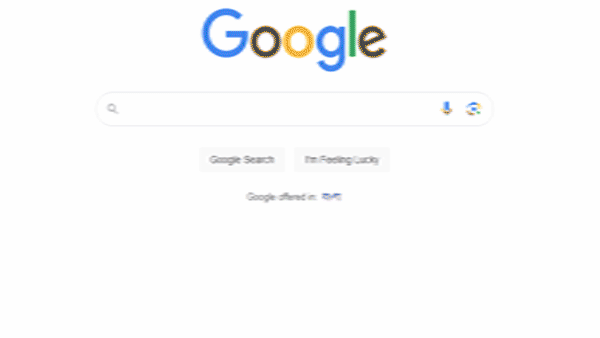
Google's acronym breaks down as Global, Organization, Oriented, Group, and Language, defining its fundamental identity. Essentially, it functions as a search engine, a crucial tool in navigating the vast expanse of the internet, enabling the retrieval of specific information. In today's interconnected world, every search engine holds the responsibility of bridging communication gaps and fostering cooperation.
Beyond Google, several other prominent search engines exist, including Yahoo, Bing, DuckDuckGo, Baidu, AOL, Ecosia, Ask, and Brave Search Engine, among others.
The automated program utilized by Google, known as a robot, spider, or crawler, systematically scans web pages, traversing links from one page to another. Larry Page is often credited as the originator of Google (CO), while Sergey Brin, his associate and partner, played a significant role as its president. Both individuals are computer scientists holding PhDs from Stanford University in California."
In 1996, Larry Page and Sergey Brin initiated a research project named Backrub, which eventually evolved into Google. Originally representing the numeral 1 followed by 100 zeros, the name 'Google' was adopted. Google's parent company, Alphabet Inc., a multinational technology conglomerate headquartered in Mountain View, California, emerged from Google's restructuring on October 2, 2015.
Celebrated as Google's birthday, September 27, 1998, marks its inception. With Google's popular services ingrained in our reliance on current technology, the company holds an 83.49% share in the market, while Yahoo's search engine claims 2.72%. Google's substantial online advertising revenue drives its global market dominance, cementing advertising as a primary revenue source.
Renowned for its Gmail service, Google's email platform has become synonymous with electronic communication. Offering free Google Drive storage (15GB) has significantly benefited users who effortlessly access and reuse stored data, images, and software, all without incurring costs—a testament to the liberty of Magna!
Google Play Store, a household name, offers a diverse array of content, from cryptocurrencies to gaming to multimedia in 3D. The Android operating system's ubiquity solidifies Google's standing in the Smartphone realm, with 49.11% of the world's 7.33 billion Smartphone users relying solely on Android devices.
Google Chrome reigns supreme in the browsing sphere, flaunting simplicity, speed, and diverse functionalities. Despite competition from browsers like Mozilla Firefox, Safari, Opera, Edge, Tor, Brave, Sea Monkey, Arc, Vivaldi, and Yandi, Google Chrome maintains its market dominance as the preferred choice for internet browsing.
Google, under GCP (Google Cloud Platform), holds a dominant position in the cloud platform industry, with AWS (Amazon Web Services) and Azure (Microsoft) emerging as its primary competitors in this market segment.
Google's satellite mapping and navigation service, globally recognized as Google Maps, has revolutionized navigation, providing an unparalleled tool for traversing unknown territories.
YouTube, a video-sharing platform under Google's umbrella, captivates audiences worldwide, spawning a multitude of content creators known as YouTubers. This platform fosters both monetary gain and fame, enabling diverse content ranging from educational tutorials to varied subjects, freely downloadable and uploadable without constraints. Google acquired YouTube from Javed Karim, born on October 28, 1979, in Merseburg, East Germany, to a Bangladeshi father, Naemul Karim, a 3M researcher, and a German mother, Christine, a biochemist at the University of Minnesota.
Within Alphabet Inc., subsidiary companies and divisions are consistently engaged in propelling Google's future innovations:
Artificial Intelligence (AI) and Machine Learning: Google leads in AI and machine learning research, integrating these technologies into products like search enhancement, voice recognition, and recommendation algorithms. Future strides in AI may extend to healthcare, autonomous vehicles, and beyond.
Quantum Computing: Google's focus on quantum computing seeks to surpass the limits of classical computers, potentially revolutionizing multiple industries.
Healthcare and Life Sciences: Google ventures into healthcare technology, emphasizing electronic health records, disease detection, and medical research innovations.
Smart Devices and IoT: Products like Google Home, Nest, and Android for IoT mark Google's presence in the smart device market, with plans for expanded integration within the IoT ecosystem.
Autonomous Vehicles: Waymo, Google's subsidiary, pioneers self-driving car technology, with potential expansions into transportation and delivery systems.
Renewable Energy and Sustainability: Committed to carbon neutrality, Google prioritizes renewable energy in its data centers, highlighting a dedication to sustainability initiatives.
Internet Connectivity: Projects like Project Loon and Google Fiber demonstrate Google's efforts to enhance internet access in underserved regions, aligning with global expansion plans.
Education and Digital Literacy: Google's investment in educational technology, exemplified by Google for Education, signifies the ongoing commitment to fostering digital literacy and educational resources.
![]()
The 3D revolution creates a second world for human welfare!
Written by Administrator

A 3D image is also known as a three-dimensional image. When it comes to visual experience, 3D images stand as pioneers, offering a superior visual threat that reflects the light, width, and depth of the real world. Unlike their 2D counterparts, which often look schematic with flatness, 3D images enhance the visual encounter, providing a realism that captivates the senses.
Stereoscopy, a dynamic method for creating 3D images, intricately weaves a tapestry of depth perception for the human eye. This impressive effect can be achieved through various means, such as anaglyph glasses (red and blue), polarized glasses, or shutter glasses - all contributing to a rich 3D experience on screen or in the theater.
Say goodbye to traditional glasses. Enter autostereoscopic 3D, also known as glasses-free 3D technology. Using lenticular lenses or parallax indicators, this innovation allows viewers to enter the 3D realm without the need for special glasses, presenting distinct images for an immersive experience. Witnessing a film in 3D is like stepping into the narrative. Numerous films embrace 3D technology, transforming the viewing experience into a lifelike immersion that lasts long after the credits roll. Video games, the playground of the digital world, leverage 3D graphics and stereoscopic effects to enhance realism and gameplay. Each frame becomes a portal to a virtual dimension, enhancing the gaming adventure. 3D imaging transcends the boundaries of conventional visuals, providing a realistic and engaging experience. From stereoscopy to glasses-free 3D, these technologies add depth to our visual narratives, redefining how we perceive and interact with images.
Virtual Reality (VR) and Augmented Reality (AR): These technologies will leverage 3D images to serve immersive virtual and mixed reality. In design and innovation, the role of 3D images is paramount, serving as the basis for creating complex 3D models spanning objects, buildings, and environments. This transformative process finds applications in various fields such as design, architecture, cooling, and beyond.
The display of 3D images involves a delicate interplay of hardware and software features. As technology relentlessly advances, it constantly reshapes the landscape, providing increasingly realistic and immersive 3D experiences across domains.
The rise in popularity of 3D design is underpinned by multifaceted factors, each contributing to its widespread adoption. Here's a closer look at some of the key elements fueling the fascination with 3D design:
- Realism and Immersion
In areas such as video games, movies, virtual reality, and augmented reality, 3D design captivates with its ability to create highly realistic and immersive environments. It acts as a portal, transporting users to alternate worlds or enriching their experience through lifelike simulations.
- Improved visualization
In fields such as architecture, engineering, product design, and interior design, 3D design offers a superior visualization tool. The ability to provide accurate and detailed representations overcomes the limitations of 2D design, enabling professionals to effectively communicate ideas to clients and stakeholders.
- 3D modeling and design software give designers and engineers the ability to effortlessly modify and iterate on their creations. This iterative process not only saves time and resources but also contributes to superior results in product and project development.
- Important in rapid prototyping and product development, 3D design facilitates the creation of physical prototypes through techniques such as 3D printing. This proves invaluable for testing and validating concepts before committing to full-scale production.
- Across industries, 3D design has emerged as a cost-saving tool that reduces the need for physical prototypes and reduces errors during the development phase. This efficiency translates into streamlined manufacturing and construction processes.
- The versatility of 3D design extends its reach across sectors ranging from entertainment and gaming to healthcare, automotive, and aerospace. This wide spectrum of applications significantly contributes to its popularity and integration in various fields.
- In education and professional training, 3D design proves invaluable. It serves as a powerful tool for understanding complex subjects like anatomy, engineering principles, and architectural design.
In essence, 3D modeling and design stand as dynamic forces shaping the visual landscape, foreshadowing a future where innovation knows no bounds. 3D design tools provide a platform for artistic expression and creativity.
Artists, animators, and designers harness the power of 3D software to create visually breathtaking and groundbreaking masterpieces in art, animation, and visual effects. As technology continues its relentless march in both the hardware and software domains, 3D design has undergone a transformation. Advances in technology have made 3D design more accessible and user-friendly, removing barriers for individuals and businesses alike and driving its widespread appeal.
The entertainment industry, an ever-evolving landscape surrounding movies and video games, has embraced 3D design to deliver fresh and enjoyable experiences to viewers. 3D technology has evolved into a major selling point for these entertainment mediums, captivating audiences with its immersive visual appeal. In short, the wave of popularity around 3D design is evidence of its multifaceted effects:
- The key strength of 3D design is its ability to create visual experiences that are both realistic and dynamic. This ability transcends traditional boundaries, providing a new dimension to artistic expression and storytelling.
- Advances in 3D design have not only encouraged artistic innovation but also revolutionized design and manufacturing processes. Technology facilitates precision and efficiency in how products are conceptualized, prototyped, and brought to fruition.
- Beyond its commercial applications, 3D design opens the door to creative and educational opportunities across industries. From enhancing education in the classroom to fostering innovation in fields such as healthcare and engineering, 3D design serves as a catalyst for progress.
As technology continues to improve, the integration of 3D design into our daily lives is increasingly pronounced. It is not only a tool for artists and designers but a transformative force in the way we perceive, create, and experience the visual world.
In creating 3D imagery, diverse approaches emerge to shape captivating visual experiences, with distinct forms taking center stage:
Stereoscopy 3D images intricately weave a tapestry of depth perception, drawing human attention through a heterogeneous image. This immersive effect can be achieved through a variety of means, including anaglyph glasses (red and blue lenses), polarized glasses, or shutter glasses when engaging with 3D content on a screen or in a theater. Autostereoscopic 3D, often hailed as glasses-free 3D technology, revolutionizes the viewing experience. Using lenticular lenses or parallax indicators, it introduces 3D effects without special glasses, offering each image a unique identification.
Entrepreneurial in applications, 3D imaging finds its presence in many realms:
- A 3D cinematic odyssey. Many films enter the realm of 3D, creating an immersive and lifelike viewing experience for viewers.
- Gaming Reality Revealed In gaming, 3D graphics and stereoscopic effects enhance realism, transforming the gameplay of ordinary video games.
- Virtual Reality (VR) and Augmented Reality (AR): Immersive Technological Frontiers The fields of VR and AR leverage 3D imagery, creating immersive virtual and mixed realities that transport users to alternate dimensions.
- A foundation for creativity, 3D images serve as key elements in creating models for objects, buildings, and environments, in design, architecture, clinging, and beyond.
While displaying 3D images often requires consideration of hardware and software specifications, technology is constantly evolving to provide increasingly realistic and immersive experiences in a variety of areas.
3D design's rise to popular acclaim finds its roots in a number of factors, driven by:
- Creating Lifelike Experiences 3D design has emerged as a catalyst for creating highly realistic, immersive environments, enticing users through video games, movies, virtual reality, and augmented reality, including lifelike simulations.
In essence, the allure of 3D imagery and design is its transformative ability to transport individuals to a place where reality is inextricably intertwined with creative expression and technological innovation. In the field of design, 3D design emerges as a beacon of enhanced visualization, providing more precise and detailed representations of objects and spaces than its 2D counterparts. This superior visual clarity proves invaluable in disciplines such as architecture, engineering, product design, and interior design, empowering professionals to communicate their ideas and concepts to clients and stakeholders with greater precision. The advent of 3D modeling and design software is a paradigm shift in the design process, facilitating iterative design with unparalleled ease. Designers and engineers use this ability to effortlessly modify and iterate on their creations. This iterative approach not only saves valuable time and resources in product or project development but also leads to superior results, increased innovation, and efficiency. 3D design plays an important role in rapid prototyping and product development. Serving as an essential tool, it enables rapid and efficient prototyping, an important process for testing and validating concepts before starting full-scale production. This intersection of design and prototyping accelerates the development trajectory, ensuring the realization of refined and successful results. This allows the creation of physical prototypes through techniques such as 3D printing, which are invaluable for testing and validating concepts before full-scale production. In several cases, the integration of 3D design emerged as a catalyst for substantial cost savings. By reducing reliance on physical prototypes and mitigating errors and design flaws early in the development process, 3D design paves the way for more streamlined and cost-effective manufacturing and construction processes.
The scope of 3D design transcends boundaries, finding applications across a broad spectrum of industries. From the fields of entertainment and gaming to healthcare, automotive, aerospace, and beyond, its versatility plays a major role in its widespread adoption and popularity. In education and professional training, 3D design serves as a powerful educational tool. Its application helps students and professionals grasp complex concepts, especially in subjects such as anatomy, engineering principles, and architectural design. This educational support not only improves understanding but also contributes to the overall advancement of skills. Beyond its practical application as a canvas for creativity and artistry, 3D design tools serve as a dynamic platform for artistic expression and creativity. Artists, animators, and designers harness the power of 3D software to create visually stunning and innovative works of art, animation, and visual effects. This combination of technology and creativity results in a rich landscape of artistic possibilities.
In the evolving landscape of technology, significant advances in both hardware and software have democratized 3D design, making it more accessible and user-friendly. This transformation has broken down barriers to entry for individuals and businesses, prompting widespread adoption of 3D design. The entertainment industry, encompassing movies and video games, has undergone a paradigm shift with the inclusion of 3D design. This infusion breathes new life into the audience experience, positioning 3D technology as a major selling point in entertainment. The growing popularity of 3D design is a testament to its multifaceted impact. Its ability to create realistic and dynamic visual experiences, streamline design and manufacturing processes, and provide creative and educational opportunities across industries contributes to its ubiquity. As technology continues its relentless progress, 3D design is seamlessly integrated into our daily lives, becoming increasingly integral.
Open-source tools are shaping the landscape. A myriad of open-source software tools have emerged, becoming favorites among professionals and enthusiasts alike in the field of 3D design and modeling. Let's explore some of these popular tools:
- Blender A versatile powerhouse, Blender stands out as a powerful and versatile 3D modeling and animation software. Famous in the 3D graphics and animation community, it helps in creating 3D models, animations, simulations, and even video editing.
- FreeCAD Parametric 3D Catering to the parametric marvel in the world of CAD modeling, FreeCAD is helpful in designing real-life objects, mechanical parts, and buildings and creating various 3D models. Its prominence is particularly pronounced in the fields of engineering and architecture.
- OpenSCAD Code-Centric 3D Modeling OpenSCAD 3D takes a script-based approach to CAD modeling, focusing on creating complex designs through programming. This tool appeals to those who prefer a code-centric approach to design and modeling.
- Tinkercad Web-based Simplicity for All Tinkercad has emerged as a user-friendly, web-based 3D design tool, catering to beginners, students, and academics alike. Its ease of use makes it particularly popular for creating 3D printable designs.
In this dynamic landscape, the combination of technological innovation and creative expression is changing how we engage with design, unlocking possibilities and pushing the boundaries of what 3D design can achieve.
Wings 3D is famous for its simplicity and intuitive design. Wings 3D stands out as a subdivision modeler, primarily used for creating character models and organic shapes. Its hallmark is a seamless user experience and a streamlined interface that simplifies the modeling process.
Art of Illusion: Positioned as an open-source 3D modeling and rendering studio, Art of Illusion specializes in creating complex 3D scenes and animations. It finds particular favor in the artistic and hobbyist community for its versatile abilities.
A stalwart in the BRL-CAD field, BRL-CAD serves as a solid modeling system designed for engineering and scientific applications. With a legacy spanning decades, it is celebrated for its unwavering accuracy and precision in geometric modeling.
MeshLab focuses on fine-grained processing and editing of 3D mesh data. MeshLab is the tool of choice for cleaning 3D scans, managing point cloud data, and performing various mesh editing operations.
Sweet Home 3D Moving on to interior design, Sweet Home 3D has emerged as an open-source application that enables users to design and visualize home interiors. Its versatility makes it a valuable resource for architects, interior designers, and homeowners.
MakeHuman MakeHuman is a specialized tool for realistic 3D human character creation and animation, often employed in game development and animation projects.
These open-source 3D design tools offer different features and capabilities for different applications and skill levels. Whether you're a seasoned professional in design, engineering, or industry, or an enthusiastic hobbyist, there's a perfect open-source tool to solve your 3D modeling and design needs.
Although the field of 3D software is rich in potential, running such software on a computer can pose challenges in terms of software complexity and computer capabilities. Here are some common problems that can arise when operating 3D software:
Embarking on the journey of 3D design and modeling is an exciting venture, but it comes with its share of challenges. Understanding and addressing these issues is critical to a seamless experience. Let's discuss the common challenges associated with running 3D software:
- 3D software demands considerable resources, and inadequate hardware can result in slow performance, lags, and crashes. Problems can manifest as low frame rates, slow rendering, and a responsive interface.
- Make sure your computer meets the hardware requirements for optimal 3D software operation. Upgrade hardware if necessary.
- Not all computers have the necessary hardware for 3D software. Some applications may require a dedicated graphics card, making computers with integrated graphics unsuitable.
- Verify your computer's compatibility with specific 3D software. Consider upgrading the hardware if necessary.
- Running 3D software on older operating systems or hardware may cause compatibility issues, as some software versions may not be supported.
- Keep the operating system and software updated to align with the latest requirements.
- Outdated or incompatible graphics drivers can cause problems, instability, and crashes during 3D software operation.
- Update graphics drivers regularly to ensure optimal performance.
- Memory-intensive 3D rendering and modeling can stress systems lacking sufficient random access memory (RAM).
- Mitigation: Upgrade RAM capacity to handle large 3D models and scenes smoothly.
- 3D software and associated files use considerable disk space, causing potential problems if storage is low.
- Maintain sufficient storage space by using external drives or cloud storage, especially for extensive projects.
- Running 3D software intensively taxes the CPU and GPU, potentially causing overheating without an adequate cooling system.
- Make sure your computer's cooling system is strong to prevent performance degradation or hardware damage.
- 3D Software may contain bugs or errors, which may cause unexpected crashes or erratic behavior.
- Be on the lookout for software updates and patches to correct issues and increase stability
- Some 3D software requires proper activation or licensing for full functionality.
- Ensure proper activation to avoid loss of functionality or non-operational software.
- Downloading 3D software from unofficial sources may expose users to security risks such as malware
- Source software from reputable channels to mitigate security threats.
Ensuring a Smooth 3D Experience: To overcome these challenges, it is essential to align your computer with the hardware and software requirements of your chosen 3D software. Regular updates, adequate resources, and prompt issue resolution contribute to a seamless 3D design journey.
Optimal Computer Configuration for 3D Software: The ideal computer setup varies based on specific software, project complexity, and budget. However, consider these general guidelines:
- Processor (CPU): Multicore processor (eg, Intel Core i7 or AMD Ryzen 7) for complex scenarios. Quad-core processor (eg, Intel Core i5 or AMD Ryzen 5) for at least basic 3D work.
- Graphics Card (GPU): Recommended: Dedicated GPU with enough VRAM for optimal rendering. Mid-range dedicated GPU (2GB VRAM) for minimal basic tasks.
- Memory (RAM): 16GB or more for medium complex models. 8GB minimum, with potential performance limitations for larger projects.
- Storage: Fast SSD for operating systems, plus additional storage for projects. At least 256GB for the minimum operating system.
- Display: High-resolution monitor for precise 3D design work.
- Operating System: Check software requirements for compatibility.
- Sending device: 3-button mouse with scroll wheel for modeling and navigation.
- Internet connection: Essential for updates and collaboration.
- Cooling System: Ensure adequate cooling to prevent overheating.
- Backup solution: Implement a robust backup system for project protection.
Given the varying requirements of 3D software applications, it is crucial to check the official documentation of the specific software for detailed system requirements. Future-proofing your system beyond minimum requirements ensures adaptability to increasingly complex 3D projects as your skills advance.
The metaverse emerges as the nexus of the digital realm, fostering communication, socialization, and collaboration. It introduces a novel dimension of social connectivity that transcends the boundaries set by traditional social media platforms. Envisioned as the hub of the digital economy, Metaverse enables users to buy, sell, and trade digital assets, services, and experiences. Its implications span virtual real estate, digital art, NFTs (Non-Fungible Tokens), and beyond. Metaverse has the potential to revolutionize education and training through immersive, hands-on learning experiences. It proves particularly valuable for vocational training, distance learning, and skill development. Businesses are entering the metaverse for remote work, collaboration, and meetings, presenting a possibility to redefine how teams work and communicate across geographic boundaries. Within the Metaverse, users can explore virtual worlds, attend virtual concerts, engage in gaming, and participate in numerous recreational activities. It unfolds as a new frontier for digital entertainment and leisure. The growing demand for 3D graphics and metaverse experiences requires robust and high-speed Internet infrastructure to effectively support data-intensive applications. Establishing standards for interoperability and data exchange emerges as a critical requirement for a seamless metaverse experience, enabling users to seamlessly traverse different virtual environments and platforms. Ensuring the security and privacy of users within the metaverse becomes paramount, especially in transactions involving digital assets, personal information, and financial transactions. The accessibility of the metaverse should cut across a broad spectrum of users, regardless of physical ability, socioeconomic status, or technological proficiency.
Content Control: As the metaverse integrates into society, it becomes imperative to address content control, moderation, and governance concerns. Recognizing the environmental impact of 3D graphics and metaverse, driven by the energy consumption of servers and data centers, emphasizes the need for a sustainable approach. Users need education and digital literacy to navigate the metaverse safely and make informed decisions about their participation.
In short, the potential for 3D graphics to reshape how we work, socialize, learn, and entertain is huge. While these technologies are evolving, addressing the growing needs and challenges is critical to realizing their full potential and ensuring a positive and inclusive digital future.
Understanding 3D NFT:
According to my latest knowledge update in September 2021, 3D NFTs represent a distinct class of non-fungible tokens (NFTs). These tokens symbolize ownership of 3D digital assets or objects and are unique digital entities built on blockchain technology. 3D NFTs encompass a variety of digital assets, including 3D models, sculptures, virtual objects, and even virtual real estate within virtual worlds and metaverse environments. Their unique features and characteristics make them tradable products in the NFT marketplace.
For the latest information on 3D NFTs, including prices and marketplaces, I recommend checking current sources as developments in the NFT space are dynamic and subject to change.
Navigating the Dynamic Realm of 3D NFTs: Pricing and Market Ecosystems
Valuations of 3D NFTs exhibit significant variation, influenced by factors such as creator popularity, rarity of 3D assets, collector demand, and hosting platform. Certain 3D NFTs run into the thousands or even millions, while others cater to a more budget-conscious audience.
Many NFT marketplaces streamline the process of buying and selling 3D NFTs, provide a place for creators to list and list their creations, and offer collectors a platform to explore, bid on, and acquire these digital assets. Key players in the NFT marketplace arena include:
- OpenSea: Recognized as one of the largest and most respected NFT marketplaces, OpenSea supports a broad spectrum of NFT categories, including 3D assets.
- Rare: Positioned as a decentralized NFT marketplace, Rare empowers users to create and exchange NFTs consisting of 3D objects.
- SuperRare: Focusing on digital art NFTs, SuperRare's offerings include 3D art and sculptures.
- Decentraland: Acting as a virtual world on the blockchain, Decentraland enables users to trade virtual real estate and 3D assets as NFTs.
Given the evolving nature of the NFT space, constant changes in prices, marketplaces, and trends are certainly par for the course. For those who venture into this arena, it is most important to stay current with the latest information on 3D NFTs, marketplace dynamics, and pricing. It is equally essential to be aware of potential risks associated with NFT investments, including environmental impact and market volatility.
Opportunities for Freelancers in 3D Games and Movies:
Freelancers equipped with skills in 3D content creation and development find plenty of ways to monetize their skills in the dynamic realm of games and movies. Here's a breakdown of potential opportunities and directions for freelancers:
- 3D Modeling and Animation:
- Character Modeling: Extend services to game development and animation studios.
- Environment Modeling: Engage in creating 3D environments for gaming, film, or architectural visualization.
- Animation: Satisfy the character and object animation needs, especially in the animation and gaming sectors.
- Texturing and Shading:
- Texture Artist: Identify opportunities in game development, film, and animation studios.
- 3D Rendering:
- Rendering Services: Offer rendering expertise for architectural visualization, product design, and film special effects.
- Virtual Reality (VR) and Augmented Reality (AR):
- VR/AR Content Creation: Specializes in creating 3D content for virtual and augmented reality experiences.
- 3D Printing:
- 3D Printable Models: Design products for areas like product design, toys, and collectibles and sell them on marketplaces like Shapeway and Etsy.
- Game Development:
- Game Design and Development: Provide services in game design, programming, level design, and scripting.
- Freelance Marketplace:
- Use platforms like Upwork, Freelancer, and Fiverr to find 3D modeling, animation, and game development projects.
- Building a portfolio:
- Showcase your work on personal websites or platforms like ArtStation and Behance.
- Networking:
- Attend industry events and connect with professionals in the 3D gaming and film sectors
- Continuing Education: - Stay updated with the latest software and techniques through online courses and tutorials.
- Licensing of 3D models: - Sell 3D models on marketplaces like Sketchfab, TurboSquid, or CGTrader.
- Create NFT:- Explore the NFT space by creating and selling 3D art or virtual assets on NFT marketplaces.
For freelancers, effective marketing, delivering high-quality work, and building a strong reputation within their niche are necessary steps to attract clients and ensure repeat business. The ability to adapt to emerging technologies and trends in the 3D industry further expands the scope of freelancers in games and films.
![]()

Addiction manifests as a compelling force drawing individuals toward actions they repeatedly engage in, fostering a dependence over which they lack control. Repeated actions culminate in habits, typically under control, but when spiraling beyond control, they morph into unhealthy, addictive behaviors. The inability to regulate these behaviors induces distress, creating instability within oneself. The spectrum of addiction spans various types, necessitating an understanding of both physical and human dimensions.
Physical addiction, like drug dependence, disrupts bodily equilibrium, while compulsive behaviors or behavioral addictions corrode human balance, exerting a more profound impact on life. Human ailments or compulsive behavioral dependencies account for a substantial 95-97%, overshadowing the prevalence of physical addictions, which hover around 3-5%. Vigilance is imperative!
Distinguishing habits from addictions is pivotal. Waking up early constitutes a commendable habit, while overindulgence in eating or sleeping surpasses healthy habits, inching into the realm of addiction. Moderation is key, balancing positive and negative aspects.
Here is a compilation of some highly addictive behaviors:
• Substance abuse including drugs, narcotics, or intoxicants.
• Engagement in illicit or excessive sexual activities.
• Overconsumption of foods like sugary snacks, caffeine, and fatty foods.
• Involvement in criminal activities or theft.
• Compulsive oversleeping or marathon sleeping.
• Excessive spending beyond means.
• Persistent anger, irritability, or stubbornness.
• Suspicions, guilt, and fear leading to addictive behaviors.
• Obsessive gaming or spending excessive time on computers or mobiles.
• Compulsive gambling.
• Addiction to entertainment or extravagant living.
• Overthinking or anxiety becoming addictive.
• Regular consumption of medications, as per prescription, resulting in addiction.
• Viewing pornographic content leads to harmful addictive patterns.
• Masturbation or self-centered sexual practices leading to a problematic stage of addiction.
In essence, even positive habits, when spiraling out of control, pose risks of transforming into detrimental addictions, urging constant vigilance. Compulsive computer or mobile usage embodies a subset of such addictive behaviors, necessitating attention and moderation to avert life's degradation.
Upon reclining in solitude, edging towards antisocial tendencies, altering nocturnal patterns to diurnal slumber, and channeling excessive funds into the digital realm, individuals confine themselves to an exclusive zone barring external entry. Their inclination towards electronic devices burgeons, eclipsing wisdom with every tick of the clock. Eccentricities evolve unchecked, steering thoughts in contrary directions, delving into an alternate reality detached from their actual existence. Gradually, metamorphosing into reclusive monoliths, they exhibit apathy towards studies and work, fostering an inflated self-perception. Repetitive actions devoid of logic yield no reward despite persistent endeavors.
Liberation from this entanglement within electronic devices beckons for crucial steps:
• Maintain mindfulness while operating devices, steering clear of being hypnotized, and remain vigilant about the surroundings.
• Abstain from prolonged usage at night, setting boundaries for screen time.
• Construct a defined schedule for productive work or entertainment through electronic devices, averting the urge to finish tasks hastily.
• Discourage misuse of social media and restrict divulging information online, especially for minors.
• Exercise caution against fixation on multimedia series, recognizing it as a potential hazard.
• Refrain from attempting tasks exceeding personal capabilities and shun indulgence in daydreaming.
• Adhere to optometrist-prescribed eyewear guidelines and maintain recommended distances while using screens.
• Ensure timely and balanced meals, ample hydration, regular exercise, and adequate rest.
• Enforce a structured timeline for the use of the internet, computers, mobiles, or TV.
• Seek family support while utilizing these gadgets and encourage healthy recreational activities.
• Cultivate habits of reading varied literature, engaging in physical activities, meditation, and prayer for a balanced lifestyle.
• Instill moral values to harness technology for the betterment of humanity and solve problems altruistically.
Moreover, individuals not professionally inclined toward computer programming should proactively educate themselves on mitigating unnecessary reliance on electronic devices to avert potential consequences.
![]()
Learning Web Development is Hard to Make Easy
Written by Administrator 
Mastering web development poses challenges despite efforts to simplify the process. Web design and development are interdependent, rendering one stagnant without the other. Individuals often embark on learning web design or development as a hobby, but their engagement diminishes over time. Where do these aspiring enthusiasts vanish from the web realm?
The term "web" denotes connectivity to the internet, propagated through electrical waves. Within the web domain lies HTML, a relatively straightforward and enjoyable computer language. Virtually all web pages we encounter, such as Google or Facebook, are crafted using HTML. Essentially, everything displayed on mobile or computer screens results from HTML code.
Besides HTML, several other computer languages hold equal importance in the web ecosystem, like CSS, PHP, JavaScript, and Python. These server-side languages secure crucial information within extensive server computers, dispensing only necessary data to users. HTML primarily presents crucial text, images, and colors on the display, while PHP, JavaScript, or Python handle substantive tasks like calculations or logic. These tasks, encoded by programmers, retrieve and store data according to scripts on server-side computers, delivering specific results when required.
While web design and development share connections, they also differ significantly. It's imperative for students to discern these distinctions early on; otherwise, confusion reigns. Numerous adept students unknowingly make this error, squandering considerable time. A proficient mentor plays a pivotal role here, guiding novices to prevent such missteps. Given the time needed for students to amass experience, an adept teacher can illuminate the path for aspiring students, ensuring a brighter future. Wouldn't you agree?
Numerous fledgling freelancers encounter overwhelming stress and frustration while navigating the labyrinth of web development. The myriad choices of programming languages and design elements often lead them astray, bereft of proper guidance. Those with varied interests strive to find their way, relying on their innate talent, analytical thinking, patience, and practice rather than solely depending on video tutorials or mentors. Nevertheless, the domain remains undeniably intricate, prompting most web experts to advocate mastering any programming language comprehensively.
The crux of their advice lies in the notion that dabbling superficially in PHP, JavaScript, MySQL, or Python proves futile. Each language holds significant power, akin to potent bullets. Mastery of one language renders the others as navigable as waterways. However, achieving success as a freelancer remains a formidable challenge since not everyone can excel. Thus, emphasis is placed on diligent learning, extensive practice, and the pursuit of mastering at least one programming language.
Presently, nearly 80% of web development experts rely on Content Management Systems (CMS). Despite their user-friendly nature, customization to the fullest extent remains unattainable. This predicament befalls the uninitiated and forces less skilled individuals to seek proficient developers (at a cost) after deploying open-source CMS like WordPress, Joomla, Magento, Drupal, OIX, or Prestashop onto servers. This reliance poses a significant limitation, particularly when alterations to text, banners, logos, or payment methods are needed, compounded by the threat of viral infections.
In the realm of web design, emphasis is placed on web graphics and front-end templates, whereas web development delves into back-end server-side scripting, encompassing logical programming. This domain is often referred to as the Model View Control (MVC) model or, in some cases, the Model View Template (MVT) model. A proficient web developer or designer must possess a comprehensive understanding of both models to ensure their actions align with the best practices for themselves and others.
Comprehending the intricate interplay between graphics and coding is crucial for both web designers and developers. The concept of a "full-stack developer" encapsulates this understanding, signifying mastery across the entire spectrum of web development and design.
Certain tasks are fundamental in web design, encompassing logo design, customized logo positioning, creation, and customization of banners or animated flush banners through modules and plug-ins. Tailoring header and footer designs to align with individual and collective needs requires seamless coordination between code and graphics. Furthermore, configuring sidebars, menu bars, and buttons, and ensuring the responsiveness of the front-end template across various devices and internet browsers like Internet Explorer, Mozilla Firefox, Opera, Google Chrome, Safari Browser, Brave, etc. is crucial. The web browser should support parallelism, ensuring the design remains intact and facilitates swift loading without breakage.
Undoubtedly, being a web developer is inherently more intricate than being a web designer. However, both domains demand proficiency in design, a fusion of web graphics and coding, and precise, robust backend coding that solves problems. Web coders meticulously manipulate symbols like dots, colons, semicolons, brackets, etc., recognizing their utmost significance. A minute error in typing or logical programming grammar could nullify their entire expertise, consigning their efforts to oblivion.
Web designers and developers are unparalleled in their potential to generate income, with demand far surpassing other freelancing categories. Both professions necessitate extensive utilization of diverse software tools, coupled with an extensive software collection. Server efficiency is paramount, whether operating online or offline. Skills in website backup, web database servers, client servers, and web security are indispensable, mandating a scrupulous approach devoid of any eccentricities in their professional pursuits.
Crafting a responsive website that seamlessly adjusts to diverse screen sizes and resolutions across Smartphones, tablets, laptops, and desktops remains a cornerstone of modern web design. Employing flexible grids, adaptable images, and tailored media queries becomes pivotal for an optimal user experience.
Beyond mere aesthetics, web designers prioritize creating intuitive interfaces that emphasize the user experience. Navigational simplicity, logical flow, and interactive elements play a pivotal role in engaging and satisfying website visitors.
Front-end developers specialize in the visual and interactive aspects of websites, translating design concepts into functional web pages using HTML, CSS, and JavaScript. Their objective is to ensure a fluid user experience and visual allure.
In contrast, back-end developers immerse themselves in server-side programming, overseeing databases, server configurations, and website functionality. Utilizing languages like PHP, Python, Ruby, or Java, they handle intricate server-side logic.
Leveraging Content Management Systems (CMS) such as WordPress, Drupal, or Joomla simplifies website management, empowering even those with minimal technical expertise to modify content, manage users, and tweak website appearance.
Creating online stores involves intricate tasks like implementing secure payment gateways, managing product catalogs, and ensuring smooth cart functionalities and checkout processes. This process necessitates a harmonious blend of design finesse and robust development.
The focus on optimizing websites for search engines (SEO) and ensuring accessibility for users with disabilities is central to web designers and developers. Compliance with accessibility standards and search engine guidelines broadens reach and fosters inclusivity.
Rigorous testing across browsers, devices, and operating systems is vital to rectify design glitches or inconsistencies, ensuring a flawless user experience.
Given the rapid evolution of web technologies, professionals in web design and development must continuously adapt to emerging trends and best practices to remain competitive in the field.
Effective collaboration and communication among designers, developers, content creators, and clients are fundamental for the success of web projects, streamlining workflow and ensuring project completion.
Implementing robust security measures like SSL certificates, encrypted connections, and regular security audits becomes imperative to protect sensitive data and maintain user trust in the face of cyber threats.
Enhancing website performance through image optimization, caching, reducing HTTP requests, and code compression ensures faster load times, ultimately enhancing user satisfaction and search engine rankings.
Many individuals engage in a fallacious comparison of websites, assuming superiority based on aesthetics. Similarly, doubts often arise regarding the correctness of technology or the choice of Content Management Systems (CMS). These are archaic notions. True proficiency lies in cultivating unique ideas and leveraging individual imagination to craft something extraordinary, albeit challenging. Authenticity reigns supreme, eschewing copied works, as it is this uniqueness that garners admiration from followers. The pursuit of compliments should be secondary; instead, the recognition of personal satisfaction in the quality of work is pivotal. A genuine vision resonates and ultimately captivates others.

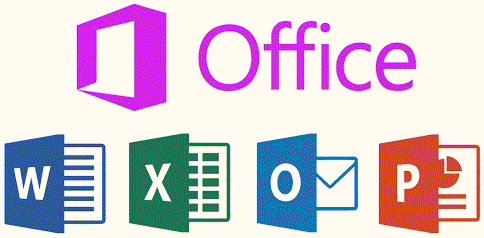
Today, the praise of MS Office or Microsoft Office software cannot be finished. It is so widely used in any office-court, business organization, or even personal need that there is no doubt that without this word processor software, the whole world will become obsolete. MS office software is also called word processor software.
Microsoft Office software is commercial software. There is also another software open source that is completely free! That is Apache Open Office. This word processor software also performs great. If you don't use it, you won't understand. In fact, we, the general users, know Microsoft Office software better. The Microsoft Office software package includes Word, Excel spreadsheet, PowerPoint, Access, Outlook. Each of these features is so important that it's hard to say. Needless to say, each of these software works is so simple, beautiful and enjoyable.
Download link from MS Word Online:
Download Apache Open Office Online Download Link:
First we need to know:
What is the title bar?
![]()
Answer: After opening the office software, the bar at the top where the "initial name" of a document appears is called the title bar.
- Then you need to know what the menu bar is?
![]()
Answer: The second bar that says Home, Insert, Page Layout, Reference etc. is the menu bar.
- Then you need to know what a toolbar is?

Answer: The bar below the menu bar with small icons or icons is called toolbar. Selecting any tool with the mouse, its option or function is displayed here and changes.
What is that taskbar?
![]()
Answer: The taskbar is the bar at the bottom of the software Windows is called the taskbar.
Keyboard Shortcuts, Microsoft Word
Keyboard Shortcuts Result in Microsoft Word
CTRL and A Selects all in the current document.
CTRL and B Bold text.
CTRL and C Copies the item or text to the Clipboard and can be pasted using CTRL and V.
CTRL and D Displays the Font dialogue box.
CTRL and E Centre Alignment.
CTRL and F Displays the Find dialog box, to search the current document.
CTRL and G Displays the Go to dialog box, to go to a specific location in the current document.
CTRL and H Displays the Replace dialogue box.
CTRL and I Italic text.
CTRL and J Full Justification.
CTRL and K Create Hyperlink
CTRL and L Left Alignment
CTRL and M Tab
CTRL and N Creates a new document.
CTRL and O Displays the Open File dialogue box.
CTRL and P Displays the Print dialog box.
CTRL and R Right Alignment.
CTRL and S Displays the Save dialog box.
CTRL and U Underline text
CTRL and V Pastes the copied item or text from the Clipboard into the current position in the document.
CTRL and X Cuts the item or text selected to the Clipboard.
CTRL and Y Redo the last undone action.
CTRL and Z Undoes the last action.
CTRL and ENTER Insert Page Break.
CTRL and F2 Show Print preview.
CTRL and F4 Closes the active document window.
CTRL and F6 Open the next document window.
F1 key Get help or use the Office assistant.
SHIFT and F1 Key Context sensitive help.
F2 Key Move text or image.
SHIFT and F2 Key Copy Text.
F3 Key Insert an autotext entry.
SHIFT and F3 Key Change the case of the selected text.
F4 Key Perform last action again.
SHIFT and F4 Key Perform a Find or Go to action again.
F5 Key Displays the Go to dialogue box, from here you can also Find and Replace.
SHIFT and F5 Key Move to a previous revision.
F6 Key Go to the next frame or pane.
SHIFT and F6 Key Go to the previous frame or pane.
F7 Key Launch the Spell checker.
SHIFT and F7 Key Launch the Thesaurus.
F8 Key Extend the current selection.
SHIFT and F8 Key Shrink the current selection.
F9 Key Update the selected fields.
SHIFT and F9 Key Switch between a field code and its result.
F10 Key Activate the menu bar.
SHIFT and F10 Key Display a Shortcut Menu. Same as right clicking.
F11 Key Go to the next field.
SHIFT and F11 Key Go to the previous field.
F12 Key Save file As, equivalent to tools menu.
SHIFT and F12 Key Save document, equivalent to tools menu
![]()

- Embrace the present's essence and honor the lessons from the past.
- Choosing to donate Rs 1 outweighs holding onto Rs 100.
- Prioritizing saving over earning highlights financial wisdom.
- Earning Rs 1000 is preferable when accompanied by a positive aspect.
- Sorrow often accompanies redemption, transitioning from darkness to light.
- When hungry, even plain rice with salt brings joy to a filled stomach.
- Ignorance breeds sin, while virtue thrives in secrecy.
- Seeking distance from formidable neighbors proves beneficial.
- Preventing sin is preferable to undergoing remorseful repentance.
- Confidence's arrival signals the departure of worry.
- Confronting fear is a battle against one's humanity.
- Effective communication and kindness pave the way to success.
- There are no definitive paths or rules to achieve success.
- Opting for a familiar path is wiser than venturing onto an unfamiliar one.
- Employ communication as you would anticipate from others.
- Misrepresentation often clouds common emotions among people.
- The most significant battle is the internal one fought within oneself.
- Self-talk involves introspective communication.
- Hunger troubles the working man yet receives no support.
- Talent blossoms through hard work and fervent desire.
- In the end, we only regret the chances we didn't take.
- The only way to do great work is to love what you do.
- Happiness depends upon us.
- Believe you can and you're halfway there.
- The future belongs to those who believe in the beauty of their dreams.
- Success is not final, failure is not fatal: It is the courage to continue that counts.
- Be yourself; everyone else is already taken.
- The only limit to our realization of tomorrow will be our doubts of today.
- You miss 100% of the shots you don't take.
- The best way to predict the future is to create it.
- Strive not to be a success, but rather to be of value.
- Change your thoughts and you change your world.
- Everything you can imagine is real.
- The only impossible journey is the one you never begin.
- Do not wait to strike till the iron is hot but make it hot by striking.
- It does not matter how slowly you go as long as you do not stop.
- The biggest risk is not taking any risk. In a world that is changing quickly, the only strategy that is guaranteed to fail is not taking risks.
- Dream big and dare to fail.
- The purpose of our lives is to be happy.
- If you want to lift yourself up, lift up someone else.
- The only way to do great work is to love what you do.
- Winning isn't everything, but wanting to win is.
- I am not a product of my circumstances. I am a product of my decisions.
- Strive not to be a success, but rather to be of value.
- The best revenge is massive success.
- The only limit to our realization of tomorrow will be our doubts of today.
- You must be the change you wish to see in the world.
- Life is 10% what happens to us and 90% how we react to it.
- Life is not measured by the number of breaths we take, but by the moments that take our breath away.
- The only way to do great work is to love what you do.
![]()

In all faiths, reverence is bestowed upon the same divine Creator, much like the unanimity among people of diverse religions when it comes to the significance of money. The notion of a singular Creator is unequivocal; similarly, in the domain of currency, there exists no alternative. Nonetheless, many individuals mistakenly inflate the importance of money; almost revering it as an alternate deity or paramount force may the grace of the Creator bless us with comprehension! The connotations attributed to money are multifaceted and manifold. It's often depicted as a catalyst for failures or mishaps. The descriptors and adjectives associated with money seem boundless. While money undeniably holds a coveted status among life's possessions, it does not reign supreme. Life and spirit hold more profound worth. Thus, it can be deduced that time surpasses money in value, given that while money can procure various goods, time eludes purchase. Is there any inherent energy or power within a mere currency note that fosters success? Money facilitates the acquisition of essential elements: ailing individuals can afford treatment, impoverished souls find solace in insufficiency, and marginalized members of society regain dignity. Money grants agency: it fulfills desires and holds significant sway. Conversely, those bereft of wealth find their desires devoid of price or value.
The pursuit of money fuels diverse actions: employment, entrepreneurship, theft, and deceit reflecting the lengths individuals take for financial gain. However, is everything in this tangible world truly gauged by monetary value? Money often speaks where truth remains silent. Many dismiss money as inconsequential, likening it to mere filth. Yet, when one's pockets run dry, hunger gnaws at the stomach, reality bears the weight of empty pockets, and one cannot carry such burdens lightly. Money isn't perpetually within grasp, and even when available, prudence suggests saving for the future, an endeavor that eludes many. Men, in particular, fall prey to the pitfall of earning more but also spending disproportionately, leading to eventual financial disarray. Earning through study and learning aren't synonymous. Education isn't merely a conduit to amass wealth; it encompasses more than the pursuit of financial prosperity. The pursuit of wealth and personal cultivation through education are distinct trajectories. The absence of money and the incapacity to earn it differ markedly. The former could signify an empty pocket at present, while a fortuitous turn of events or a stroke of luck in the natural order could swiftly transform one's circumstances. This shift could alleviate past struggles or initiate newfound prosperity, turning an empty pocket into a flourishing account in a matter of days.
In ancient times, human civilization relied on barter systems for the exchange of goods, transitioning to the use of encrypted electronic crypto currencies in the contemporary era. While a connection exists between these methods, their essence remains rooted in the concept of trade, exchanging one's needs for another's. However, the medium of exchange has evolved significantly over time.
Numerous individuals possess wealth but lack the knowledge or understanding of where and how to invest it. When money remains entangled with ignorance, its intended purpose becomes futile. The dissemination of knowledge parallels the illumination it brings, much like the utilization of money fosters its augmentation. Stagnation becomes inevitable! Hence, when substantial wealth converges with extensive knowledge within individuals or groups, the potential ramifications could be severe.
Money assumes divergent roles in the hands of different individuals' businesspersons engage in trade, students pay educational fees; addicts succumb to vices, while others channel funds into religious institutions or indulge in vices like gambling and prostitution. The delineation between righteous and illicit usage of money entirely hinges upon the desires, needs, and inclinations of its possessor. Some use money judiciously, some misuses it, and others abuse its potential.
Engraved with the words 'to the bearer on demand,' money signifies a unit or medium of exchange for goods and services. Its etymology traces back to Latin roots. Approximately 5000 years ago, gold and silver coins were utilized as currency in Asia Minor to remunerate soldiers' debts. The inception of paper currency occurred during China's Tang Dynasty in the 7th century, referred to as "flying money." Currently, money assumes various forms, including statutory empowerment, product representation, trust, commercial bank finance, metallic coinage, and paper currency.
"The Religion of Money" delineates a contemporary ethos where currency holds a sanctified stature, guiding societal behaviors akin to religious doctrines. In this paradigm, individuals navigate life's choices, aspirations, and moralities through the lens of financial gain and materialistic pursuits. Money, an omnipresent force, exerts influence over decisions, shaping destinies, and sometimes eclipsing traditional values. This "religion" of affluence shapes ambitions, motivations, and societal hierarchies, shaping a creed where material wealth becomes a measure of success and fulfillment, intertwining faith and financial prosperity in an intricate narrative of modern existence.
![]()
What The Creator Knows (Surely) His Creation Does Not Know!
Written by Administrator
The singular Creator exists without intention, unparalleled and infinite in virtue and power. All manifestations in the world stem from this Creator, unseen amid visible entities.
Every creature, from animals and trees to the vast sky, oceans, and air, stands as a testament to this great Creator. Each entity, knowingly or unknowingly, retains a connection to its Creator through body and soul.
Of all beings, humans reign supreme, cherished as the most beloved creation. This world, with its exquisite beauty, is crafted for humanity's journey an existence transcending evens the afterlife. Reluctant to depart such a stunning realm, people eschew the allure of heaven.
The Creator fashioned humans akin to agricultural crops just as a plant, sprouting from a seed, matures and bears fruit before naturally withering, humans traverse from birth to death, nurturing the soul until departure from the body, akin to shedding the husk of a crop. A marvel of destiny's intricate play!
A vast majority disbelieve in the Creator due to invisibility, deeming belief in the Guru's words preposterous without visible proof. However, this skepticism stems from ignorance and lacks profundity. Only the naive allow such ignorance to sow seeds of disbelief.
Top of Form
The celestial bodies planets, stars, the sun's rhythm, tides, the cycle of day and night, the shifts from morning to afternoon, and the transitions between winter and summer all dutifully adhere to an ordained order. Does this truth resonate so deeply?
The Creator bestowed humanity with consciousness and knowledge. "Seek, and you shall find," echoes within me. A life enriched and blessed emerges from discovering this truth. True seeking leads to the Creator's presence, blessing those who genuinely receive it. It's not merely about seeking the visible; understanding demands depth. This journey necessitates the Creator's guidance His kindness is capable of everything.
At the Creator's will, existence materializes. Every leaf sprouts only by His decree. The sunrise unfailingly in the east, the moon never basking in the sun's light these cosmic phenomena convey reverence towards the great Creator, their language understood through observance and knowledge.
Beyond Earth's solar system lies countless worlds, the Milky Way, galaxies, universes, and multiverses, realms inconceivable to the human mind. Limited by perception, the human eye perceives only what's within its scope, veiled from comprehending vastness. Despite consciousness, understanding this grand universe remains beyond our reach. Man lacks the ability to create even a minuscule atom and is solely able to manipulate and share existing materials the Creator's supremacy is evident.
Who can craft such a colossal universe? Its vastness is immeasurable. "O Lord, none save you can guide me," pleads this feeble understanding, craving forgiveness for its limitations.
Undoubtedly, what the Creator comprehends, His creation remains oblivious to! There exists none but the Creator. O my Creator, in you alone do I seek refuge. Pardon my inadequacies and my belated grasp of your signs. Illuminate your righteous path for me. Who else desires my altruistic deeds but you? If it be your will, guide me along the righteous path; prevent my transgressions if you will it. Without Your consent, salvation eludes me. I implore forgiveness, O merciful entity, from the illusions of your created world. My ignorance persists, failing to acknowledge you and adhere to the path of human spirituality. O wise one, if not you, then whom shall I entreat? Who else but you nurture me in my mother's womb under the relentless sun? Is there a refuge other than fearing the omnipotent Creator, who formed me from naught and will return me too naught? How vast, how supreme is he! O magnificent Creator, grant me tranquility and insight to discern between good and evil. May I, as a human, be pure in mind and body, comprehending the essence of your creation's purpose?
What the Creator knows surely surpasses the comprehension of His creation. This adage reverberates through the corridors of spirituality and philosophy, encapsulating the essence of an omnipotent force's awareness transcending mortal understanding.
The Creator, veiled in unfathomable wisdom and boundless insight, exists beyond the grasp of human cognition. His omniscience extends to every nuance of existence, from the grandeur of cosmic systems to the minutiae of each soul's journey. What he comprehends traverses' realms unknown, encompassing the intricacies of creation's fabric.
Amidst this enigma lies a fundamental truth: the Creator's wisdom surpasses mortal intellect. His omniscience orchestrates the cosmic dance of celestial bodies, the symphony of nature's cycles, and the intricate tapestry of life's myriad forms.
Contrarily, His creation mired in the confines of finite comprehension navigates the labyrinth of existence with limited perception. Humanity, amidst its pursuit of knowledge and understanding, grapples with the insurmountable chasm between mortal insight and divine omniscience.
The Creator's cognizance spans beyond time and space, delving into the unseen dimensions of existence. His profound awareness guides the cosmic ballet, steering the celestial orbs, orchestrating the rhythm of the seasons, and permeating the essence of every living entity.
Despite humanity's relentless quest for enlightenment, the Creator's wisdom remains an elusive horizon. His knowledge transcends the realms of empirical understanding, dwelling in the realm of the ineffable, where the finite meets the infinite.
This intrinsic disparity between the knowledge of the Creator and His creation invokes humility, evoking a profound sense of awe and reverence. It beckons the human spirit to seek, explore, and acknowledge the limits of mortal comprehension in the presence of the boundless wisdom of the Creator.
![]()
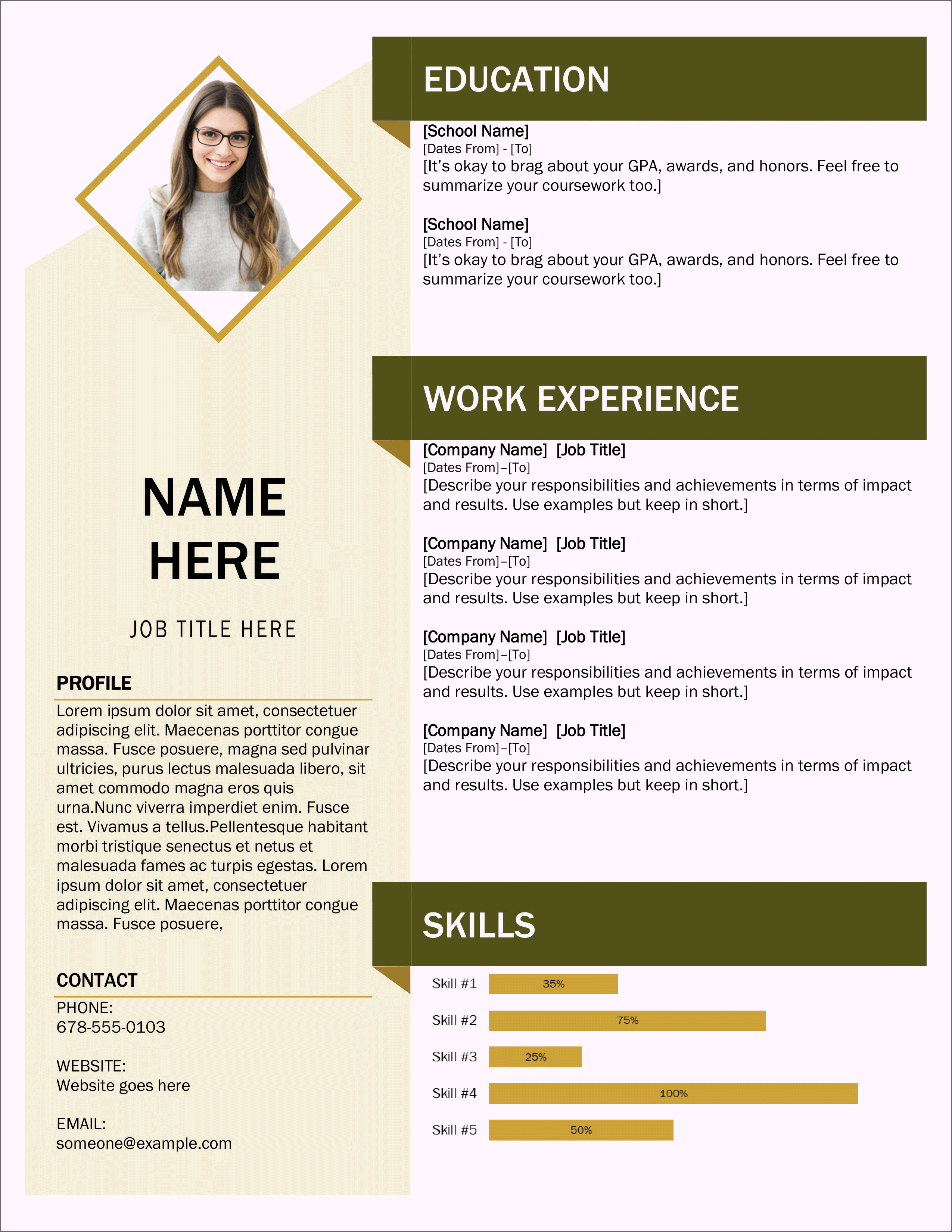
Episode: 1
Curriculum vitae (CV) is a parallel life cycle in English, usually abbreviated as CV. Various CV formats are common, primarily requested for institutional needs where individuals are expected to provide a CV or curriculum vitae. Creating a CV for you is very important. This is an essential skill not only for job seekers but also applies to writing letters, applications, or life stories. The ability to create a CV is fundamental; it reflects the ability to manage work effectively. If a job seeker can't articulate their own CV, it may cast doubt on their ability to handle other responsibilities. Designing one's CV is a minimum prerequisite, especially for students, to develop vital life skills.
Commercial outlets often produce 1 or 2-page CVs. New entrants (apprentices, novices) usually start with an extensive 5-page CV, while experienced professionals or highly qualified individuals (experts, masters) tend to use a more concise 3/4-page format. Additionally, commercial computer stores tend to produce marriage or family contact CVs. The significance lies in the fact that mastering CV creation is a valuable and admirable skill.
It is common practice to create and use a CV downloaded from the Internet, which offers a variety of formats online. However, it is recommended to create it locally on a personal computer. CV formatting holds great significance for job aspirants facing stiff competition from a plethora of talented individuals employing different techniques, ideas, abilities, and creativity.
Interviewers are exceptionally skilled and able to determine whether the CV is authentically written by the applicant or taken from a store or the internet through copy-paste. There is no shame in this difference, as it depends on personal wishes and preferences. Countless people secure jobs by emphasizing the importance of creating their curriculum vitae based on a personally crafted CV. A CV is more than a mere biographical sketch; It is the outward projection of one's personality.
The essence of a 2-page CV, representing a candidate potentially investing 20-30 years in a job "if accepted," underscores its paramount importance. In essence, a 2-page CV encapsulates the act of 'selling oneself' in the competitive job market.
Categories within a Curriculum Vitae (CV) include:
- Contact Information: Includes your name, address, phone number, email, and possibly social media profiles like LinkedIn.
- Summary or Objective: A brief statement summarizing your career goals, professional achievements, and what you bring to the table.
- Professional Experience: Details of your work history, including job titles, company names, dates of employment, and a description of your responsibilities and accomplishments in each role.
- Education: Information about your educational background, including degrees earned, institutions attended, relevant coursework, certifications, and academic achievements.
- Skills: Highlights both technical and soft skills relevant to the job, such as programming languages, project management, communication skills, etc.
- Certifications and Licenses: Any additional certifications, licenses, or professional development courses completed that are pertinent to your field.
- Awards and Honors: Recognition or awards received for your work, academic achievements, or contributions to your field.
- Publications/Presentations: List any publications, research papers, articles, or presentations you've authored or contributed to.
- Volunteer Work or Extracurricular Activities: Details about your involvement in community service, volunteer work, or any relevant extracurricular activities.
- Languages: Proficiency in languages spoken or written, especially if it's beneficial for the role you are applying for.
- Hobbies/Interests: Optional section showcasing personal interests or hobbies that may provide additional insight into your personality or skills.
- References: Typically, "References available upon request." Avoid including actual references unless explicitly asked by the employer.
Things not to do in Curriculum Vitae (CV):
Here are guidelines on what to avoid in a Curriculum Vitae (CV):
- Avoid excessive use of color bars, bullet points, underlining, and bold or italic fonts as they tend to distract rather than enhance the content.
- Refrain from incorporating casual social media-style images if they lack a professional context.
- Unless explicitly requested, avoid scanning and attaching handwritten signatures to your CV.
- Ensure accurate entry of current contact details, particularly a reliable personal cell phone number for immediate contact upon CV approval.
- Never fabricate or misrepresent educational or job qualifications in your CV.
- Avoid adding unnecessary extra pages to the CV.
- Use a stapler pin instead of adhesive to attach documents unless otherwise instructed.
- Strive to make your CV distinct from others, showcasing individuality while maintaining professionalism.
- Carefully fold the CV to fit an envelope by folding from both sides and then three times in the middle, ensuring it matches the envelope size for easy insertion and removal.
- Prior to submission, seek feedback from experienced individuals, correcting any significant errors and ensuring quality presentation. Provide accurate sender and receiver information on a well-packaged envelope.
These pointers aim to refine the CV presentation while ensuring accuracy and professionalism in its content and delivery.
The significance and demand for typewritten Curriculum Vitae (CVs) are steadily waning due to the emergence of digital jobs in the global marketplace. Platforms like "LinkedIn," "Upwork," "Freelancer," and others allow individuals to craft their profiles and portfolios. The quality of work on these websites often surpasses expectations, fulfilling official requirements even when profiles are minimally completed, making digital CVs or profiles the norm for most companies. This transition marks a cutting-edge shift, progressively elevating the importance of creating timely and standardized profiles.
Just as traditional postal letters have phased out, paper CV submissions are poised to follow suit due to the dominance of online profiles. This impending reality isn't too distant!
Furthermore, apart from creating personal CVs or profiles, the opportunity to update or create others' CVs or company profiles in the freelancing realm can yield substantial earnings ranging from a minimum of 500 to 5000 taka per hour. The ability to monetize the creation of such profiles is no secret in today's world. It's a small effort with significant prospects, offering the chance to earn, whether as a part-time or full-time endeavor.
Hence, investing time and attention to meticulously craft one's Resume, Curriculum Vitae, or profile holds personal benefits without profit-sharing. This seemingly minor task for a job or business can bring honor and multifaceted advantages. Once committed, the results will gradually manifest, ensuring a lifetime of fulfillment. Embrace the journey and relish its rewards endlessly!
A common job CV and a smart CV differ significantly in their approach, content, and presentation.
A traditional job CV typically follows a standard format, presenting a chronological list of work experiences, educational qualifications, skills, and contact details. It usually adheres to established norms without much emphasis on innovation or tailored content. This type of CV aims to showcase a candidate's professional history, skills, and qualifications in a straightforward manner.
On the other hand, a smart CV goes beyond the conventional structure by focusing on personal branding, creativity, and adaptability. It's tailored to catch the attention of employers or recruiters in a competitive job market. A smart CV integrates modern design elements, visual aesthetics, and strategic content placement to make it more visually appealing and impactful.
Here are the key differences between a normal job CV and a smart CV:
- Design and Visual Appeal: A smart CV utilizes innovative design elements, such as infographics, color schemes, and layouts, to stand out visually, while a traditional CV often follows a basic, standard format without much emphasis on design.
- Content Customization: Smart CVs are customized for each job application, highlighting specific skills and experiences relevant to the targeted role. They may include keywords and phrases tailored to the job description to optimize visibility in applicant tracking systems. Conventional CVs tend to have a fixed format and content, regardless of the job application.
- Focus on Achievements and Impact: Smart CVs emphasize accomplishments, quantifiable achievements, and the impact a candidate has made in previous roles. They aim to demonstrate not just job duties but also how the candidate added value to their past employers. Traditional CVs often focus more on job responsibilities.
- Digital Elements and Multimedia Integration: Smart CVs may include multimedia elements like links to portfolios, projects, or online profiles (e.g., LinkedIn) to provide a more comprehensive view of the candidate's abilities. They might also incorporate QR codes or video introductions. Conventional CVs usually don't incorporate such multimedia elements.
- Adaptability and Innovation: Smart CVs demonstrate adaptability and innovation, showcasing the candidate's ability to think creatively and present information in an engaging manner. They reflect a candidate's tech savvy and willingness to embrace modern trends in job application strategies.
In essence, a smart CV is about strategically presenting one's skills and experiences in a visually appealing and targeted manner to capture the attention of potential employers, whereas a conventional job CV follows a more standardized format without much customization or visual creativity.
There is a wide array of CV types that vary in formats, structures, and intentions:
- Chronological CV: Arranges work experience in reverse chronological order, focusing on job titles, company names, dates, and employment history.
- Functional CV: Highlights skills and accomplishments over a chronological work history, emphasizing abilities pertinent to the job and categorized by skill sets.
- Combination/Hybrid CV: Merges elements from chronological and functional formats, presenting work experience alongside skills and achievements.
- Targeted CV: Tailored for a specific job, aligning content precisely with the job description and industry requirements.
- Mini or Short CV: A succinct version, often one page, summarizing essential skills, experiences, and qualifications.
- Info graphic CV: Engages through visuals, charts, and graphics, presenting information in an attractive and compelling manner.
- Video CV: A presentation showcasing skills, personality, and suitability for a job, presented in video format.
- LinkedIn Profile: An online professional profile highlighting work experience, skills, recommendations, and endorsements, beneficial for networking and job prospects.
- Academic CV (Curriculum Vitae): Tailored for academic roles, emphasizing research, publications, teaching experience, grants, and academic accomplishments.
- International or European CV (Europass): Follows a standardized format, commonly used in Europe to display skills, qualifications, and work experience.
- Creative CV: Unconventional in design and content, allowing candidates to display creativity, commonly used in artistic or design-driven industries.
- Portfolio CV: Integrates work samples, projects, or case studies with traditional CV elements, ideal for creative or design-oriented fields.
Each type of CV serves distinct purposes, catering to varied job roles, adhering to industry standards, and aligning with candidates' preferences in presenting their skills and experiences.

![]()

Love: A Binding Essence Weaving Together the Lives of Men and Women"To whom one has love one must have responsibility and duty.
- He/She should be given opportunities to grow.
- He/She should be in charitable works.
- Love is not possible for a lazy person.
- He/She should be listened to with great sympathy.
- He/She should be heard through arguments.
- Don't have the mindset to push him.
- Both must have a commitment.
- To face him, to understand him.
- Open your heart to him.
- It takes courage to love.
- Sympathy should be exchanged with one another.
- Have deep trust in each other.
In the intricate mosaic of human life, love stands as an iridescent thread, weaving together the narratives of male and female existence in a profound and nuanced manner. Love, often portrayed in myriad forms and expressions, holds the power to transcend barriers, awaken emotions, and intertwine hearts in a dance that is both passionate and enduring.
Romance, the epitome of love's expression, finds its resonance within the interactions of men and women. Rooted in realism yet embellished with moments of sheer magic, this interplay of emotions forms the foundation of countless stories, each unique yet universally relatable.
At the heart of this complex symphony lies the chemistry between the genders, an enchanting fusion of differences and harmonies. It’s the subtle interplay of masculine strength and feminine grace that creates a dynamic equilibrium, a magnetic pull that draws them closer, fostering a profound connection beyond words.
In the world of romance, the journey begins not with grand gestures but in the subtleties of shared glances, heartfelt conversations, and the tender embrace of understanding. It’s in the stolen moments the whispered confidences, the laughter that resonates deep within, and the unspoken language of touch that the essence of love takes root.
The power of love, especially between the male and female, lies not merely in its passionate fervor but also in its ability to weather storms. Love, with its resilience, becomes a sanctuary in tumultuous times, a source of solace and strength that enables partners to navigate life's tempests hand in hand.
Realistic romance, far from idealized portrayals, acknowledges imperfections, embraces vulnerabilities, and cherishes the beauty in flaws. It is found in the shared compromises, the conflicts resolved through understanding and the unwavering support during moments of weakness.
In the symphony of male and female existence, love isn’t solely about euphoria; it’s a tapestry woven with threads of commitment, sacrifice, and unwavering devotion. It’s the quiet companionship that flourishes in the everyday routine, the mundane tasks that become an expression of care, and the mutual respect that forms the bedrock of a lasting bond.
Moreover, the power of love between men and women extends beyond the confines of individual relationships it radiates, influences, and shapes the world around them. It inspires art, fuels creativity, and fosters a sense of empathy and compassion that transcends boundaries, contributing to the harmonious evolution of society.
The power of love in the lives of both men and women is a testament to the enduring strength of human connections. It's a force that intertwines destinies, enriches experiences, and, in its purest form, transcends the limitations of gender, forming an everlasting symphony that resonates through the ages.
![]()

- What encompasses the term 'freelancing'?
- How diverse are the types of freelancing, and what do they involve?
- Who typically engages in freelancing as a profession?
- Could you define 'outsourcing,' and how many forms does it take?
- Which tools are essential for carrying out freelancing tasks effectively?
- What knowledge or skills are necessary to excel in freelancing?
- To what extent can one earn through freelancing?
- Is proficiency in English a prerequisite for freelancing?
- Are there any age restrictions associated with freelancing?
- Where can one acquire freelancing skills or enroll in related courses?
- What is the financial investment required to start freelancing?
- Is it possible to learn and practice freelancing online from home?
- Can freelancing be pursued part-time to generate income?
- What is the typical learning curve for mastering freelancing skills?
- Can one genuinely earn money through freelancing ventures?
- How do domestic freelancers differ from those overseas?
- What are the avenues for withdrawing earnings from freelancing platforms?
- Could you clarify the common misconceptions surrounding freelancing?
- What exactly is 'pay per click' freelancing, and how does it work?
- What constitutes freelance fraud, and how prevalent is it?
- What obstacles might hinder someone from learning freelancing skills?
- How promising is the freelancing landscape in the context of Bangladesh?
- What defines an online marketplace, and how does it function?
- Are internet connectivity and a personal computer obligatory for freelancing?
- Can you highlight some noteworthy success stories among local freelancers?
- Are there specialized books or tutorials available for learning freelancing skills?
- What level of educational qualifications is necessary for excelling in freelancing?
- Which freelancing field tends to be the most sought-after?
- Is there any licensing procedure applicable to freelancers?
- Could you elucidate on the concept of 'bidding' in the freelancing context?
- What does 'verification' entail, and how many verification types exist?
- What are the secure methods for handling online financial transactions?
- Could you explain the role and functions of merchant companies in freelancing?
- What does the Freelancing Readiness Test encompass?
- In terms of earnings, what's the financial potential of an online marketplace post-establishment?
- Could you clarify the term 'screw' in the freelancing realm?
- How would you define and delineate 'milestones'?
- What could lead to the suspension of a freelancer's account profile?
- What exactly is a 'gig,' and how does one create one?
- Can you differentiate between 'fixed jobs' and 'overly jobs' in freelancing?
- How would you define the term 'skill' within the freelancing domain?
- What are the implications of 'rating,' 'feedback,' and 'review' in freelancing?
- What purpose does tracking desktop software serve, and how is it utilized?
- Could you elaborate on what a 'proposal' signifies in the freelancing context?
- What constitutes a 'cover letter,' and how can one compose an effective one?
- How is the 'contact' determined, and what does it refer to?
- Are there any limitations on the number of bids one can make per day or month?
- Who is considered a 'client,' and are there different types of clients in freelancing?
- What does 'withdraw' mean, and how does one initiate a withdrawal of earnings?
- Could you explain the distinctions between 'Master Card,' 'Visa Card,' and 'Nexus Card' within freelancing?
- What distinguishes 'crowdsourcing' from conventional freelancing practices?
- Can one venture into multiple freelancing niches simultaneously, or is it advisable to specialize in one?
- How does freelancing in emerging technologies differ from traditional freelancing roles?
- What role does 'time management' play in the success of a freelancer, and what strategies prove most effective?
- Can freelancers benefit from forming collaborations or partnerships with other professionals in their field?
- What ethical considerations should freelancers keep in mind while dealing with client projects and sensitive information?
- How do freelancers handle instances of project scope changes initiated by clients during ongoing work?
- Is there a significant difference in earning potential between freelancers with formal education versus self-taught freelancers?
- Can freelancers incorporate charitable or pro bono work into their portfolio to attract clients?
- How do freelancers navigate through periods of low demand or a dry spell in project availability?
- Can artificial intelligence and automation technologies significantly impact the freelancing landscape in the coming years?
- What's the significance of networking and building professional relationships for freelancers?
- Is there a standard protocol or checklist for safeguarding intellectual property rights in freelancing contracts?
- How do freelancers balance the need for work-life harmony against the demands of multiple projects or tight deadlines?
- Are freelancers bound by geographical constraints, or does the industry offer global work opportunities regardless of location?
- What trends are emerging in the realm of freelance digital marketing, and how are they reshaping the industry?
- What measures can freelancers adopt to secure consistent cash flow and minimize the impact of seasonal work fluctuations?
- How do freelancers handle client feedback or criticisms constructively to improve their services?
- Is there a general preference for freelancers with expertise in a specific niche over those with a broader skill set?
- What role does continuous learning and upskilling play in the sustained success of freelancers amidst evolving market demands?
![]()

Humans are inherently driven to seek their Creator, each perceiving this pursuit in their unique understanding. Yet, alas, the human race grapples with an insurmountable impossibility! Oh, the agony! Within one's dissatisfaction and deprivation lie the enigma of a wondrous creation! Even the wisest sages, monks, scientists, or religious devotees find themselves disheartened and perturbed by this truth. Despite a lifetime devoted to meditation, knowledge acquisition, and accumulating data, all efforts seem futile when the topic turns to the Creator.
The limitations of human capability manifest prominently when exploring the mystery of life's origin. It's an irrefutable scientific fact that nine remains incomplete. Human wisdom often misleads, taking time to acknowledge the confines of knowledge. There exists a transparent veil of elusive fog, obscuring a certain area beyond comprehension. Herein lies the irony: one may consider themselves the most intelligent, yet they remain utterly perplexed.
The concept of the Five Senses (Panch Indriya) encompasses the amalgamation of sight, hearing, smell, taste, and touch - the eyes, ears, nose, mouth, skin, and tongue. However, there exists a sixth sense that governs and controls these five the mind, a conglomeration of invisible senses. Like a chest's handle, this invisible sense holds sway over the others. The five senses lose their value without the sixth.
Interpretations of the sixth sense vary: it could be perceived as mere feeling, the mind, the brain, life, or even the self. People across all religions adhere to various beliefs. Even those who don't associate with any religion acknowledge the existence of a Creator, a belief once embraced universally.
Even the most intellectually astute individuals, despite refuting the existence of a creator, harbor a sense that something profound exists, perhaps beyond the realm of visible perception. Otherwise, in the vastness of the world, human beings amount to insignificance! The enormity of the world, encompassing trees, plants, soil, the expansive oceans, the boundless sky, and the towering mountains, defies the capacity of human creation or control. Human limitations are apparent in their inability to halt the inevitable process of aging.
Despite acknowledging these limitations, certain individuals consciously sever the spiritual connection with the Creator, relying solely on their rationale and wisdom. They momentarily entertain the illusion of eternal life, believing that the world will persist unchanged, only to face decay in sudden death. It's a poignant revelation...
Alas, those who fail to realize that human existence holds purpose, remain oblivious to self-understanding. Imagine the divergence in their thinking if their circumstance or essence changed, transforming them into a woman, a devil, a domesticated animal, or even a tree entities also possessing life. This extends beyond humans; there exist categories among devils and jins extroverted, evolved, and ambivert.
Humans are visible creations on Earth for all to see, whereas entities like Satan, Angels, and Jinn aren't visible creations. However, humans are observable by all other creatures, although very few are fortunate enough to witness them. Jins, Angels, and Souls observe humans, but humans don't observe them envied and regretted by those who witness humans. They yearn for the free life humans possess—an opportunity that comes but once, without the chance of return or perpetual existence in this world.
Within all religions, parents hold an esteemed position, yet contemplating this notion reveals that parents themselves also have parents, further emphasizing the interconnectedness of human existence. The inception of human groups, tribes, and races mirrors a uniform origin, prompting contemplation on how such a vast community emerged from single-celled aquatic life forms without intervention. If nature's evolutionary forces hold sway, does this transformation occur naturally or merely by chance?
While nature's dominance is often upheld, it too remains subject to the passage of time. All aspects of existence, from the natural world to the cosmic universe, from the brilliance of the sky to the depths of darkness, serve a purpose for humanity's benefit.
Each individual must reckon with their life's actions every word, deed, and thought accounts for a life lived. Earth serves as a crucible for human trials, where life is a test, and death serves as an exit from this examination hall, marking the onset of true existence. The souls of humans, originating hundreds or thousands of years ago, eventually return to their origin after death, transcending worldly boundaries. Ultimately, human existence strives toward goodness, yet harbors the dichotomy of good and evil, much like the dual forces of Satan and the inherent male and female aspects within individuals.
Evil resides within the psyche of every rational individual, constantly engaging in a struggle between good and bad, like a perpetual shadow boxing match. Satan's role is to corrupt the good, while it is the responsibility of the virtuous to seek out goodness. Each person bears the obligation to discern the greater power between good and evil, diving deep into introspection and analysis from their conscious being. This pursuit demands meditation, knowledge, wisdom, and dedicated solitary practices like meditation, prayer, yoga, ESP, quantum contemplation, and religious rituals.
Contemplate where people find respite during sleep and how vitality rejuvenates upon waking. Understanding this essence becomes crucial. If the ego were to depart from the body, the implications would be profound. Even a brief cessation of breath for three minutes, akin to suffocation, evokes a sense of mortality.
Despite being a part of nature's embrace and its automatic control over life's events, our lineage traces back through our parents, grandparents, and beyond. As humans, we cannot assert dominion over others. Essentially, individuals are solitary beings. A lone man holds little significance in the world and is comparatively weaker than a woman. However, unity between the two is imperative until the span of life and youth. Both men and women enter and leave this world alone. Though partial, solitude is not complete in itself.
Collectively, all humans in the world men and women contain an extraordinary power, an invisible yet profoundly evident force ingrained within nature. This cosmic force, incomparable in its vastness and intricacy, extends far beyond our understanding of matter, nuclei, electrons, protons, or electromagnetic waves, into minute dimensions like millionths, billionths, trillionths, and beyond.
Ultimately, comprehending the Creator's purpose, overseeing nature, the solar system, galaxies, black holes, the Big Bang, the Milky Way, dark matter, and particles require conscious spiritual communication, facilitated through the profound application of the Sixth Sense, which holds an irreplaceable role in connecting with the divine resources, devoid of any alternatives.
![]()
What kind of humanity to leave the job to do business?
Written by Administrator 
Employees and entrepreneurs may both pursue financial gain, yet their mindsets, behaviors, communication styles, preferences, determination, energy levels, as well as their advantages and disadvantages, diverge significantly. They reside in separate hemispheres, akin to the North and South Poles, with only faint resemblances between them, while their disparities loom large.
Consider the daily routine of an employee. They commence their day with breakfast, commuting through congested traffic to the office. Amidst the rigors of work, they carve out moments for tea breaks, breakfast, and casual conversations. The day concludes with a return home, only to repeat the cycle upon the dawn of a new day. Even during holidays, the specter of work looms, tethering them to a routine. Retirement, at a predetermined age, often marks the culmination of their career. Some may dabble in small ventures or engage in part-time gigs using their savings, but for many, the prospect of employment encapsulates their aspirations. They confine themselves within the boundaries of a job, sacrificing personal fulfillment for financial stability, often relying on family for support.
What are those doing business; Coming to his office or shop, arranging all the work himself, buying and selling, accounting, customer dealings, he is doing everything himself. If necessary, the employee is being hired to do the work (salaried or employed). Whether the business is small or big, both the profit and loss are borne by the business financier alone. Although the moneylender cannot always work or give the time himself, the humanity of doing the work for others and profiting from it always works within him. Because an entrepreneur or businessman knows that the skill of doing the work is more profitable than doing the work. A businessman is willing to work 24 hours a day as he does not work under anyone. He sticks to his destiny to improve, never gives up….
If an employee wants to quit his job and start a business, he has to think about some steps in advance otherwise there is danger. For example: a drastic change in the lifestyle the person is currently living He has to prepare for that. Sudden impulsive behavior can be suicidal for him and the person must be diligent and courageous.
The combination of human qualities, skills and qualities that are required to become a businessman from a job are:
- Entrepreneurs often face challenges, obstacles and uncertainty. Resilience is crucial to bounce back from failure, learn from experience, and persevere in the face of adversity.
- A genuine passion for the business idea or industry, along with a clear vision of the desired outcome, can provide the motivation and focus needed to overcome obstacles and move the business forward.
- The ability to adapt to changing circumstances, market trends and unexpected challenges is critical in the dynamic world of entrepreneurship. Flexibility allows entrepreneurs to adjust strategies and make informed decisions.
- Being an entrepreneur involves taking calculated risks. A willingness to step out of one's comfort zone, make decisions with incomplete information, and embrace uncertainty are often characteristics of successful entrepreneurs.
- Entrepreneurs are often innovators who can identify gaps in the market and develop creative solutions. Thinking outside the box and seeking continuous improvement can contribute to business success.
- Entrepreneurs need self-discipline and the ability to stay motivated without the structure and supervision provided by traditional work. Entrepreneurs must be self-motivators who can independently set and achieve goals.
- Successful businesses are often built on a deep understanding of customer needs and a commitment to delivering value. Empathy and the ability to listen to customer feedback are essential to building strong customer relationships.
- Entrepreneurs need effective leadership skills to motivate and guide their teams, make strategic decisions and create a positive work culture. Leading by example and encouraging collaboration are important aspects of leadership in a business setting.
- Understanding financial concepts, managing budgets and resources is critical to the success of a business. Entrepreneurs should have a basic level of financial literacy or be willing to seek advice from financial experts.
- Building a network of contacts, mentors and collaborators is valuable for an entrepreneur. Strong interpersonal skills and the ability to build relationships can open doors to partnerships, funding and business opportunities.
- Building a successful business takes time. Entrepreneurs need patience to navigate challenges, build a customer base, and achieve long-term goals. Perseverance is essential to staying committed during difficult times.
While having these qualities can increase the likelihood of entrepreneurial success, it is important to recognize that no one is perfect and that individuals can develop these traits over time through experience, learning, and personal growth.
Let's reconsider the disparities between employment in a job versus running a business. Each represents a distinct avenue for earning income, with its unique characteristics, advantages, and drawbacks. Here's a comprehensive exploration of the variances between the two:
Nature of Engagement:
**Job: Employees typically work for an employer, adhering to set schedules and reporting hierarchically. They receive regular wages or salaries along with certain benefits.
**Business: Businesspersons often operate as entrepreneurs or self-employed individuals. They exert autonomy over their work, including hiring decisions, and retain control over business strategies and profits.
Income Dynamics:
**Job: Employees receive consistent paychecks, often with incremental raises or bonuses, providing a stable income stream.
**Business: Business income can fluctuate widely, particularly during the initial stages. However, successful ventures offer the potential for substantial profits and financial growth.
Responsibilities and Decision-Making:
**Job: Employees execute tasks as directed by superiors, with decision-making authority limited to their assigned roles.
**Business: Business owners bear responsibility for strategic decisions, encompassing overall business planning and daily operations, shaping the company's trajectory.
Job Security:
**Job: Employment typically provides stability with benefits like health insurance and retirement plans, offering a sense of security.
**Business: Entrepreneurship entails greater risk, lacking guaranteed income or job security, contingent upon market dynamics and adaptability.
Work Schedule:
**Job: Employees adhere to predetermined schedules set by employers, delineating specific work hours and days.
**Business: Business owners enjoy flexibility in scheduling their work hours, although they may invest more time, especially during the business's infancy.
Investment and Ownership:
**Job: Employees do not invest capital in the company and do not possess ownership stakes.
**Business: Entrepreneurs invest capital to establish and expand their ventures, assuming financial risks in exchange for ownership rights and potential rewards.
Benefits and Privileges:
**Job: Employees often receive benefits such as health insurance, retirement plans, and paid time off, provided by the employer.
**Business: Business owners are responsible for securing their benefits and may lack access to corporate perks, necessitating self-management of retirement and insurance plans.
Career Advancement:
**Job: Employees can advance within a company, with opportunities for promotion and salary growth.
**Business: Entrepreneurs have the potential to build thriving enterprises, explore diverse revenue streams, and pursue various ventures for career progression.
Both jobs and businesses contribute significantly to the economy, with the choice between them influenced by personal preferences, aspirations, and risk tolerance. While some gravitate towards the stability and structure of employment, others are drawn to the challenges and rewards inherent in entrepreneurship.
What possibilities should an employee quit his job and start a business?
While there are challenges involved in quitting a job to start a business, there are also many potential benefits and possibilities that can make the venture worthwhile. Here are some positives and opportunities for people considering entrepreneurship such as:- Pursuing a business in an area of passion can bring a deep sense of fulfillment. Many entrepreneurs find satisfaction in creating something they are truly passionate about. Successful entrepreneurship can lead to significant financial rewards. If the business improves, the potential for higher income and financial freedom can be substantial. Entrepreneurs have the autonomy to make decisions and direct the direction of their business. This control over one's work can be empowering and satisfying. Starting a business exposes individuals to various aspects of operations, management, marketing, and finance. Learning experiences can be immense and contribute to personal and professional growth. Entrepreneurs often have more flexibility in work hours and locations. This can lead to a better work-life balance and the ability to tailor the work environment to personal preferences. Starting a business allows for creativity and innovation. Entrepreneurs can introduce new ideas, products, or services to the market, contributing to personal and industrial growth. Entrepreneurs have the opportunity to create something lasting and leave a legacy. Building a successful business can have a positive impact on communities and future generations. Running a business often involves networking with other entrepreneurs, industry professionals, and potential clients. This can lead to valuable connections and collaboration opportunities. Entrepreneurs can quickly adapt to changing market conditions and implement decisions without going through corporate bureaucracy. This adaptability is crucial in a dynamic business environment. Overcoming entrepreneurial challenges and seeing the business grow can provide a deep sense of accomplishment and pride.
Before leaping, it is important for individuals to thoroughly research, plan, and assess their personal and financial readiness. Seeking advice from mentors, networking with other entrepreneurs, and a solid business plan can increase the chances of a successful transition from employment to entrepreneurship.
Why should an employee leave his job and start a business and what are the future prospects?
An employee's decision to quit their job and start a business is highly individual and depends on a variety of factors. Here are some reasons why one can opt for this conversion with potential prospects such as:-
Pursuing a business allows individuals to align their work with their passions and values, providing a sense of purpose and fulfillment. Entrepreneurship offers the potential for higher financial rewards and the opportunity to build wealth independently. Being your boss provides autonomy and control over decision-making, allowing for a more personalized and fulfilling work experience. Starting a business allows for creative expression and innovation, providing a platform for introducing new ideas or solutions to the market. Entrepreneurship can offer a path to personal and professional growth, providing challenges and learning opportunities that may be limited in a traditional job. Entrepreneurs often have more flexibility in their work schedules, potentially leading to a better work-life balance and increased control over their time. A successful business can be a valuable asset, contributing to long-term financial stability and serving as a legacy for future generations. Entrepreneurs have the opportunity to make a significant impact on their industry or community and to be recognized for their contributions. If the business is successful, it has the potential to grow, resulting in increased revenue, market share, and potential expansion into new markets. Entrepreneurs can constantly innovate and adapt to changing market conditions, stay ahead of competitors, and seize new opportunities. Successful entrepreneurs may have the opportunity to diversify their business ventures, exploring new products, services, or industries. Increasing the scale of business can increase profitability and efficiency, allowing the hiring of additional staff and the development of more robust systems. Entrepreneurs may have the option of exiting the business through various strategies, such as selling it for a profit, merging with another company, or even going public. A successful business can position the entrepreneur as a leader in their industry, opening doors to opportunities for collaboration, partnerships, and speaking engagements. Entrepreneurs have the opportunity to build a lasting legacy, creating a business that can thrive under new leadership or contribute to the community.
Although entrepreneurship holds many possibilities, it is important to remember that it also involves risk and uncertainty. Success depends on careful planning, adaptability, persistence, and realistic assessment of market conditions. Individuals considering this path should thoroughly research and prepare before taking such an important career step.
There are countless examples of people who quit their jobs to start successful businesses. Here are three notable examples:
Why should an employee leave his job and start a business and what are the future prospects?
An employee's decision to quit their job and start a business is highly individual and depends on a variety of factors. Here are some reasons why one can opt for this conversion with potential prospects such as:-
Pursuing a business allows individuals to align their work with their passions and values, providing a sense of purpose and fulfillment. Entrepreneurship offers the potential for higher financial rewards and the opportunity to build wealth independently. Being your boss provides autonomy and control over decision-making, allowing for a more personalized and fulfilling work experience. Starting a business allows for creative expression and innovation, providing a platform for introducing new ideas or solutions to the market. Entrepreneurship can offer a path to personal and professional growth, providing challenges and learning opportunities that may be limited in a traditional job. Entrepreneurs often have more flexibility in their work schedules, potentially leading to a better work-life balance and increased control over their time. A successful business can be a valuable asset, contributing to long-term financial stability and serving as a legacy for future generations. Entrepreneurs have the opportunity to make a significant impact on their industry or community and to be recognized for their contributions. If the business is successful, it has the potential to grow, resulting in increased revenue, market share, and potential expansion into new markets. Entrepreneurs can constantly innovate and adapt to changing market conditions, stay ahead of competitors, and seize new opportunities. Successful entrepreneurs may have the opportunity to diversify their business ventures, exploring new products, services, or industries. Increasing the scale of business can increase profitability and efficiency, allowing the hiring of additional staff and the development of more robust systems. Entrepreneurs may have the option of exiting the business through various strategies, such as selling it for a profit, merging with another company, or even going public. A successful business can position the entrepreneur as a leader in their industry, opening doors to opportunities for collaboration, partnerships, and speaking engagements. Entrepreneurs have the opportunity to build a lasting legacy, creating a business that can thrive under new leadership or contribute to the community.
Although entrepreneurship holds many possibilities, it is important to remember that it also involves risk and uncertainty. Success depends on careful planning, adaptability, persistence, and realistic assessment of market conditions. Individuals considering this path should thoroughly research and prepare before taking such an important career step.
3 examples of a successful business after quitting your job:
There are countless examples of people who quit their jobs to start successful businesses. Here are three notable examples:
Tesla Inc. (Elon Musk): Elon Musk co-founded Tesla Motors in 2003 after making significant contributions to the creation of online payment platform PayPal. Tesla started as an electric car maker and has since expanded into energy storage and solar technology. Tesla is now one of the world's most valuable automakers, known for its electric vehicles, energy solutions and innovative technologies.
Virgin Group (Richard Branson): Richard Branson, a British entrepreneur, dropped out of school at age 16 and started a mail-order record business. This venture eventually evolved into the Virgin Group, a multinational conglomerate with interests in various industries including music, airlines, telecommunications and space travel. The Virgin Group has become synonymous with entrepreneurial success and innovation.
Microsoft Corporation (Bill Gates and Paul Allen): Bill Gates and Paul Allen dropped out of college in 1975 to co-found Microsoft. Focusing primarily on developing software for personal computers, Microsoft became a dominant force in the technology industry. The company's success is attributed to its operating system (Windows) and software products such as Microsoft Office. Bill Gates, in particular, became one of the richest men in the world through his role in forming and leading Microsoft.
![]()

